Mexican Routes
- Colonial / Oaxaca / Towns & Cities

by admin · Published June 6, 2017 · Updated September 27, 2023
Oaxaca de Juárez, or simply Oaxaca, is the capital and largest city of the Mexican state of the same name.
Oaxaca is located in the Centro District in the Central Valleys region of the state, on the foothills of the Sierra Madre at the base of the Cerro del Fortín extending to the banks of the Atoyac River.
Oaxaca City was named a World Heritage Site in 1987. The Oaxaca city center was included in a World Heritage Site designated by UNESCO, in recognition of its treasure of historic buildings and monuments.
Oaxaca relies heavily on tourism, which is based on its large number of colonial-era structures as well as the native Zapotec and Mixtec cultures and archeological sites.
Many of the tourists who come during Holy Week and for New Year come from other parts of Mexico including native Oaxacans returning to visit from their places of work. Most international visitors come during the summer.

Climate & Weather
Oaxaca has a tropical savanna climate, closely bordering on a humid subtropical climate, due to its high altitude.
During the dry season, temperatures during the day remain warm with an average high of 27°C in the coolest month, December, and an average high of 33°C in April, just before the beginning of the wet season.
Although daytime temperatures are warm, nighttime temperatures are cool with an average low of 9°C in January.
Precipitation is concentrated in the summer months with June being the wettest with an average precipitation of 171 mm.
Origin of the name
The word Oaxaca is derived from the Nahuatl word Huaxyacac (“among the huaje trees”). This word was later Hispanicized to Guajaca and later spelled as Oaxaca.
The suffix of “de Juárez” was added in 1872, in honor of Benito Juárez.
The city of Oaxaca is nicknamed “la Verde Antequera” (“the green Antequera”) due to its prior name “Nueva Antequera” (“New Antequera”) and the variety of structures built from a native green stone.
History & Timeline
There had been Zapotec and Mixtec settlements in the valley of Oaxaca for thousands of years, especially in connection with the important ancient centers of Monte Albán and Mitla, which are close to modern Oaxaca city.
The Aztecs entered the valley in 1440 and named it “Huaxyacac” (“among the huaje trees”).
A strategic military position was created here, at what is now called the Cerro (large hill) del Fortín to keep an eye on the Zapotec capital of Zaachila and secure the trade route between the Valley of Mexico, Tehuantepec and what is now Central America.
When the Spanish arrived in 1521, the Zapotecs and the Mixtecs were involved in one of their many wars. Spanish conquest would end this fighting.
The first Spanish expedition here arrived late in 1521, headed by Captain Francisco de Orozco, and accompanied by 400 Aztecs. Hernán Cortés sent Francisco de Orozco to Oaxaca because Moctezuma II said that the Aztec’s gold came from there.
The first mass was said here by Chaplain Juan Díaz on the bank of the Atoyac River under a large huaje tree, where the Church of San Juan de Dios would be constructed later.
This same chaplain added saints’ names to the surrounding villages in addition to keeping their Nahuatl names: Santa María Oaxaca, San Martín Mexicapan, San Juan Chapultepec, Santo Tomas Xochimilco, San Matías Jalatlaco, Santiago Tepeaca, etc.
This group of Spaniards chose their first mayor, Gutierres de Badajoc, their first town council, and began construction of the cathedral of Oaxaca in 1522. Their name for the settlement was Guajaca, a Hispanization of the Nahuatl name (which would later be respelled as Oaxaca).
The establishment of the relatively independent village did not suit Hernán Cortes, who wanted power over the entire region for himself. Cortés sent Pedro de Alvarado, who proceeded to drive out most of the village’s population.
Once again, the original founders appealed to Spanish royal authority, this time to the viceroy in Mexico City, Nuño de Guzmán. This viceroy also sided with the original founders, and the town was refounded in 1529 as Antequera, in honor of Nuño de Guzmán’s hometown. Francisco de Herrera convened the new, Crown-approved town council, and the first layout of the settlement was mapped out by Juan Peláez de Berrio.
In the meantime, Cortés was able to obtain from the crown the title of the Marquis of the Valley of Oaxaca, which contains the disputed village. This permitted him to tax the area heavily, and to have control of the territory that surrounded the village.
The village was then in a position of having to survive surrounded by villages which answered Cortés. These villages not only did not take orders from Antequera, but they were hostile to it, mostly likely encouraged by Cortés.
To counter this, the village petitioned the Crown to be elevated to the status of a city, which would give it certain rights, privileges, and exceptions. It would also ensure that the settlement would remain under the direct control of the king, rather than of Cortés. This petition was granted in 1532 by Charles V of Spain.
Tourist Attractions & Sightseeing
Oaxaca is a vital center for Mexican rich culture and heritage, and the Historic Center is the heart of Oaxaca City. It’s a picturesque area with well-preserved colonial buildings, charming cobblestone streets, and markets.
The Plaza de la Constitución
Zócalo (Plaza de la Constitución) was planned in 1529 by Juan Peláez de Berrio. During the entire colonial period, this plaza was never paved, nor had sidewalks, only a marble fountain that was placed here in 1739.
The fountain was removed in 1857 to put in the kiosk and trees. In 1881, the square was rearranged again and in 1885, a statue of Benito Juárez was added. It was remodeled again in 1901 and a new kiosk was installed.
Government Palace
The State Government Palace is located on the main square of Oaxaca City.
This site used to be the Portal de la Alhóndiga (warehouse) and in front of the palace is the Benito Juárez Market. The original palace was inaugurated in 1728, on the wedding day of the prince and princess of Spain and Portugal.
The architectural style was Gothic.
The building currently on this site was begun in 1832, inaugurated in 1870 but was not completed until 1887. The inside contains murals reflecting Oaxaca’s history from the pre-Hispanic era, the colonial era, and post-independence.
Most of these were painted by Arturo Garcia Bustos in the 1980s.
Federal Palace
The Federal Palace is located across from the Cathedral and used to be the site of the old Archbishops’ Palace until 1902.
Its architecture is “neo-Mixtec” reflecting the nationalism of the early 20th century and the reverence in which the Mixtec-Zapotec culture has been held in more recent times.
The architectural elements copy a number of those from Mitla and Monte Albán.
Alameda de León
Northwest of the Zócalo is the Alameda de León, a garden area that is essentially an annex of the main square. In 1576, viceroy Martín Enréquez de Almanza set aside two city blocks on which to build the city government offices, but they were never built there.
One of the blocks was sold and the other became a market.
Antonio de León, governor of the state of Oaxaca, lived in front of this market and decided to turn it into a park in the 1840s, making it a small replica of the Alameda Central in Mexico City. In 1885, a statue of León was added.
Andador Macedonio Alcalá
The Macedonio Alcalá Tourist Corridor is a street paved with green Cantera that was closed to traffic in 1985 and is now only open to pedestrian traffic.
Along the street are notable places such as the original building to house the Universidad Autónoma Benito Juárez.
The Museo de Arte Contemporáneo (Museum of Contemporary Art) or MACO is located here as is the Plazuela (small plaza) Labastida and the Parroquia de la Preciosa Sangre de Cristo (Parish of the Precious Blood of Christ).
Catedral de Oaxaca
The Catedral de Oaxaca, also referred to as the Cathedral of Our Lady of the Assumption, is the third to be built as the first two were destroyed by large earthquakes in the 16th and 18th centuries.
Construction of this third church began in 1702 and it was consecrated in 1733.
Its facade is made of the green Cantera stone commonly found in Oaxaca’s buildings, and the interior is in Neoclassical style.
The altar features a statue of Our Lady of the Assumption (Nuestra Señora de al Asunción) which was made in Italy during the Porfirio era and is represented by a bronze sculpture brought from Europe and made by Tadoini.
Former Monastery of Santo Domingo de Guzmán
The church and former monastery of Santo Domingo de Guzmán is located 4 blocks north of the Cathedral of Oaxaca.
It was constructed between 1555 and 1666.
It is divided into two parts: the church and the former living (working) areas of the monks. The front of the church is Renaissance-style, in the central relief, Saint Dominic and Hippolytus of Rome are holding up the church.
After La Reforma around 1860, the church was converted into a stable, which caused serious deterioration of the building. It was returned to devotional use at the end of the 19th century.
The living and working areas were converted into barracks and officers´ quarters.
In 1994, work began to convert this area into the Centro Cultural Santo Domingo.
Basílica de Nuestra Señora de la Soledad
The Basílica de Nuestra Señora de la Soledad is located four blocks west of the Cathedral on Avenida Independencia. It was built between 1682 and 1697 by Father Fernando Méndez on a site where supposedly an image of the Virgin Mary appeared inside a box.
It is of Baroque style and finished in 1690. Its front is made of a reddish stone sculpted to look like a folding screen.
In the back of the church is the Museo de la Basilica de Nuestra Señora de La Soledad which exhibits the Virgin’s dresses, offerings, and small paintings done in her honor.
The statue of the Virgin of Solitude, crowned with a 2 kg solid gold crown studded with diamonds – was the subject of a theft recently.
Many years later, the cloister was converted into a correctional facility, a teacher’s college, and a district attorney’s office. Now it serves as the Municipal Palace.
The building conserves a number of valuable items such as paintings, sculptures religious vestments, and a pipe organ dated 1686.
Former Monastery of Del Carmen Alto
The Church and ex-monastery of Del Carmen Alto belonged to the Carmelites who established themselves here in 1696.
The complex began as a hermitage built over the teocalli of Huaxyacac, although in the late 17th century, much of this space was occupied by a jail and barracks.
The project was financed by Manuel Fernandez Fiallo.
Former Monastery of San Juan de Dios
The Church and former monastery of St John of God (Templo y Exconvento de San Juan de Dios), Oaxaca’s oldest church still standing, was completed in 1703.
This is where the first mass in Oaxaca was held in 1521.
Church of San Felipe Neri
The Church of San Felipe Neri is considered a classic example of Baroque with estipite (inverted truncated pyramid) columns from the end of the 18th century and has a large gilded main altarpiece.
While the church overall is Baroque, the portal contains other decorative elements as well.
Benito Juárez married Margarita Maza here in 1841.
Former Monastery of San Catalina
Ex monastery of San Catalina was built in the second half of the 16th century by Dominican monk Hernando de Carvarcos, who also was responsible for the Santo Domingo de Guzmán monastery.
In 1862, the monastery became a jail and at the end of the 19th century, the southern part became the Municipal Palace.
Since 1976, it has been a hotel, called Hotel Camino Real.
Church of the Company of Jesus
Church of the Company of Jesus (Iglesia de la Compañia de Jesús), located to the southwest of the Zócalo, was built by the Jesuits in 1579 and consecrated to Francis Xavier and the Immaculate Conception.
The towers were destroyed by a series of earthquakes and never rebuilt.
Inside the chapel is a statue of the Virgin of Guadalupe with a prayer written in Spanish, English, Náhuatl as well as 12 other languages native to the state of Oaxaca, including 4 dialects of Zapotec.
Cultural Centers, Museums & Theatres
Oaxaca City’s cultural landscape is a vibrant tapestry of tradition and innovation, where museums, theaters, and cultural centers come together to celebrate the rich heritage and creative spirit of the region.
These cultural institutions offer visitors a deeper understanding of Oaxaca’s regional history, art, and culture, making it a must-visit destination for anyone with an appreciation for the arts.
Here’s a list of Cultural Centers, Museums, and Theatres in Oaxaca City.
Museo de las Culturas de Oaxaca (Museum of Oaxacan Cultures)
This renowned museum is housed in the former monastery of Santo Domingo. It showcases an impressive collection of pre-Columbian artifacts, including Zapotec and Mixtec treasures. The museum’s architecture alone is a testament to the city’s rich history.
Centro Cultural San Pablo (San Pablo Cultural Center)
San Pablo Cultural Center is a hub for contemporary art and cultural events. It hosts exhibitions, workshops, and performances that celebrate both Oaxacan and international arts. The historic building adds to its charm.
Teatro Macedonio Alcalá (Macedonio Alcalá Theater)
Oaxaca’s main theater, Teatro Macedonio Alcalá, is a beautiful neoclassical building that hosts a wide range of performances, from ballet and opera to concerts and theater productions. It’s a cultural landmark in the heart of the city.
Museo Textil de Oaxaca (Textile Museum of Oaxaca)
This museum is a treasure trove of Oaxacan textile artistry. Visitors can explore the rich traditions of weaving and textiles in Oaxaca, including intricate designs and vibrant colors.
Casa de la Cultura Oaxaqueña (House of Oaxacan Culture)
A cultural institution that offers workshops, exhibitions, and performances, Casa de la Cultura is a place where local artists and artisans come together to showcase their talents and traditions.
Jardín Etnobotánico de Oaxaca (Ethnobotanical Garden of Oaxaca)
More than just a garden, this living museum is dedicated to showcasing the rich plant diversity of the region and its importance in Oaxacan culture. It’s a tranquil oasis in the city.
Teatro Juárez (Juárez Theater)
Teatro Juárez is an iconic architectural gem in Oaxaca City. This 19th-century theater hosts various cultural events, from classical music concerts to contemporary dance performances.
Museo de Arte Contemporáneo de Oaxaca (Museum of Contemporary Art)
This museum is a hub for contemporary art enthusiasts. It features a rotating collection of modern and contemporary works by local and international artists, making it a dynamic cultural center.
Centro Fotográfico Manuel Álvarez Bravo (Manuel Álvarez Bravo Photographic Center)
Dedicated to photography, this center honors the legacy of the famous Mexican photographer Manuel Álvarez Bravo. It showcases both contemporary and historical photographic works.
Teatro Principal (Principal Theater)
Teatro Principal is a historic theater in the heart of Oaxaca City. It hosts a variety of cultural events, including theatrical performances and musical concerts, making it a focal point for the city’s artistic scene.
Parks & Gardens
The city contains a number of parks, gardens, and plazas, many of which were former monastery lands, for example, the Jardín Etnobotánico de Oaxaca, surrounding the former monastery of Santo Domingo.
Even better known is the Plaza de la Danza y Jardín Sócrates complex on Morelos Street at the foot of the Cerro del Fortín.
It is part of the area bounded by the Basilica de la Soledad and the Church of San José.
The Plaza de la Danza was constructed in 1959 by Eduardo Vasconcelos to hold the annual Bani-Stui-Gulal (representation of antiquity) dance, held one day before the festival of the Guelaguetza.
The Plaza also hosts other cultural events including art shows, concerts, and political rallies The Socrates Garden is the old atrium of the Basilica de la Soledad converted into a public park in 1881, conserved the bronze chalice which was also made in 1881.
In 1981, the Garden was remodeled adding a new layer of stone to the floor.
The Cerro de Fortín next to it bears in stone letters Benito Juárez’s slogan, “El respeto al derecho ajeno es la paz” (“Respect for others’ rights is peace”).
The Antonia Labastida Garden is named after a woman who fought with Porfirio Díaz during the French Intervention. This park has become a place for artists and artisans to display their wares.
Nearby Archaeological Sites
Monte Albán
Monte Albán is a pre-Hispanic city that was an ancient capital of the Zapotecs. It reached its peak between 500 BCE and 800 CE. Monte Albán is known for its architecture, its carved stones, and the ceramic urns.
In 1987, it was declared a World Heritage Site, along with the city of Oaxaca.
Read more about Monte Alban
Gastronomy & Cuisine
The city of Oaxaca has long been considered “Mexico’s culinary capital.”
The most notable aspect of Oaxacan cuisine is its variety of moles, a type of complex sauce.
Their origins go back to the melding of Spanish and Arabic food in Spain. After the Conquest, New World ingredients such as chile mulato, ‘miltomate’ (a small whitish wild tomato), tomatoes, peanuts, avocado leaves, and chocolate were incorporated.
While moles can be found in many parts of Mexico, Oaxaca has the greatest variety including negro (black), Colorado (red), coloradito (faint red), chichilo, verde (green), amarillo (yellow), and manchamanteles.
They are sold in markets all over the city as a paste which is combined with water and simmered with a variety of meats.
Other notable foods sold in markets include bars of chocolate (primarily used for making hot chocolate), traditional breads, and chapulines (fried grasshoppers with chile). Street foods include tlayudas, which are large, slightly crispy corn tortillas piled high with ingredients such as grilled beef (called tasajo), cheese, tomatoes, avocados, onions etc.
Local drinks include those made with water, sugar and a flavoring such as aguamiel (honey water), trocitos de melón (melon), horchata (rice), tuna batida (cactus fruit shake), and nuez (nuts) as well as local fruits such as chilacayota and guanábana.
In nearby Tlacolula and Ejutla an indigenous drink called ‘tejate’ is still prepared and sold in the local market.
Known here as the drink of the gods, it is prepared with corn, cacao, cacao flower, and the seed of the mamey fruit. As for alcoholic beverages, this area prefers mezcal, which, like tequila is made from a species of agave but the flavor is very different.
As in other areas in Mexico, chocolate has had special importance here since long before the Conquest. Aside from being a foodstuff, it was also used as medicine, and cacao seeds were used as money.
The chocolate prepared in this city is well-known within Mexico, as it is distinguished by being flavored with cinnamon, almonds, and sugar and is usually prepared with hot water or milk. It is usually served in large coffee cups with a local sweet roll.
The best-known producer of this type of chocolate is Chocolate El Mayordomo, which recently has opened outlets in various parts of Mexico, especially in Mexico City. In their main store in Oaxaca City, you can see them prepare the various types of chocolates they prepare including chocolate pasta.
Traditions & Festivals
The legend of donaji.
Oaxaca is the home of the month-long cultural festival called the “Guelaguetza”, which features Oaxacan dance from the seven regions, music, and a beauty pageant for indigenous women Donají.
The story of Donají is that of a princess from pre-Hispanic Mitla.
When she was born, a seer predicted that she would die for her country. When she grew up, her people, the Zapotecs, were involved in one of their many wars with the Mixtecs. One day, Zapotec warriors brought a prisoner, a Mixtec prince named Nucano, to Mitla.
Taking pity on him, she took care of his wounds. When he healed, he asked her to let him go, which she did. The war continued with the Zapotec king and Donaji forced to abandon their capital of Zaachila.
Peace negotiations were attempted but the Mixtecs did not trust the Zapotec king, taking Donají captive as insurance. This occurred during the Conquest when the evangelization of the country had begun.
Donají asked for baptism and was renamed Doña Juana de Cortés.
As feared, the Zapotecs broke the peace treaty, attacking Monte Albán as the Mixtecs slept. Donají was found in the Atoyac River, decapitated. Time passed. One day a Shepherd came to the place where Donaji was buried by the river.
There was a fragrant lily flower growing. Fifteen days later, he returned to find the same flower, still fresh and fragrant in the same place as if a mysterious force was preserving it. Her severed head serves as part of the coat of arms of the city of Oaxaca and her story is reenacted every year at the Guelaguetza festival.
Guelaguetza
The Guelaguetza, also known as the Fiestas de los Lunes del Cerro (Festivals of Mondays at the Hill) is the major cultural event in the city with origins in pre-Hispanic times. The “Hill” is the Cerro del Fortín, which was the scene of the annual rites to the goddess Centeótl, or goddess of the corn. The hill had a teocalli, or sacred plaza, built by the Aztecs.
Noche de Rábanos
The “Noche de Rábano” or Night of the Radishes is a traditional Oaxaca city tradition.
Artisans show off designs done on large radishes, often decorated with other plant materials. The event only lasts a few hours but draws most of the city’s population to the main square to look at the creations. It occurs each year on 23 December.
Oaxaca Film Fest
Every year in the fall, Oaxaca hosts the Oaxaca Film Fest.
Transportation
Oaxaca-Xoxocotlan Airport is approximately 7 km south of the city center. Most flights are to Mexico City for onward connection, but there are also flights to Huatulco, Cancún, Tuxtla Gutierrez, and Tijuana.
United Airlines has flights between Oaxaca and Houston.
The city has separate first-class and second-class bus stations, offering services to most places within the state of Oaxaca, including the coastal resorts of Huatulco, Puerto Escondido, Puerto Ángel, and Pinotepa Nacional, and also long-distance services to Puebla and Mexico City and other Mexican locations such as Veracruz.
There are several bus lines that run in Oaxaca. The largest is TUSUG, a type of “cooperative” company. All of the drivers own their own buses and are aided by other drivers in purchasing new buses.
Oaxaca City on Google Maps
Oaxaca State of Oaxaca
Make a small donation
Contact us:
- All Categories Archaeological Sites Blog Cenotes & Grottoes Colonial History Aztec Civilization Conquest Maya Civilization Olmec Civilization Holidays & Festivals Islands Local Guides & Tours Mexican Routes Mountains & Volcanoes Mythology & Religion Nature & Wildlife Nature Wonders Pueblo Magico Ranches & Haciendas Reservas Naturales Resorts & Beaches Rivers, Lakes & Lagoons States Aguascalientes Baja California Norte Baja California Sur Campeche Chiapas Chihuahua Coahuila Colima Durango Guanajuato Guerrero Hidalgo Jalisco México Mexico City Michoacán Morelos Nayarit Nuevo León Oaxaca Puebla Querétaro Quintana Roo San Luis Potosí Sinaloa Sonora Tabasco Tamaulipas Tlaxcala Veracruz Yucatán Zacatecas Theme Parks Towns & Cities Villages

Want to collaborate?

1-week road trip from Guadalajara to Puerto Vallarta
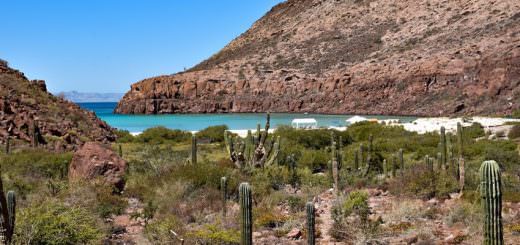
21 day travel trip through Baja California
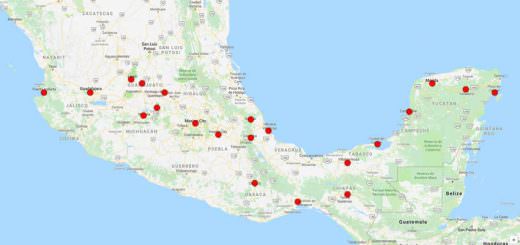
65 day tour around Mexico
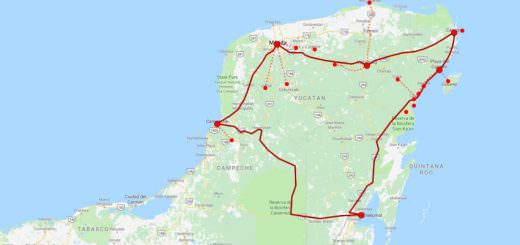
25 day tour around Yucatan Peninsula
10 things to know before going to Oaxaca, one of Mexico's most intriguing destinations

Jan 24, 2024 • 6 min read
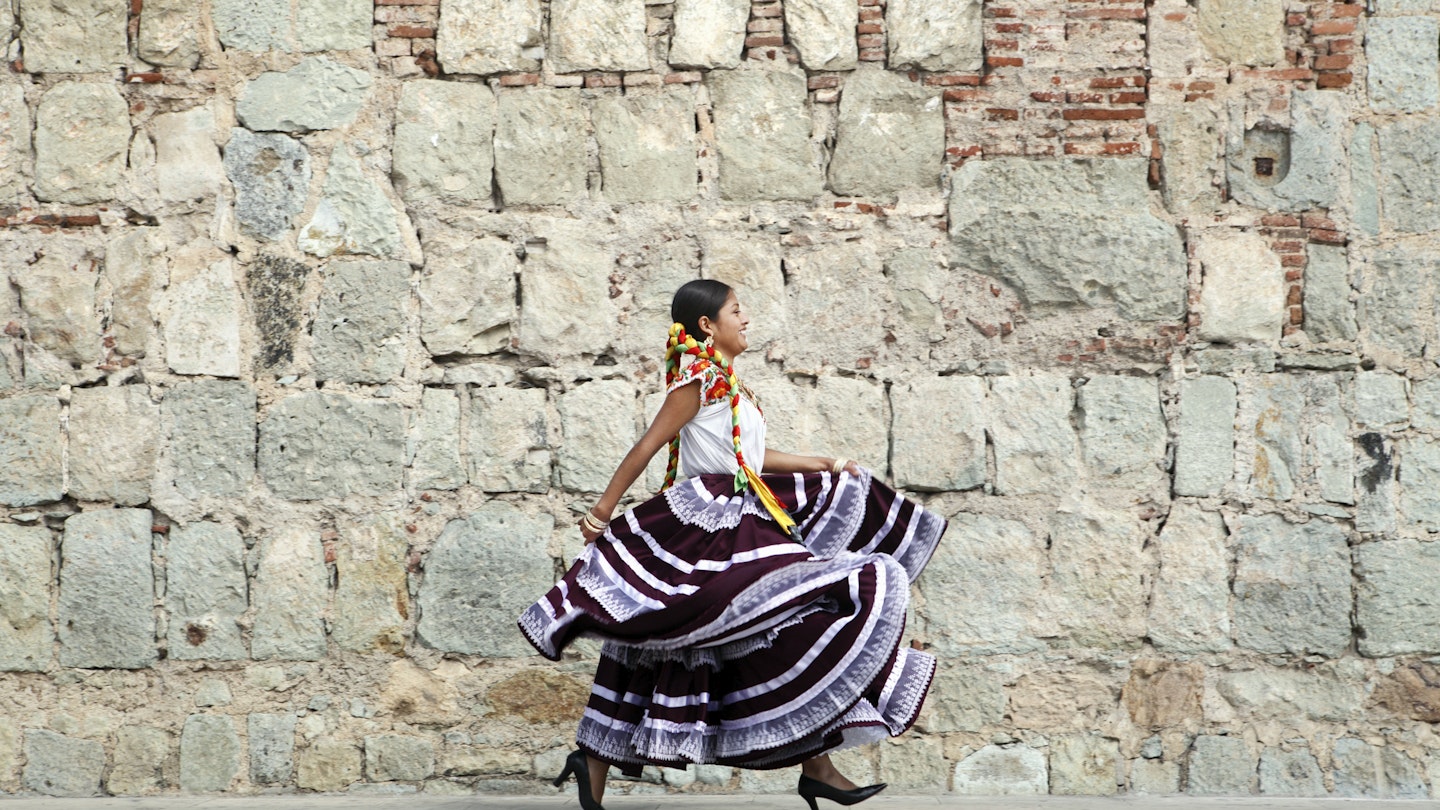
From booking ahead to what to pack, plan your trip to Oaxaca with this know-before-you-go info © Monica Rodriguez / Getty Images
Cultural capital Oaxaca 's combo of authentic regional flavor and big-city grit makes it one of the most intriguing destinations in Mexico .
So whether you're hanging in atmospheric mezcal bars or embracing soulful Day of the Dead festivities, these top tips should serve you well.
Here are 10 things you should know when planning your trip to Oaxaca City.
1. Book ahead for Día de Muertos and Guelaguetza
Reserve accommodations months in advance if you plan on visiting in November for Día de Muertos (Day of the Dead) or in July for the Guelaguetza Festival (a renowned cultural event showcasing Oaxaca's folkloric dance and music).
Sure, room rates are pricier this time of year, but the city’s impressive array of lodging options caters to all budgets, from affordable hostels and guesthouses in spacious old homes to brilliant B&Bs and non-franchise boutique hotels in the heart of the historic center.
2. Safety: don't let the headlines spook you
Despite the much-publicized news about Mexico's drug-related violence, Oaxaca remains a relatively safe place to visit.
Of course it's wise to take common-sense safety precautions, as you would anywhere else, but in general, tourists in Mexico rarely get caught up in disputes between rival drug gangs and that's especially true for Oaxaca, a state that has been mostly spared from the violence.
The US State Department currently has no travel restrictions in place for Oaxaca City, and surrounding areas such as weaving village Teotitlán del Valle , the remote mountain towns of the Sierra Norte and most of the coastal region are considered safe for travelers.
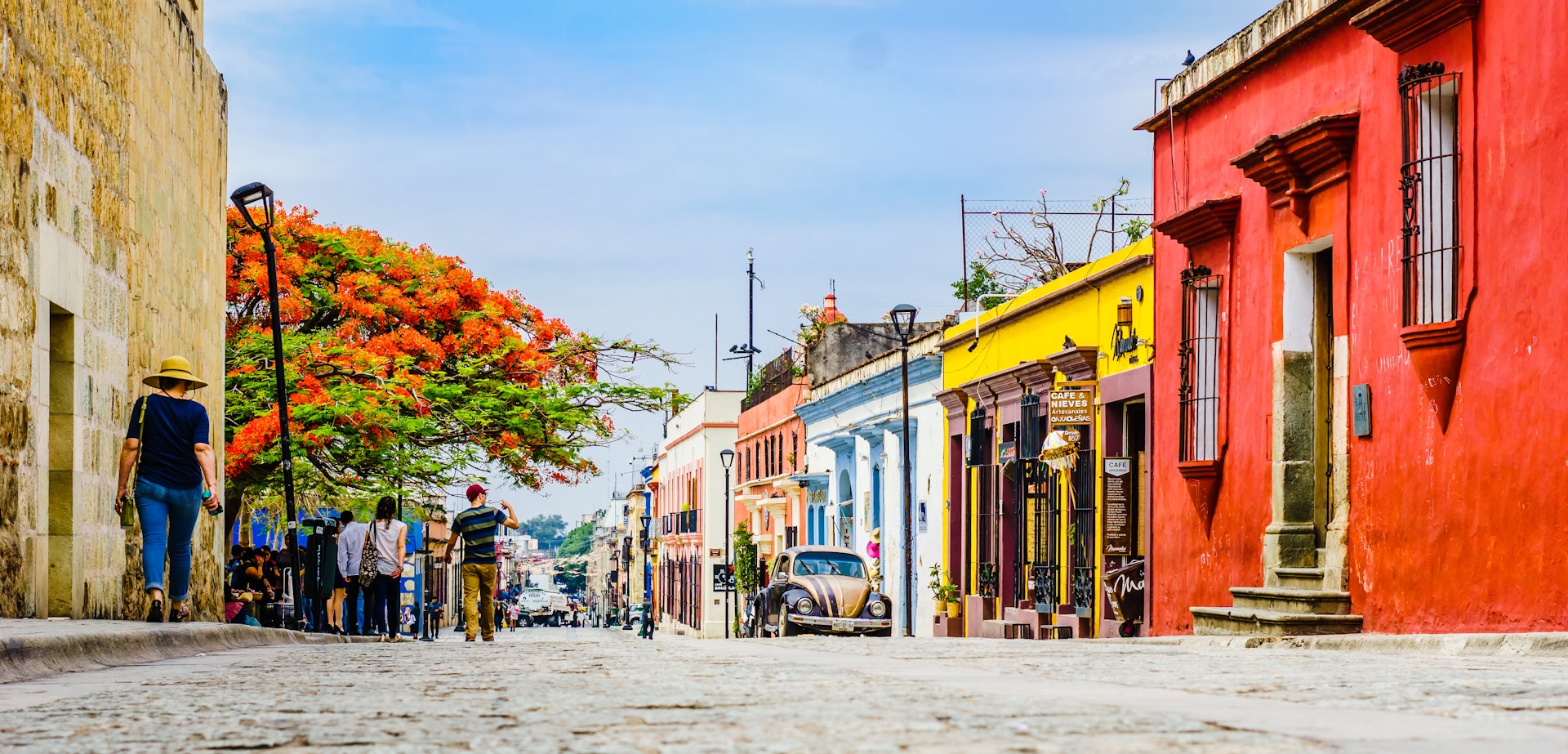
3. Don't drive in Oaxaca's historic center
Driving in Oaxaca City requires patience, particularly in the hectic historic center, where traffic snarls and a lack of street parking can make life miserable.
You'll be much better off on foot when exploring the Centro's noteworthy sights such as the world-class Museo de las Culturas de Oaxaca .
Many downtown streets do not have stop signs or traffic lights but most drivers abide by uno por uno etiquette, meaning the first vehicle to arrive at an intersection has the right of way.
Beyond city limits, traffic is usually light but expect a fair share of poorly maintained roads with a slew of potholes and unmarked speed bumps.
Also, be aware that protesters regularly stage blockades in Oaxaca. If you come across a roadblock, seek an alternative route or you may find yourself stuck for hours.
When renting a vehicle, always take out liability insurance, known in Spanish as daños a terceros . Walk-in car rentals in Oaxaca start at about M$800 per day with liability coverage included, but you can often find better deals online. Most major credit cards provide free collision coverage for auto rentals.
4. Sip, don't shoot mezcal
When bellying up to a mezcal bar, keep in mind that the distilled agave drink packs quite a punch (usually 45% to 50% alcohol content) and it's best sipped slowly to fully appreciate its distinctive aromatic taste.
Duck into a classic mezcalería such as In Situ to savor the flavor of artisanal mezcals.
For day trips out to mezcal country in nearby Santiago Matatlán, consider booking a tour with the experts at Experience Agave . Alternatively, if you foresee a boozy DIY romp, you can always leave the driving to a taxi for about M$500 each way. Salud!

5. Take day trips to explore beyond Oaxaca City
With all its museums, art galleries, uniquely savory cuisine and intoxicating nightlife, you may never want to leave the city, but trust us when we say day trips enrich the overall experience.
For a taste of traditional Oaxaca, venture out to the ancient Zapotec ruins of Monte Albán or head south to visit artisan workshops for an up-close look at how iconic crafts are made, such as alebrijes (surreal wood sculptures based on mythological animals).
6. What to pack: keep it casual and comfy
Even though you'll see fewer people wearing shorts and tank tops in non-beach towns such as Oaxaca City, casual dress is the norm. Don't forget to pack a long-sleeve shirt and long pants for protection against mosquitoes and the sun.
A light jacket is always useful for cool evenings and air-conditioned buses. If you're heading for Oaxaca's sublime tropical coast , take a swimsuit, flip-flops, loose-fitting clothes and insect repellent. For ecotourism outings in the nearby Sierra Norte mountains, bring a heavy jacket.
7. Take your essentials and always carry cash
You'll need a passport for international travel, a driver's license if you're renting a car and credit or debit cards (but always carry cash as some businesses do not accept plastic).
ATMs dispense Mexican pesos and there's usually a 3% international transaction fee tacked on.
You can exchange foreign currency at Oaxaca's international airport or at money exchange offices clustered around the Zócalo , the main square. Most international flights connect through Mexico City.

8. Etiquette: slow down and do the right thing
Oaxacans typically are not sticklers about etiquette but there are several things to be mindful of when interacting with locals. First, remember that life moves at a leisurely pace in this corner of Mexico, so try not to get upset if someone shows up late or if service is slow in a restaurant.
Also, whenever possible, tip generously in restaurants and hotels as gratuities are crucial to the livelihood of workers in Oaxaca, one of the poorest states in Mexico.
Tip 10–15% in restaurants, 5–10% of room costs in a hotel and M$5–10 for parking lot and gas station attendants. Taxi drivers usually do not expect tips, but always welcome them.
When shopping in Oaxaca , prices are fixed in most stores. It's okay to do some friendly haggling with market vendors, but keep a sense of perspective about the amounts you're bargaining over as most folks are just trying to make a living.
9. Don't drink the water, but do eat the street food
Do not drink water from the tap. Instead, purchase bottled water in supermarkets or convenience stores. Most restaurants and hotels serve purified water.
When it comes to street food, it would be a missed opportunity not to take a few risks in a culinary hot spot like Oaxaca. Look no further than the delectable mole tamales at Tamales de San Agustín Yatareni , or the tender pork tacos at the wildly popular Lechoncito de Oro .
You can lessen the chances of getting sick by carrying hand sanitizer and choosing a place to eat that appears to have good hygiene practices.
If you do get a stomach bug, Hospital Reforma is a decent option with 24-hour medical attention. Call 911 for emergencies.
10. Stay calm: there are frequent earthquakes in Oaxaca
Oaxaca is located in one of Mexico's most seismically active regions and is prone to frequent (and occasionally strong) earthquakes, but rest assured that most come and go doing little harm.
If you hear the seismic alert system sound, remain calm and move to an open space away from buildings and power lines.
Should a quake hit while you're on the coast, head inland to reach higher ground.
This article was first published March 2022 and updated January 2024
Explore related stories

Budget Travel
Oct 13, 2023 • 8 min read
Soak up history and art without spending a cent, and find out how to make every peso stretch further with our top tips for visiting Mexico on a budget.

Oct 8, 2023 • 5 min read
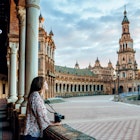
Sep 29, 2023 • 9 min read

Nov 3, 2022 • 5 min read

Oct 25, 2022 • 17 min read
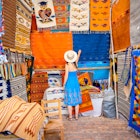
May 1, 2022 • 7 min read
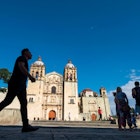
Apr 16, 2022 • 5 min read
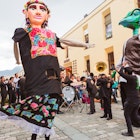
Apr 14, 2022 • 5 min read

Apr 13, 2022 • 8 min read
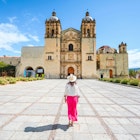
Mar 30, 2022 • 6 min read
It has peaks almost 10,000 feet (more than 3,000 metres) high, caverns among the deepest in the world, virgin beaches, hidden jungles, and luminous valleys that house populations where, as a crucible, cultures of all people who once lived in its midst come together.
Oaxaca, the State Capital, declared Humanitys Cultural Patrimony by UNESCO, owes its fame to the beauty and harmony of its architecture, the richness of its cultural traditions, the wide variety of its typical foods, and its soft temperate climate, spring-like throughout the year.
This Award-winning comprehensive Tourist Guide contains all the information you will ever need about Oaxaca. With more than 1000 photographs and 400 pages of text it describes all the natural and cultural attractions the city and state of Oaxaca have to offer. You will also find travelogues from other visitors, an up-to-the-minute weather forecast, maps, travel tips and much more!
Before leaving please sign our Guestbook, and when you return from Oaxaca feel free to send us your travelogue. For now I wish you a...
http://oaxaca-travel.com
--> The information contained within this site is not official ; the site is not associated with the Government of Oaxaca.
Advertisements:
- Search Please fill out this field.
- Manage Your Subscription
- Give a Gift Subscription
- Sweepstakes
- Destinations
This Mexico Hot Spot Was Just Named the Best City in the World by T+L Readers — Here's How to Plan the Perfect Trip
Oaxaca is the No. 1 city in the world, according to T+L readers. Here is a rundown of the best things to do.
:max_bytes(150000):strip_icc():format(webp)/Brad-Japhe-author-pic-02ce5d707440449fafcd35e116dfa76d.png)
The Best Hotels and Resorts
Best things to do, best shopping, best restaurants, best times to visit, how to get there, how to get around.
Stephanie Pollak/Travel + Leisure
Boasting an endless supply of mezcal and mole, Oaxaca de Juárez is undoubtedly one of the ultimate food and drink destinations on the planet. So, it's perhaps no surprise that in Travel + Leisure's 2023 World's Best Awards , it was named the best city in the world . (The city is commonly referred to as Oaxaca, but shouldn't be confused with the eponymous state it's a part of.)
This dynamic city in southwestern Mexico is home to vibrant culture, beautiful weather, and some of the country's most iconic architecture. "The most remarkable thing about Oaxaca is the deep presence of this pre-Colombian culture in all aspects of contemporary life — the mingling and mixing of Indigenous, Spanish, and contemporary Mexican influences are unique and unforgettable," said Zachary Rabinor , a member of T+L's A-List of travel advisors and the CEO of Journey Mexico .
You could spend several weeks here and not even scratch the surface — if you weren't planning correctly, that is. "Oaxaca is a quintessential and magical destination that combines culture, nature, and adventure, with a year-round spring-like climate due to its idyllic location nestled into a fertile valley of the Sierra Madre Sur Mountains," Rabinor said. "It offers a charming, pedestrian-friendly UNESCO World Heritage Site City Center with impressive architecture, museums, markets, restaurants, shopping, and nightlife, while the surrounding valleys harbor incredible Indigenous villages that conserve century-old artisan traditions, dress, language, culture, and lifestyles."
To that end, we've compiled a list of the best things to do, see, and sip while exploring this exciting part of the world.
Oaxaca features all manner of lodging, ranging from unassuming bed-and-breakfasts to historic converted convents, all the way up to the most opulent and palatial of modern luxury. You'll find a little bit of each in this city.
Hotel Casa Santo Origen
If you're not afraid to spend a few hundred per night, you can enjoy the modern boutique beauty of Hotel Casa Santo Origen . Just 15 minutes from the city center, each of the eight suites in this small hotel is named after a unique region of the state of Oaxaca, and decorated with local art.
Book Now: Hotels.com | Expedia | Trip Advisor
Quinta Real Oaxaca
If you want something more old-fashioned, check in at Quinta Real Oaxaca — a 16th-century nunnery retaining a thorough throwback charm without sacrificing modern amenities. The property boasts views of courtyards and the streets of Oaxaca and even has an idyllic garden pool.
Casa Silencio
If you'd prefer to stay in the heart of mezcal country, you'll want to book your stay at the stunning Casa Silencio , which is about an hour outside of Oaxaca. This upscale shrine to agave features multilevel guest rooms, a spa, and Michelin-caliber cuisine and mixology. And, oh yes, a working distillery pumping out the native liquid.
Downtown Oaxaca
Within Oaxaca, Rabinor said taking a day to leisurely explore the city center and downtown is the way to go. "Take your time strolling through the market and be sure to try pan de yema con chocolate ," Rabinor said. "Find a spot in one of the many plazas and enjoy people-watching, as it's not uncommon to witness a colorful calenda (street procession) happening at any time of the week. These processions are part of the numerous festivals that celebrate various personal and communal events in the lives of the local community."
Hierve el Agua
When it's time for sightseeing beyond the city, one of the top natural wonders to explore is Hierve el Agua . These calcareous rock formations in San Lorenzo Albarradas look as if a waterfall has been frozen to the side of a cliff. Established hiking paths bring you right up to the cascade's edge. If you're looking to take a dip in the human-made pools, aim to get there early to avoid crowds.
Susmita Baral/Travel + Leisure
Monte Albán
Perched atop a 1,300-foot tall plateau, Monte Albán is a UNESCO World Heritage Site containing a well-preserved terraced pyramid and other pre-Columbian cultural artifacts. Much of what you'll explore here was built by the Zapotecs, an Indigenous people who are thought to have settled in the region as early as 800 B.C.E. It is the second-largest ceremonial site in all of Central America. "Monte Albán is not only a treasure of ancient history, but also a UNESCO World Heritage Site that holds significant importance in understanding the cultural heritage of Oaxaca and the surrounding region," Rabinor told T+L.
Mezcal Experiences
Mezcal is a distilled agave spirit traditional to the Oaxacan region. It has been made here for centuries using techniques that have largely resisted the prying hands of modern machination. Whether you drink or don't, a mezcal experience is an enriching experience. Rabinor noted that it supports local communities that rely on the industry, helps people "understand the hard work and history that goes behind producing [mezcal], and lets travelers 'learn and appreciate one of the world’s most complex spirits.'" Running down the many palenques — farm distilleries — where it is made and the enchanting sipping parlors where it is served would require an entirely separate article. ( In fact, this is a good one right here. ) But assuming you're starting your liquid journey in the city of Oaxaca, these are four tasting opportunities you should not skip over: Mezcalería In Situ for a broad collection of bottles and emphasis on education; El Distilado to enjoy how mezcal pairs with the local cuisine; and Selva Oaxaca to see how it mixes into artisanal cocktails. For a sip with a view, take your thirst to the rooftop of Puro Burro , a hip watering hole founded by native agave impresario, Asis Cortes — the man behind Mezcal Dixeebe .
Oaxacan Beaches
The state of Oaxaca is home to over 300 miles of coastline, so there are plenty of beaches to explore on a weekend getaway. Puerto Escondido , for example, is amassing a lot of tourist attention from beachgoers these days. (A flight from OAX to Puerto Escondido — PXM — is about 45 minutes.)
There's also Mazunte, with its cerulean surf crashing into the jagged shore. (Check out the Mexican Turtle Center in town, dedicated to the preservation of everyone's favorite slow-moving reptile.) And if you want to speed things up a bit, head several miles east along the coast to the town of Zipolite . There are powerful waves pummeling this sand, popular with surfers. Though others opt to simply lay and tan, enjoying the sunset over surrounding cliffs. Or you can snorkel the protected coral reefs of neighboring Huatulco National Park.
Oaxaca is filled with small boutiques with handmade goods for every budget. Mercado 20 de Noviembre is a market with goods like sandals, bags, homeware, and more.
Rabinor recommended not skipping the artisan communities outside of town, such as San Martín Tilcajete, San Bartolo Coyotepec, and Teotitlan del Valle. "[This is] where skilled communities create exquisite works of art, including colorful alebrijes (wooden figurines), intricate black pottery, and vibrant textiles," he said.
For food, consider stopping by Mercado de Abastos. You can book a tour of the market through the area's most popular guide: Omar Alonso . "This is where locals go to buy everything," Alonso told T+L. "During holidays, it's particularly packed as we gather the ingredients we'll need to offer to our guests that come during the festivities." And for mezcal, visit Mezcaleria Cuish for both a drink and some bottles to-go.
You'll want to savor the world-class cuisine offered throughout Oaxaca and you'll have no trouble finding it when you're strolling the streets.
Mercado 20 de Noviembre
The hub's bustling market scene is a great place to absorb a bit of everything. Mercado 20 de Noviembre is famous for its variety of food stalls featuring everything from baked goods and pastries to an entire aisle of roasted proteins: "El Pasillo de las Carnes Asadas." Here, you can order trays of meat that get cooked fresh in front of you. For something smaller and more vegetarian-friendly, explore Mercado Organico La Cosecha .
Cesar Rodriguez/Bloomberg via Getty Images
Restaurante Casa Oaxaca
If you're craving more of a sit-down experience, make a reservation at Casa Oaxaca's restaurant from chef Alejandro Ruiz. Absolutely order the tableside guacamole and explore Oaxacan cuisine with dishes like mole negro , and coloradito .
One of the top-rated restaurants in the city is Origen , helmed by 2016 Top Chef winner Rodolfo Castellanos. Pro tip: try the grilled octopus and chicharrones.
El Lechoncito de Oro
Be sure to save room for El Lechoncito de Oro , which is open nightly from 8 p.m. until … whenever. This unassuming tented stall is an after-hours institution. They specialize in mouth-watering seared pork tacos covered in crispy pork rinds and spicy salsa verde.
Bar La Giralda
"Every time I'm [in Oaxaca], I must stop into Bar La Giralda for my favorite michelada on the planet," author Javier Cabral, who co-wrote "Oaxaca: Home Cooking From The Heart Of Mexico," told T+L . "They use pasilla chiles in the base. The more you drink, the more botanas [snacks] arrive."
Read More : Where to Eat and Drink in Oaxaca, According to People Who Are Obsessed With Eating and Drinking in Oaxaca
Oaxaca is a big state — a little larger than the state of Indiana — occupying several tropical and subtropical climates. The temperature can vary wildly depending on where you're visiting and when. "The best time to visit Oaxaca depends on your preferences for weather, cultural events, and crowd levels," Rabinor said.
The good news is that it's almost always pleasantly warm and abundantly sunny. The one exception is the rainy season, which extends from May into September. Rabinor said that while the rainy season "brings occasional showers and higher humidity" it also "offers lush landscapes and fewer visitors.
July is a popular month, according to Rabinor, that can be crowded since it overlaps with the cultural festival of Guelaguetza , also called the Lunes del Cerro or "Mondays on the Hill."
Gabriel Perez/Getty Images
Early November is also a perennially popular time to visit. The weather is dependably inviting, as it's the start of the dry season, which extends through April. You'll also experience Día de los Muertos celebrations, bringing mirth, marigold, and mesmerizing pageantry into the streets of cities and villages throughout the country. Even if you miss these particular festivities, arrive sometime between fall and spring break, and you'll leave with little to no regrets.
Read More : The Best Time to Visit Mexico for Good Weather and Affordable Prices
Oaxaca is most easily reached through Xoxocotlán International Airport (OAX) — a smaller-sized airport. Direct service from the United States arrives by way of Los Angeles, Dallas, and Houston. One way to snag a bargain fare is to fly into Guadalajara (GDL) or Mexico City (MEX), and then take a domestic carrier to OAX.
Oaxaca is a walkable city so you don't need to rent a car. While a vehicle is helpful when visiting sites outside of the city, like Hierve el Agua, you can opt for a local car service to drive you to farther destinations. Should you want transportation from point A to point B within the downtown, cabs are readily available. To get to and from the airport, you can take a taxi, bus, or rental car.

15 Top-Rated Tourist Attractions in Oaxaca
Written by Bryan Dearsley and Meagan Drillinger Updated Dec 25, 2023 We may earn a commission from affiliate links ( )
In the heart of the state of the same name and surrounded by lush tropical vegetation and the high mountains of the southern Sierra Madre, Oaxaca is one of Mexico's most beautiful cities.
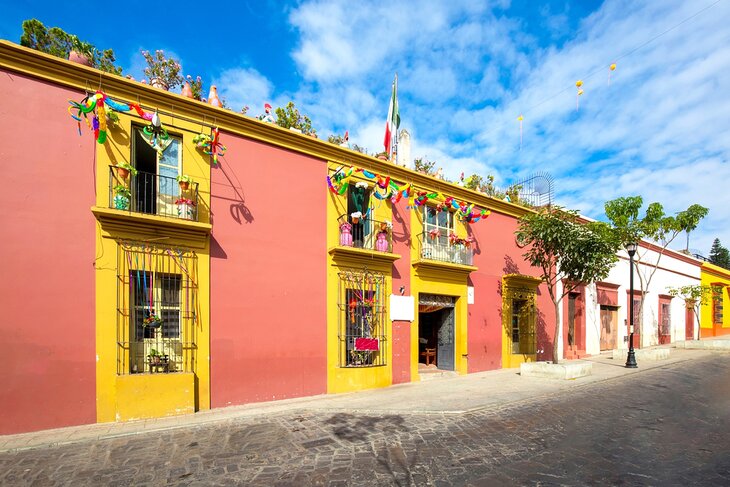
Displaying an attractive mix of both Indian and Spanish elements, this UNESCO World Heritage Site offers many great sightseeing opportunities and rewarding places to visit. It has successfully preserved its unique character and is a delight to explore thanks to its many attractions. Get your camera ready — every facade and street corner is primed and ready for some serious Instagram content.
First settled as far back as 6000 BCE, it was part of the Aztec empire until the Spanish arrived in 1521 and soon after established the royal city of Oaxaca, a name derived from the original Aztec fortress. In addition to its fine architecture, travelers are drawn here for the city's rich cultural calendar, a highlight of which is the famous Guelaguetza , an Indigenous festival held in July with plenty of traditional dancing, costumes, music, food, and crafts.
To learn more about this and other fun things to do in this beautiful part of Mexico, be sure to refer to our list of the top tourist attractions in Oaxaca.
See also: Where to Stay in Oaxaca
1. Oaxaca Cathedral
2. squares and markets: zócalo and mercado benito juárez, 3. church of santo domingo de guzmán, 4. monte albán, 5. the basilica of our lady of solitude, 6. the rufino tamayo museum, 7. museo casa juárez: fit for a president, 8. the ex-monastery of santiago apóstol, 9. san jerónimo and santa maría del tule, 10. cultural centre of oaxaca, 11. oaxaca ethnobotanical garden, 12. museum of contemporary art & textile museum, 13. hierve el agua, 14. day trips from oaxaca, 15. celebrate the day of the dead, where to stay in oaxaca for sightseeing, map of attractions & things to do in oaxaca.
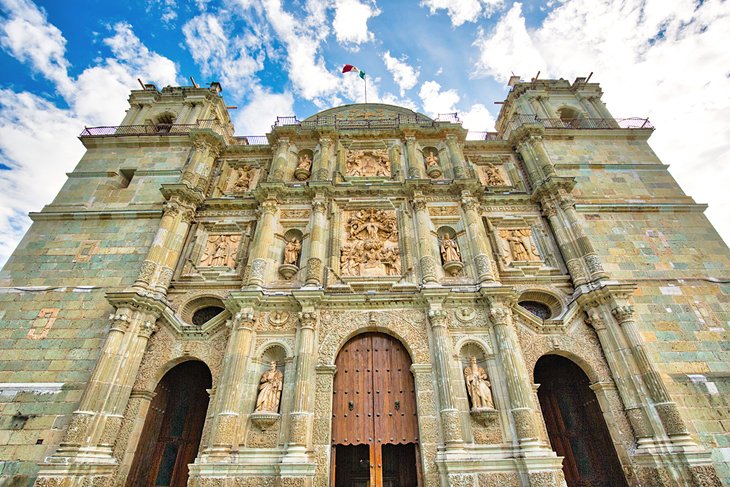
Construction of Oaxaca Cathedral — the Cathedral of Our Lady of the Assumption (Catedral Metropolitana de Nuestra Señora de la Asunción) — began in the mid-16th century and lasted almost 200 years.
Situated on the northwest side of the city's main square, the Zócalo , the cathedral is notable for its sturdy building style with its two low towers, rebuilt in their present style after being destroyed by an earthquake in 1931, a not-uncommon occurrence in the region.
The original clock, the mechanism of which is completely carved from wood, was presented to the church by the King of Spain upon its completion, just one of a number of attractive features of its pleasant Baroque façade with its finely worked figures and bas-reliefs on its columns.
The interior of this top Oaxaca tourist attraction is also worth seeing due to its Neoclassical influences; its eight finely-engraved glass windows; and the organ, parts of which date back to 1712.
Address: Av Independencia S/N, Centro, 68000 Oaxaca, OAX
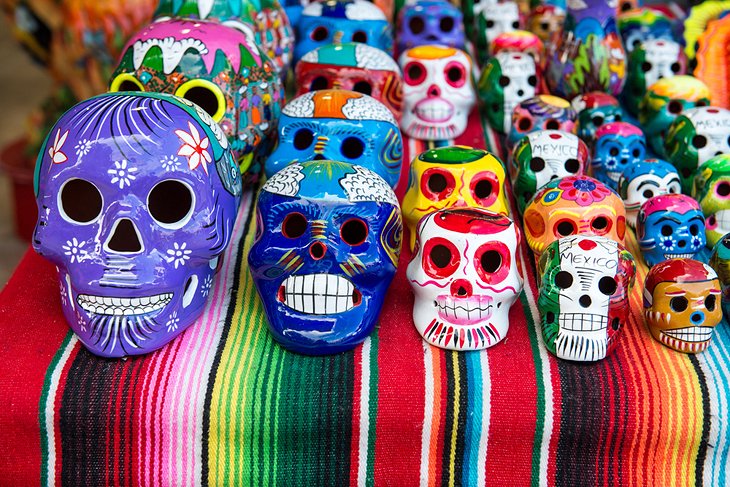
Many of the most important of Oaxaca's best places to visit are to be found in the city's historic downtown core, an area centered around its central square, or Zócalo: the Plaza de Armas .
In addition to its attractive bandstand, its beautiful old trees, and countless cafés, it is here that many of the city's most important festivals and events are held, including the extremely colorful Fiesta de Rábanos — quite literally, the Night of the Radishes — which takes place here on December 23rd each year with festivities such as fireworks, dances, and parades spilling over to Christmas (and yes, there's even a radish-carving contest).
Another important focal point is Mercado Benito Juárez, a colorful covered market that is especially lively on Saturdays when local Indios flock here to buy and sell everything from produce and woven articles to earthenware and leather goods.
Other colorful markets include the daily Mercado de Abastos and the Mercado de Artesanias with a focus on textile goods.
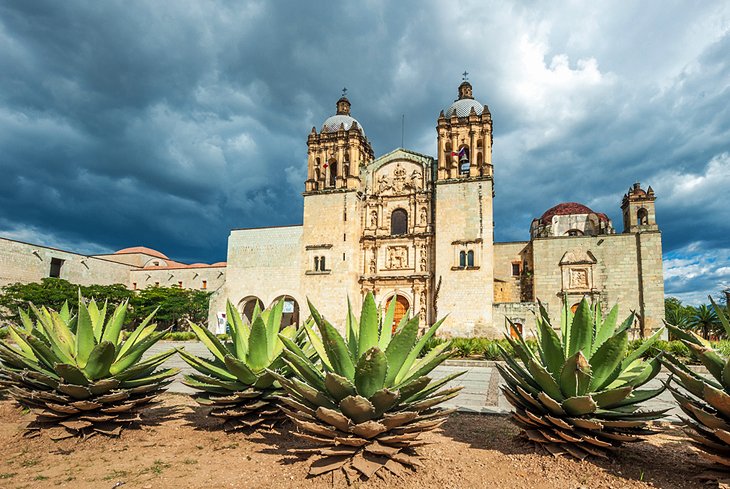
The splendid Church of Santo Domingo de Guzmán (Templo de Santo Domingo de Guzmán), a Dominican church founded in 1575, is well worth taking the time to explore. Along with the adjoining convent — home to the must-visit Cultural Centre of Oaxaca — this impressive structure was built with two-meter-thick walls to make it almost completely earthquake-proof.
Notable for its numerous niches filled with statues, set along its impressive Baroque façade, this large church complex boasts interior walls and ceilings festooned with a wealth of gilded ornamentation and bright sculptures, creating an overall impression that's more palace than church. This is offset a little, though, by the many rustic statues that lend the nave and chapels a distinctive Mexican tone.
Also of interest, in the ceiling above the entrance, is a vine from whose golden branches and leaves grow 34 portraits depicting the family tree of St. Domingo de Guzmán, founder of the Dominican order who died in 1221.
Other highlights include its 11 chapels, the largest and most beautiful being the Rosary Chapel (Capilla de la Virgen del Rosario), which has its own choir and sacristy, and a lavishly decorated altar with a figure of the Virgin Mary that's considered a jewel of Mexican Rococo.
Address: Calle Constitución #101, Centro, 68000 Oaxaca, OAX
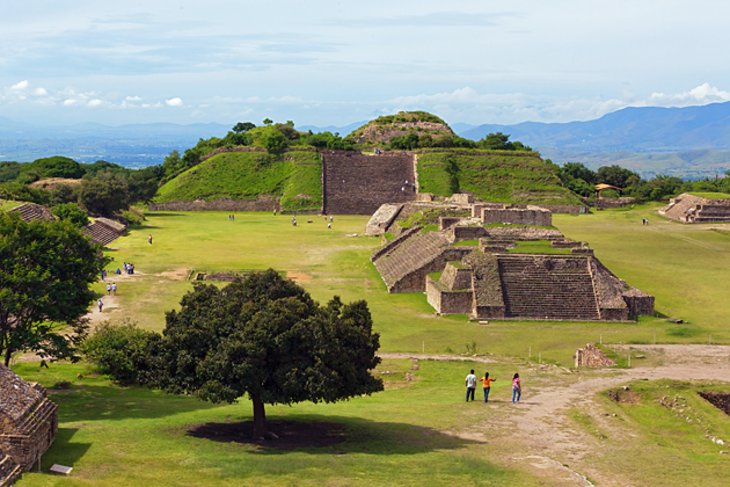
The historic settlement of Monte Albán (Zona Arqueológica de Monte Albán), just eight kilometers west of Oaxaca and easily accessible by tour bus or taxi, covers an area of some 40 square kilometers and for 2,500 years was an important place of worship for a number of different population groups.
The center of the ruins, rising on a man-made platform 400 meters above the Oaxaca Valley, is possibly Latin America's oldest and most impressive Pre-Columbian site. Founded in the sixth century BC, the city was once home to some 35,000 people in its heyday.
Highlights include the spectacular Grand Square (Gran Plaza) measuring 200 meters wide by 3,300 meters long and forming the center of the archaeological ruins, along with the Ball Court (Juego de Pelota), a number of large pyramids, and a palace with an inner courtyard and cruciform tomb.
Expect to spend the best part of a day exploring the ruins and the Monte Albán Ruins Museum with its many sculptures, ceramic figures, jewelry, and displays relating to the excavation of the site.
If time allows, you may also want to include nearby San José Mogote on your list of pre-Columbian sites to visit.
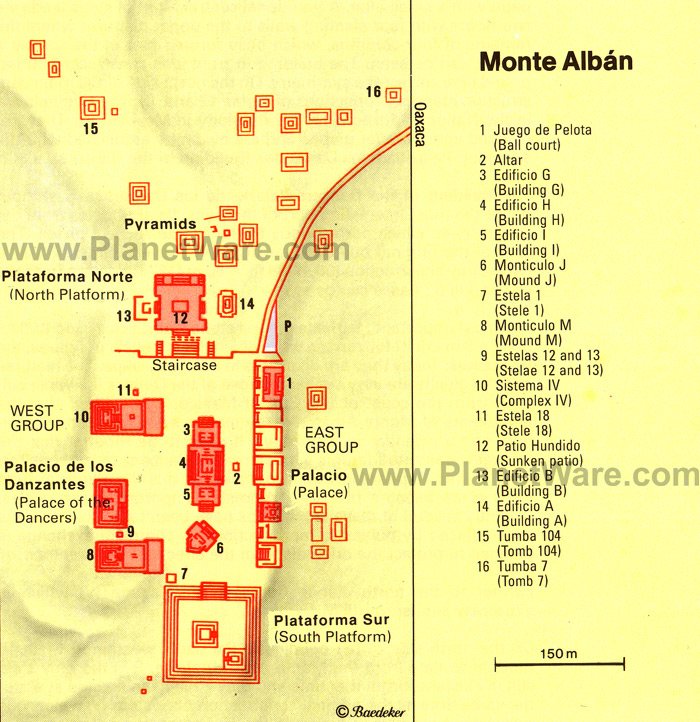
The Basilica of Our Lady of Solitude (Basílica de Nuestra Señora de la Soledad), dedicated to the patron saint of Oaxaca, was constructed of green cantera, a stone unique to the area, between 1682 and 1690 and is one of the city's finest religious sites.
In addition to its attractive atrium built from limestone blocks surrounded by a covered walkway, it's also notable for its figure of the Virgen de la Soledad with her black robe of velvet embroidered with gold and other precious stones, including a large pearl on her forehead. Also of interest is the old Baroque organ, built in 1686 and which is still in regular use.
Other notable nearby churches include San Felipe Neri with its many elaborate altars, San Juan de Dios with an Indian depiction of the conquest, and San Agustin , notable for its façade reliefs of St. Augustine.
Address: El Calvario 107, Centro, 68000 Oaxaca, OAX
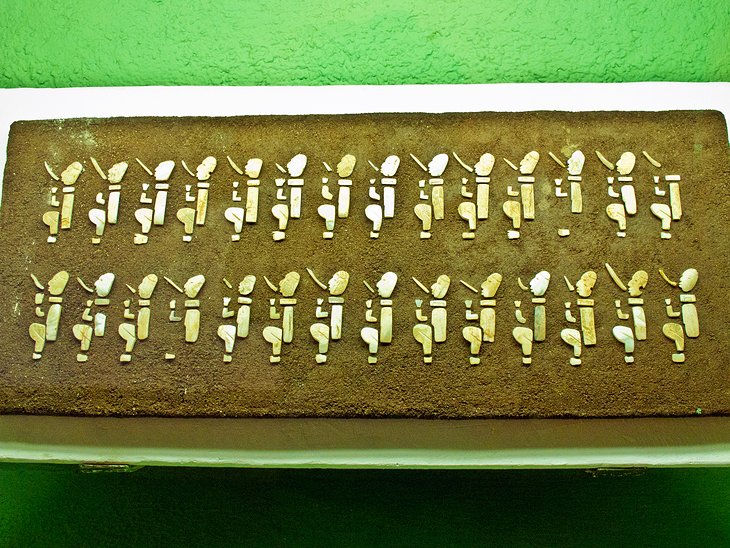
The Rufino Tamayo Museum (Museo Rufino Tamayo), presented to the state by famous Mexican artist Tamayo, lies in an old palace just a short walk away from the Zócalo .
In addition to displaying archaeological objects from Mexico's many Indian cultures, this rich collection of Pre-Columbian art was established to ensure the more than 1,000 historic artifacts collected over Tamayo's lifetime remained intact and safe from illegal traders.
Also worth a visit is the Graphic Arts Institute of Oaxaca (Instituto de Artes Gráficas de Oaxaca, or IAGO), founded by another Mexican artist, Francisco Toledo, and containing numerous fine paintings from across Latin America, as well as a cultural center, a library with many rare manuscripts, and a music library.
Address: Av Morelos 503, Centro, 68000 Oaxaca, OAX
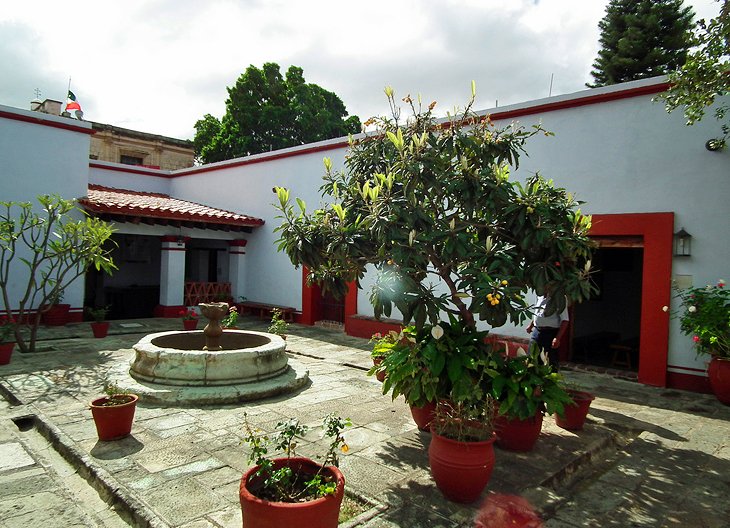
The humble looking home at García Vigil 609, now a museum, is famous in Mexico for being the place where much revered President Benito Juárez lived as a servant from 1818 until 1828. Don't be deceived by the home's rather plain exterior.
Inside, the complex opens up into a large central courtyard and houses Museo Casa Juarez , a large museum containing related memorabilia (the President was in fact born in 1806 in nearby Guelatao).
Fun activities include exploring the museum's portrayal of the daily life of both working and middle classes in the 19th century, as well as the period furnishings in the dining room and kitchen.
Also interesting is the Oaxaca Stamp Museum (Museo de la Filatelia Oaxaca), a fun little attraction that features collections of stamps and artworks from local surrealist artists, along with a gift shop and patio café.
Address: Calle de Manuel García Vigil 609, Centro, 68000 Oaxaca, OAX
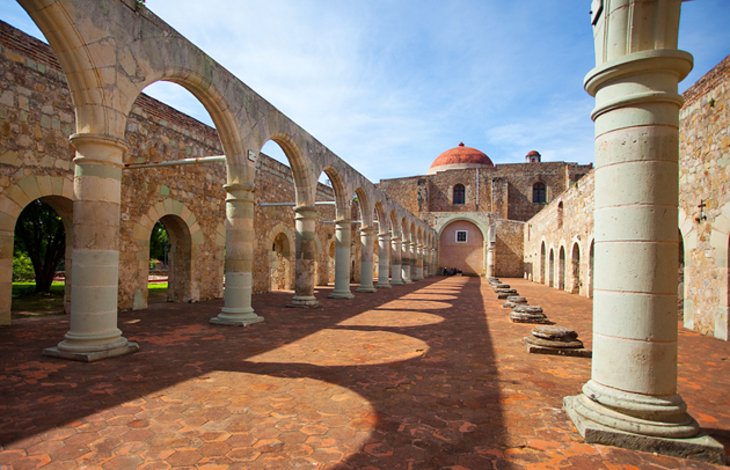
Just 12 kilometers south of Oaxaca is the small town of Cuilapan de Guerrero , once famous for manufacturing cochineal, a brilliant red dye made from the insects of the same name. These days, the town is an important tourist destination thanks to the splendid old Church and Ex-monastery of Santiago Apóstol.
This enormous hillside structure was started in 1555 and is notable for its Renaissance façade and two inner colonnades, part of which collapsed in an earthquake, and a stone pulpit reached by a small flight of steps.
Although abandoned in 1663, its three-meter-thick walls have stood the test of time, as have the murals in the entrance depicting the history of the order. The terrace on the second floor, where the monks' cells were located, offers great views, and, on the rear wall, an interesting stone plaque bears both the Pre-Columbian calendar inscription "10 reeds," as well as the Christian year 1555.
In the church, the only part of the complex still used, the most interesting feature is the tomb of the last Zapotec princess, the daughter of the ruler Cocijo-eza.
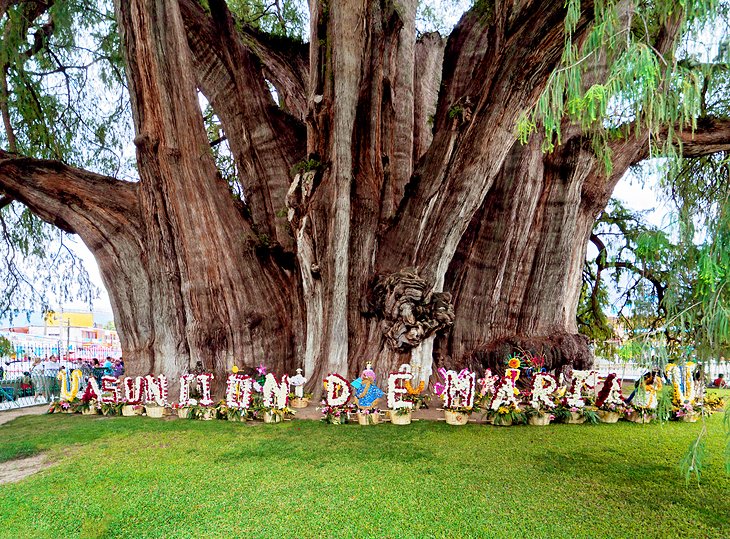
A short drive east of Oaxaca is the small village of Santa María del Tule, famous for the ancient Tree of Tule (El Arbol del Tule). This massive cypress tree, 40 meters wide and 42 meters tall, stands in front of a charming little church and is estimated to be around 2,000 years old.
A farther 10 kilometers away is the equally interesting town of Tlacochahuaya , home to the 16th-century San Jerónimo Church. Highlights include its richly decorated interior crammed full of colorful paintings created by local Indians who portrayed their artistic and religious ideas with paintings of stars, flowers, birds, suns, and angels.
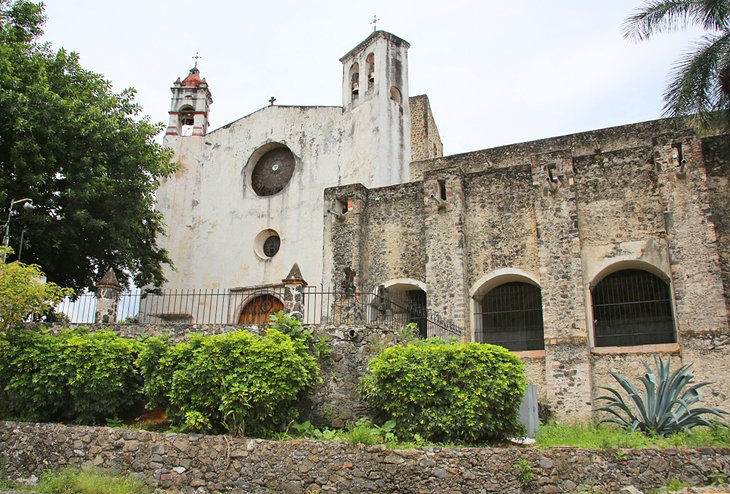
The Cultural Centre of Oaxaca (Centro Cultural Santo Domingo), also often referred to as the Regional Museum of Oaxaca (Museo Regional de Oaxaca), is housed in the former convent Church of Santo Domingo de Guzmán.
One of the top places to visit in Oaxaca, this must-see attraction is well regarded for its excellent collections related to native culture, as well as for its ecclesiastical and secular exhibits from the colonial period. The superb ethnological collection includes costumes, masks, jewelry, ceremonial, and household implements belonging to the Indian tribes from the region, together with archaeological finds from surrounding ruins.
The highlight of the archaeological exhibition is the Mixtec treasure trove of gold, jade, turquoise, and other semi-precious stones found in 1932 in nearby Monte Albán , and from which elaborate bracelets, necklaces, earrings, breastplates, and masks were produced. Historical documents and items from the old church and the convent, including the refurbished old Spanish kitchen, are also of interest.
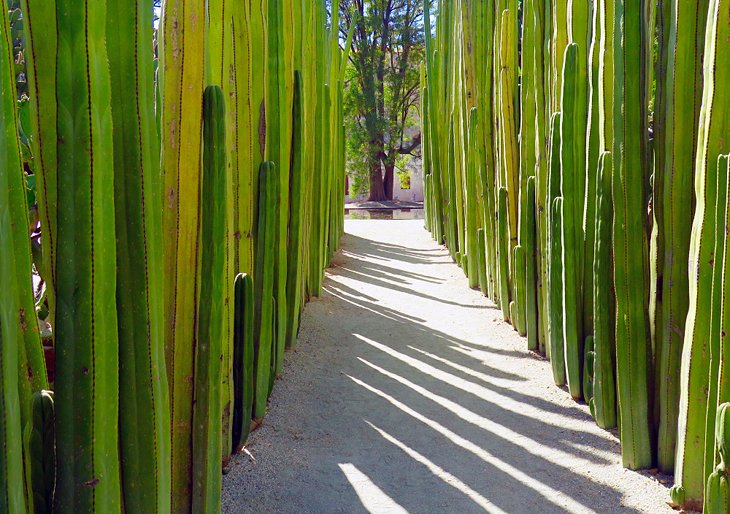
A fun thing to do in summer and spring when its gardens are in full bloom, Oaxaca Ethnobotanical Garden (Jardín Etnobotánico de Oaxaca) sits on nearly 2.5 acres adjacent to the Church of Santo Domingo de Guzmán, and is well worth adding to your travel itinerary.
Created by a group of local artists known for their work with other Oaxaca cultural attractions, the garden sets out to explore the important relationship between we humans and the plant life that surrounds us.
With a particular focus on the state of Oaxaca — both its people and its plants — this attractive and easy-to-navigate garden occupies a part of the old monastery grounds and opened to great fanfare in 1998. Highlights include a wide variety of native species, a rescue area, medicinal plants, as well as species used for centuries in traditional recipes. English-language guided tours are available.
If botany is your thing, consider a visit to Benito Juárez National Park. Located just five kilometers outside the city, it was founded in 1937 and covers a massive 7,000 acres of land and features a mix of pine and oak forests, as well as tropical deciduous trees. A number of hiking paths are available to explore.
Address: Reforma Sur n, RUTA INDEPENDENCIA, Centro, 68000 Oaxaca de Juárez, Oax
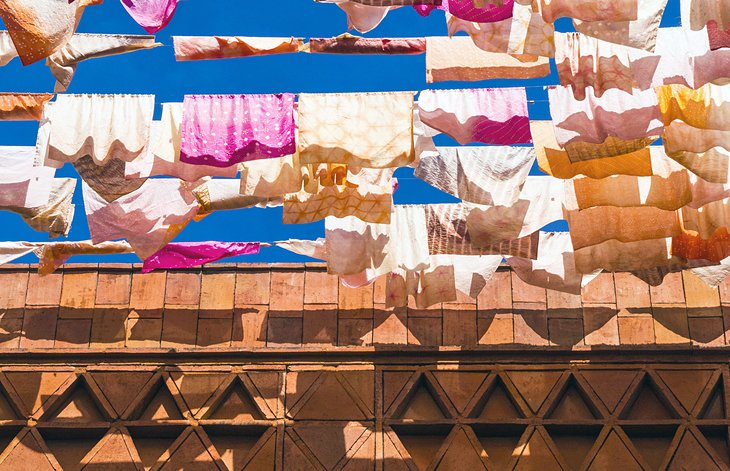
The Museum of Contemporary Art , or MACO — Museo de Arte Contemporaneo de Oaxaca — is a must-visit in Oaxaca for art lovers. With a broad mandate to showcase contemporary art from across the world with traditional local art, MACO features an eclectic array of paintings from locals including Rufino Tamayo and Francisco Toledo, along with creations in disciplines such as graphic art, sculpture, and pottery.
The building itself-an old colonial affair built in the late 1600s-is a delight to explore, whether as part of a guided tour or on your own.
Also of interest is the city's Textile Museum (Museo Textil de Oaxaca). Highlights of what's regarded as one of the top free things to do in Oaxaca include exploring colorful displays of the region's traditional textile crafts, a mix of permanent and visiting exhibits - including examples from abroad - as well as workshops, lectures, films, and a well-stocked library.
Guided tours are available, and a shop is located on-site selling examples of local textiles and related goods.
Address: Calle Macedonio Alcalá 202, Centro, 68000 Oaxaca de Juárez, Oax., Mexico
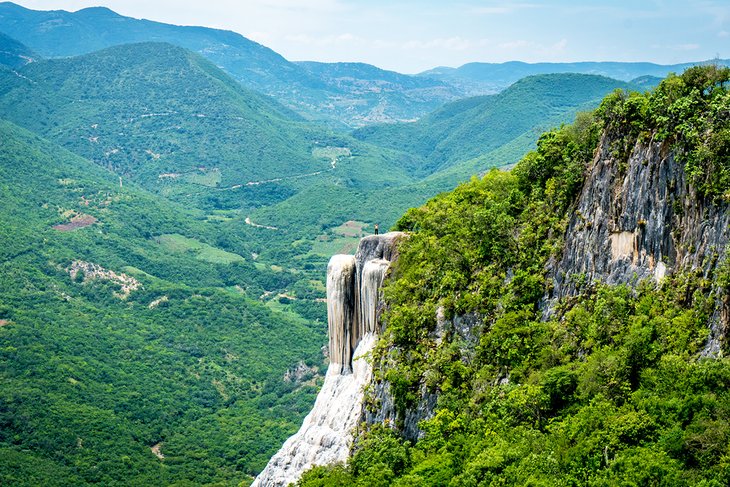
Deep in the jungle-covered mountains outside Oaxaca is a stunningly beautiful natural surprise. From a distance, it looks like a frozen waterfall, flowing in perpetuity from the side of a staggering cliff. In reality, this is Hierve El Agua, a petrified waterfall and series of small, natural pools - and yes, you can swim in them!
Hierve El Agua, which translates to "boiling water," was created from mineral water that pushed through the limestone rock and deposited the seemingly frozen falls over the mountain's edge. The two mineral pools that are at the top of the falls are yellowish in color thanks to the small amount of sulfur in them.
Today Hierve El Agua is one of the top tourist attractions in Oaxaca, but in the past, the effervescent springs were used to supply water to canals and terraces that led down into the valley.
The best way to visit the site is to get there early before the tour buses show up. That way you may even have the entire site to yourself. However, the easiest way to visit Hierve El Agua is to sign up for a tour.
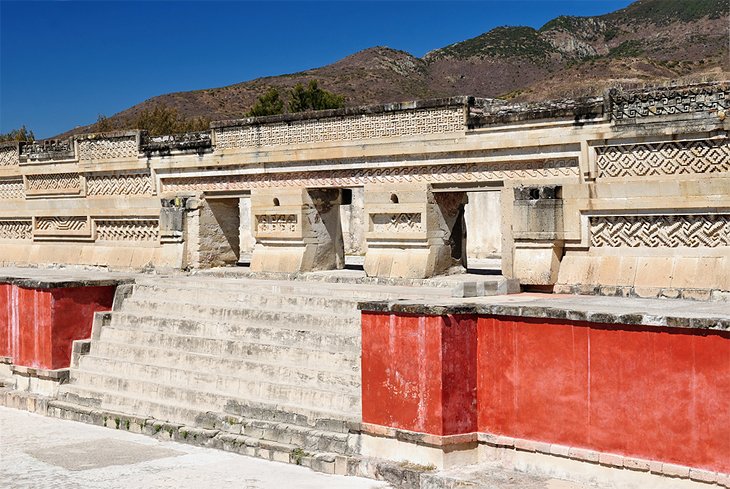
Given Oaxaca's subtropical location in the beautiful Oaxaca Valley, there are many fun day trips and excursions to the splendid countryside surrounding the city. One of the nicest short trips is to the town of Dainzú , just 20 kilometers east of Oaxaca and the location of a settlement inhabited from about 500 BCE until 1400 CE.
One of the most important of its buildings has a pyramid-shaped base and is built in a style similar to that of the north platform at Monte Albán. A few miles farther is Lambityeco with a small pyramid along with seven ancient tombs, including one with two heads and names chiseled into its façade.
Another small town worthy of a road trip is Huijazoo , just a short drive north of Oaxaca , where nine tombs were discovered, the most remarkable being Tomb 5, notable for the serpent mask forming its entrance and an interior furnished with sculpted columns and colored murals depicting rulers or priests and dating from the 8th to the 10th centuries.
Finally, be sure to visit the ruined site of Mitla, on the edge of the village of the same name, just 40 kilometers to the east of Oaxaca's city center. One of Mexico's most famous archaeological attractions, this fascinating site includes elaborate stone ornamentations unsurpassed in the history of Mesoamerica. Sightseeing highlights include the Hall of Columns with its altar, and the Patio de las Grecas , a small inner courtyard surrounded by long narrow rooms where the city's high priest lived.
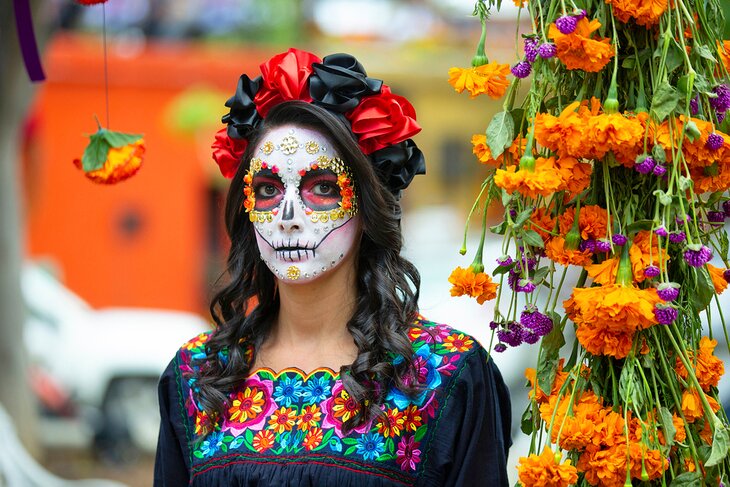
Day of the Dead, or Dia De Los Muertos, is one of the most important traditional celebrations in the country of Mexico. All across the country, Mexicans celebrate this special time of year when, legend has it, the souls of departed loved ones return back to Earth. It's not a time for mourning, but a time for joy and celebration.
Oaxaca's Day of the Dead celebration is one of the most vibrant and colorful in Mexico. During the festival, the streets come alive with parades, large-scale art, and giant puppets. At night, families gather at the local cemeteries and decorate the graves with candles and vibrant, orange marigold flowers.
All throughout the city, visitors will see the beautifully decorated altars dedicated to departed family members. The altars are strewn with colorful flags, photographs, and offerings like favorite food and beverages.
Another image you'll see all over the city is the image of La Catrina, the skeleton woman dressed all in black. It's common for men and women to have their faces painted to look like La Catrina, so you may see hundreds of people with magical face and body paint wandering the streets.
It is truly one of the most vibrant and culturally significant festivals in the entire country, and no place celebrates quite like Oaxaca. Day of the Dead runs from October 31 through November 2.
We thoroughly recommend these conveniently located hotels in Oaxaca that are handy to the city's attractive historical center:
Luxury Hotels :
- A favorite for those seeking good luxury accommodations in Oaxaca, Hotel La Casona De Tita is a colonial-style boutique hotel with a peaceful central courtyard and a delicious breakfast.
- The elegant Quinta Real Oaxaca is another good choice and comes with a great garden swimming pool, a top restaurant, and charming rooms with high ceilings.
- The focal point of Hotel Palacio Borghese is its beautiful central courtyard, complete with ample seating and a fountain, along with its lovely spacious rooms and proximity to the heart of the old city.
Mid-Range Hotels :
- The three-star boutique hotel, Casa de Siete Balcones , is not only affordable, but also offers quality accommodations in a historic center location in a beautiful old building, and fresh flowers.
- Another great boutique hotel to consider is the XTILU Hotel featuring spa services; quality rooms with large, attractive en-suites; and complimentary breakfast.
- Casona Oaxaca is another good option, boasting a great location, a charming courtyard, and laundry service.
Budget Hotels :
- A budget hotel that's worth a look is the Holiday Inn Express Centro Historico Oaxaca , popular for its mid-range pricing, modern style, comfortable beds, hot tub, and outdoor pool.
- Also popular are Hotel Las Golondrinas , located in a quiet neighborhood and offering a peaceful garden to relax in, along with cozy rooms; and Suites Regente , which offers a choice of brightly decorated and spacious family rooms and suites.
More Related Articles on PlanetWare.com

Best Beaches in Mexico : Some of the best vacations in Mexico are to be enjoyed in Cancún , an island-based luxury resort off the north coast of Yucatán known for its many beautiful "playas," or beaches. Another island that's popular with modern-day sun-worshippers, Cozumel -also off the Yucatán Peninsula-boasts lush tropical vegetation and great coral reef-lined beaches. Those seeking great luxury resorts should consider Cabo San Lucas , located near the California Baja Peninsula and with a delightful (though not-too-big) beach area.
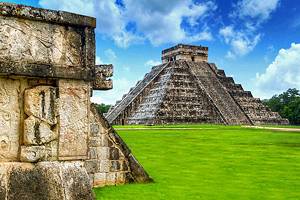
Mexico's Pre-Columbian Past : An easy commute from Cancun's resort area, the historic Mayan ruins of Chichén Itzá date back over 700 years and offer plenty of opportunities to immerse yourself in the history of this fascinating ancient culture. Equally as popular is ancient Tulum , the only Mayan fort known to have been built overlooking the ocean. For those staying in the country's capital, a number of great tours and day trips from Mexico City take in such sites as Teotihuacán and Tenayuca.
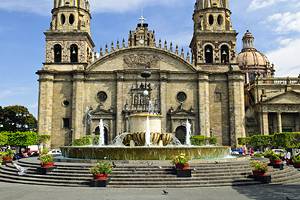
Mexico Travel Ideas : There's no end of fun things to do in Mexico City , the country's capital, from exploring its old Aztec roots to beautiful architecture that dates back to the time of the first colonists. Add to this the many museums, art galleries, old churches, and palaces, and you'll be kept busy for days. Beautiful Guadalajara has also done a great job of preserving its colonial past, and boasts many fascinating historic attractions and points of interest worth exploring. So, too, has Mérida , the capital of Yucatán, famed the world over as the "white city" for the color of garments most preferred by its population.
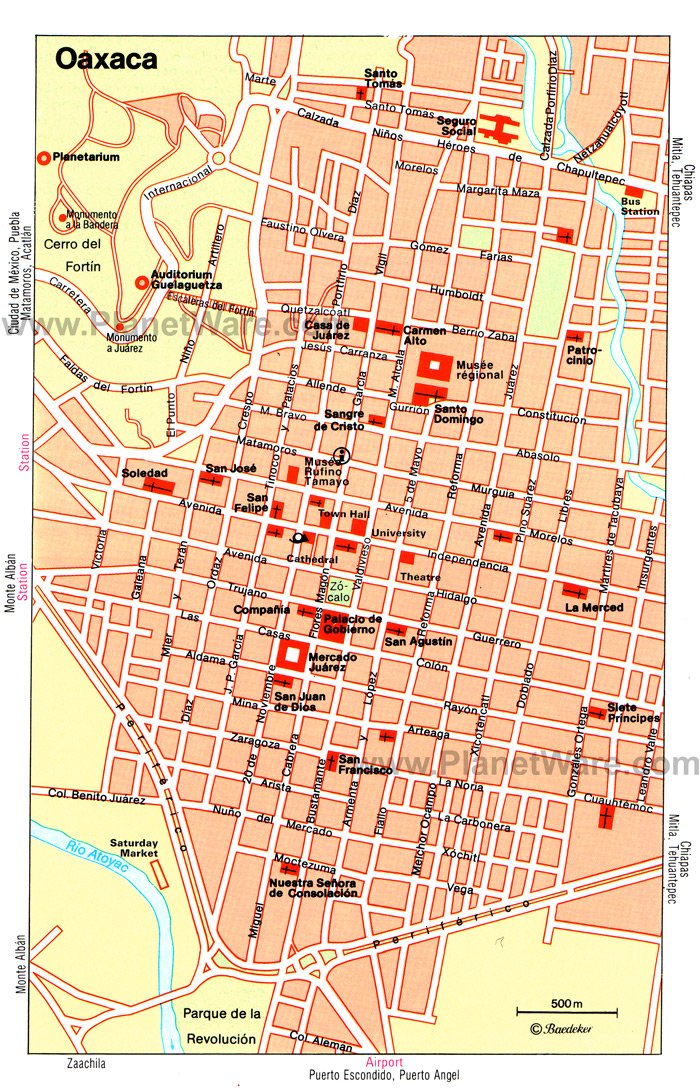
More on Mexico
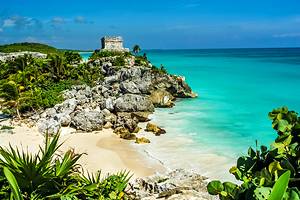
Oaxaca Travel Guide
Book your individual trip , stress-free with local travel experts
- roughguides.com
- North America
- Travel guide
- Itineraries
- Local Experts
- Travel Advice
- Accommodation
The state of Oaxaca is one of the most enticing destinations in Mexico. The state capital, cosmopolitan yet utterly Mexican, encapsulates much of what the region has to offer. Here and in the surrounding countryside indigenous traditions are powerful; nowhere else in the country are the markets so infused with colour, the fiestas so exuberant, or the old languages still so widely spoken. There are traditions in the villages that long predate the Spanish Conquest; yet the city can also offer sophisticated modern dining, great places to stay and wild nightlife. The landscape, too, represents a fundamental break, as the barren deserts of the north are replaced by thickly forested hillsides, or in low-lying areas by swamp and jungle. On the Pacific coast, Puerto Escondido and Huatulco are established resorts with very different characters, while Puerto Ángel and its surrounds offer a more back-to-basics beach experience.
Land of the seven moles – Oaxacan cuisine
Fiestas in oaxaca, staying in local communities around oaxaca, the zapotec and mixtec heartland, puerto ángel and around, the isthmus of tehuantepec.
If you’ve come from Mexico City or the north, the physical differences of the region are compounded by its relative lack of development. Industry is virtually nonexistent, and while the city of Oaxaca and a few coastal hot spots have thrived on tourism, the rest of the state is woefully underdeveloped – the “Mexican economic miracle” has yet to reach the south. Indeed, the region witnessed considerable political disturbance in the early years of the twenty-first century, though for the moment the protests seem to have been subdued.
The city of Oaxaca is the region’s prime destination, close enough to Mexico City to attract large numbers of tourists to its fine crafts stores, markets, seemingly constant fiestas, cobbled, gallery-lined walkways and excellent restaurants. The church of Santo Domingo here is one of the region’s – and the whole of Latin America’s – most magnificent examples of Baroque architecture, fusing Spanish and native influences to spectacular effect. And it’s just one of many. Nearby, the Zapotec and Mixtec sites at Monte Albán, Yagul and Mitla are less well known than their ancient contemporaries in central and eastern Mexico, but every bit as important and impressive. All this is set among spectacular mountain scenery where the Sierra Madre del Sur meets the Sierra Madre de Oaxaca, the continuation of Mexico’s central volcanic belt.
On the coast, west of the mountains, lie some of the emptiest and best Pacific beaches in Mexico. The resorts of Puerto Escondido and Huatulco are now firmly on the map, though Escondido still has the flavour of the surfer hangout in which it has its origins, while Huatulco , conceived and purpose-built as an environmentally conscious resort, can still boast some wonderful and relatively empty sands. Between the two, around Puerto Ángel, are several tranquil beach villages with a distinct “alternative” vibe.
Tailor-made travel itineraries for Mexico, created by local experts
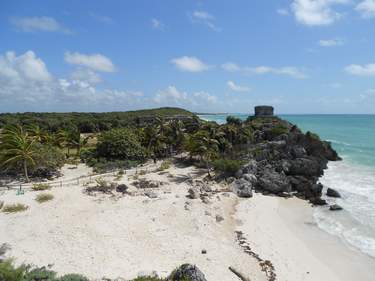
17 days / from 1590 USD
The Magic of the Yucatan and Mexico City
Explore the magic of the Yucatan Peninsula: from colonial towns like Merida to Archaeological sites like Uxmal and Calakmul, close to the Guatemala border, to beaches in Bacalar and Tulum, this itinerary shows you the real Yucatan before heading out to explore Mexico City.

15 days / from 1430 USD
Mexico City, Oaxaca & the Yucatan
Explore Central Mexico with its ever-busy capital Mexico City, visiting Teotihuacan and the famous museums in the city. Further on to Oaxaca City, the gateway to the Archaeological Site Monte Alban. Afterwards, continue to the white beaches of the Yucatan: Cancun and Isla Holbox await.
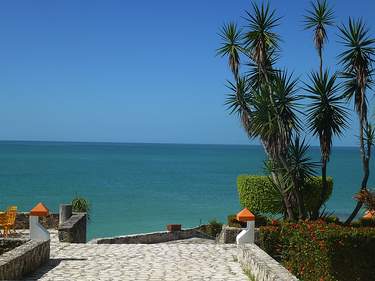
18 days / from 1735 USD
Fascinating Mexico: From Guanajuato to the Yucatan
Discover Mexico from fascinating San Miguel de Allende over busy Mexico City all the way to the Yucatan Peninsula. This itinerary combines public transportation with domestic flights to ensure you can make the most of discovering fascinating Mexico within two weeks.
Tailor-made trips for Mexico
Oaxaca is known as the “land of the seven moles” after its most famous sauces: mole negro or Oaxaqueño (the most popular, made with chocolate giving a distinct roasted flavour), amarillo, coloradito, mancha manteles, chichilo, rojo and verde. Moles are typically served with chicken or enchiladas, but you don’t have to go to one of the smart restaurants serving contemporary Oaxacan cuisine to sample them: mole negro is often better from street or market vendors. Other specialities include tamales, worth trying in any form, and chapulines, crunchy seasoned grasshoppers. Tlayudas, giant crisp tortillas dressed with beans and a mild Oaxacan string cheese called quesillo, are staples of cafés and street stands after dark.
The place to go for exceptional home-made ice cream is the plaza in front of the church of La Soledad, full of rival vendors and tables where you can sit and gorge yourself while watching the world go by. Flavours are innumerable and often bizarre, including elote (corn), queso, leche quemada (burnt milk; even worse than it sounds), sorbete (cinnamon-flavoured sherbet) and exotic fruits like mamey, guanabana and tuna (prickly pear; a virulent purple that tastes wonderful). There are also more ordinary varieties like chocolate, strawberry and coconut. At the opposite end of town, you can sample many of these flavours at Museo de las Nieves, Alcalá 706, just up from Santo Domingo.
- New Year’s Day (Jan 1). Celebrated everywhere, but particularly good in Oaxaca and Mitla.
- Día de San Sebastián (Jan 20). Big in Tehuantepec.
- Día de la Candelaria (Feb 2). Colourful indigenous celebrations in Santa María del Tule.
- Carnaval (the week before Lent; variable Feb–March). At its most frenzied in the big cities – especially Oaxaca – but also celebrated in hundreds of villages in the area.
- Día de San Isidro (May 15). Peasant celebrations everywhere – famous and picturesque fiestas in Juchitán.
- Día de San Juan (June 24). Falls in the midst of festivities (June 22–26) in Tehuantepec.
- Fiesta de la Preciosa Sangre de Cristo (first Wed in July). Teotitlán del Valle, near Oaxaca, holds a festival with traditional dances and religious processions.
- Guelaguetza (last two Mon in July). In Oaxaca, a mixture of traditional dancing and rites on the Cerro del Fortín. Highly popular; tickets for the good seats are sold at the tourist office.
- Fiestas (Aug 13–16). Spectacular festivities in Juchitán (Vela de Agosto) and Tehuantepec (Fiesta del Barrio de Santa María Relatoca).
- Fiesta de San Bartolomé (Aug 24). In San Bartolo Coyotepec, near Oaxaca.
- Blessing of the Animals (Aug 31). In Oaxaca locals bring their beasts to the church of La Merced to be blessed.
- Fiesta del Señor de la Natividad (Sept 8). In Teotitlán del Valle.
- Independence Day (Sept 16). Celebrated everywhere.
- Feria del Árbol (second Mon in Oct). Based around the famous tree in Santa María del Tule.
- Día de los Muertos (Day of the Dead; Nov 2). Observed everywhere, with particularly strong traditions in Xoxocotlán and in Atzompa.
- Día de la Inmaculada Concepción (Dec 8). Observed widely. There are traditional dances in Juquilla, not far from Puerto Escondido , and Zacatepec, on the road inland from Pinotepa Nacional.
- Fiesta de la Virgen de la Soledad (Dec 18). Celebrations in Oaxaca in honour of the patroness of the state – expect fireworks, processions and music.
- Fiesta de los Rabanos (Radish Festival; Dec 23). There’s an exhibition of statues and scenes sculpted from radishes in Oaxaca.
- Christmas Eve (Dec 24). In Oaxaca there’s music, fireworks and processions before midnight Mass. Buñuelos – crisp pancakes that you eat before smashing the plate on which they are served – are dished up at street stalls.
Indigenous communities in the mountains and valleys of Oaxaca have been developing their ecotourism potential since the 1990s, when a cabins programme was established. These small, self-contained cabañas ecoturísticas were designed to bring income to the villages while minimizing the disruptive effects of tourism. These days many villages organize tours (hiking, coffee farms, biking, adventure sports and agrotourism) and some sort of “community lodging”, from homestays to simple but comfy cabins, usually arranged through a local Comité de Ecoturismo. Either type of accommodation makes a convenient and economical base for exploring the villages and archeological sites of Oaxaca state. Many communities have particular handicraft traditions, such as carpet-weaving, wickerwork or pottery; others have museums devoted to local archeological finds and the life of the villagers.
The best place for information and reservations – ideally made a few days in advance, especially for the more accessible sites – is Oaxaca’s state tourist office at Juárez 703 (951 502 1200), though be warned that individual staff may know little about this, that their information may be out of date, and that even where they do make a reservation it may take a while to seek out the key locally when you arrive. Oaxaca's lending library, at at Pino Suárez 519, is a great resource for rentals. For the Sierra Norte and the Pueblos Mancomunados contact Expediciones Sierra Norte, which coordinates all the local community programmes in that area. For Ixtlán contact Ecoturixtlán (951 553 6075) directly, based at 16 de Septiembre in Ixtlán de Juárez.
The city of OAXACA sprawls across a grand expanse of deep-set valley, 1600m above sea level. Its colour, folklore, indigenous markets and magnificent colonial centre make it one of the country’s most rewarding destinations even though, with a population of over 250,000, it is well on its way to becoming an industrial city. Many streets are choked and noisy and a thin veil of smog often enshrouds the valley – yet in the colonial centre the city’s provincial charm is hardly affected and just about everything can be reached on foot. Simply being in Oaxaca, wandering through its streets and absorbing its life, is an experience, especially if you happen to catch the city during a fiesta (they happen all the time – see Fiestas in Oaxaca). The city is an important artistic centre, too, with several state-run and private galleries, craft and jewellery masterclasses and regular exhibitions.
Among the highlights of any visit are the Museo de las Culturas and the Museo Tamayo, the markets (craft shopping in Oaxaca ranks with the best in the country) and the churches of Santo Domingo and La Soledad, along with the nearby archeological sites of Monte Albán and Mitla.
Brief history
Once central to the Mixtec and Zapotec civilizations, Oaxaca had a limited role during the early years of the Spanish Conquest. Cortés, attracted by the area’s natural beauty, created the title of Marqués del Valle de Oaxaca, and until the Revolution his descendants held vast estates hereabouts. For practical purposes, though, the area was of little interest to the Spaniards, with no mineral wealth and, due to the rugged mountain terrain, no great agricultural value (though coffee was grown). This meant that the indigenous population was largely left to get on with life and did not have to deal with much outside influence beyond the interference of a proselytizing Church.
Nevertheless, by 1796 Oaxaca had become the third largest city in Nueva España, thanks to the export of cochineal and, later, textile manufacturing. In the nineteenth century it produced two of Mexico’s most influential statesmen: Benito Juárez is commemorated everywhere in Oaxaca, a privilege not shared by Porfirio Díaz, the second most famous Oaxaqueño, whose dictatorship most people have chosen to forget. Thereafter Oaxaca was something of a political backwater until autumn 2006, when it made international headlines as striking teachers occupied the city’s main plaza and clashed with riot police in a dispute that began over wages and mushroomed into protests over corruption and political cronyism; the city is perfectly safe for tourists but occasional protests and demos rumble on to this day.
Benito Juárez
Benito Juárez ranks among Mexico’s greatest national heroes. He was the towering figure of nineteenth-century Mexican politics, and his maxim – “El respeto al derecho ajeno es la paz” (“Respect for the rights of others is peace”) – has long been a rallying cry for liberals. A Zapotec, he strove against nineteenth-century social prejudices and, through four terms as president, successfully reformed many of the worst remnants of Spanish colonialism, earning a reputation for honesty and fair dealing.
Juárez was born in San Pablo Guelatao in 1806. His parents died when he was 3, and he grew up speaking only Zapotec; at the age of 12 he was adopted by priests and moved to Oaxaca, where he began to study for the priesthood. Turning his talents to law, he provided his legal services to impoverished villagers free of charge, and by 1831 had earned a seat on Oaxaca’s municipal council, lending his voice to a disenfranchised people. Juárez rose through the ranks of the city council to become state governor from 1847 to 1852, on a liberal ticket geared towards improving education and releasing the country from the economic and social stranglehold of the Church and the aristocracy. In 1853, the election of a conservative government under Santa Anna forced him into eighteen months of exile in the US.
Liberal victory in 1855 enabled Juárez to return to Mexico as minister of justice and give his name to a law abolishing special courts for the military and clergy. His support was instrumental in passing the Ley Lerdo, which effectively nationalized the Church’s huge holdings, and bills legalizing civil marriage and guaranteeing religious freedom. In 1858, President Ignacio Comonfort was ousted by conservatives enraged by these reforms, and Juárez, as the head of the Supreme Court, had a legal claim to the presidency. However, he lacked the military might to hold Mexico City and retired to Veracruz, returning three years later, victorious in the War of Reform, as constitutionally elected president. Stymied in his attempts to reduce the power of the Church by an intractable Congress and empty coffers, Juárez suspended all national debt repayments for two years from July 1861. To protect their investments, the British, Spanish and French sent their armies in, but when it became apparent that Napoleon III had designs on the control of Mexico, the others pulled out, leaving France to install Habsburg Archduke Maximilian as puppet emperor. Juárez fled again, this time to Paso del Norte (now Ciudad Juárez) on the US border, until by 1867 he was able to return to the capital and to round up his army and execute the hapless Maximilian.
Juárez was returned as president in the 1867 elections but alienated much of his support through attempts to use Congress to amend the constitution. Nevertheless, he secured another term in the 1870 elections, spending two more years trying unsuccessfully to maintain peace before dying of a heart attack in 1872.
Santo Domingo
The church of Santo Domingo de Guzmán is one of the real highlights of Oaxaca. Consecrated in 1611, this elaborately carved and decorated extravaganza is one of the finest examples of Mexican Baroque anywhere; its external walls (10m thick in some places) solid and earthquake-proof, the interior extraordinarily rich. Parts were damaged during the Reform Wars and the Revolution – especially the chapels, pressed into service as stables – but most of the interior was restored during the 1950s.
The church drips with gold leaf throughout, beautifully set off, especially, by the afternoon light. Highlights include the great gilded main altarpiece and, on the underside of the raised choir above you as you enter, the family tree of Felix de Guzmán, father of St Dominic (the founder of the Dominican Order), in the form of a vine with leafy branches and tendrils, busts of leading Dominicans and a figure of the Virgin right at the top. Looking back from the altar, you can appreciate the relief scenes high on the walls and the biblical events depicted in the barrel roof and the ceiling of the choir, a vision of the heavenly hierarchy with gilded angels swirling in rings around God. The adjoining Capilla de la Virgen del Rosario (completed in 1720) is also richly painted and carved: the Virgin takes pride of place in another stunning altarpiece, all the more startlingly intense in such a relatively small space.
Mole and chocolate
Calle Mina, south of the Mercado 20 de Noviembre, is lined with spice vendors selling plump bags of the chile-and-chocolate powder that makes up most Oaxacan moles. Cinnamon-flavoured chocolate powder is also available, for cooking or making into drinking chocolate. One of the best places in this area to try a mug of hot chocolate, laced with almond, cinnamon, sugar or chile and served with pan dulce, is Mayordomo, the Willy Wonka of Oaxaca; the main branch is at the corner of Mina and 20 de Noviembre. You can also buy pure cacao by the kilo and all sorts of chocolate products. Nearby La Soledad at Mina 212 has a row of old bean-crushing machines and is drenched in the overpowering aroma of sweet cacao – choc addicts beware.
The region around Oaxaca can be divided into two parts: the Valles Centrales, comprising three valleys which radiate from the state capital to the south and east, towards Mitla, Ocotlán and Zaachila (collectively the Valle de Oaxaca); and the Mixteca, which extends northwest towards Puebla and arcs down to the Pacific coast via Tlaxiaco and Pinotepa Nacional. The Valles Centrales include the state’s most famous and frequented archeological centres, craft villages and colourful markets, while the Mixteca, rich in ruined Dominican convents and ancient towns and villages, is less visited but well worth exploring.
This area saw the development of some of the most highly advanced civilizations in pre-Hispanic Mexico, most notably the Zapotecs and Mixtecs. Their craft skills – particularly Mixtec weaving, pottery and metalworking – were unrivalled, and the architecture and planning of their cities rank among ancient Mexico’s greatest achievements. Traditional ways of life and indigenous languages are still vigorously preserved by Mixtec and Zapotec descendants in villages today.
The Valles Centrales are the cradle of some of the earliest civilizations in Mexico. The story begins with the Zapotecs, who founded their first city – now called San José Mogoté, and little more than a collection of mounds, a few kilometres north of the state capital – some time before 1000 BC. As the city grew in wealth, trading with Pacific coastal communities, its inhabitants turned their eyes to the stars, and by 500 BC they had invented the first Mexican calendar and were using hieroglyphic writing. At this time, San José, together with smaller villages in the area, established a new administrative capital at Monte Albán , a vantage point on a mountain spur overlooking the principal Oaxaca valley. Just like Teotihuacán, Monte Albán mysteriously began to implode from about 700 AD, and the Zapotec influence across the Valles Centrales waned. Only Yagul and Mitla, two smaller cities in the principal valley, expanded after this date, though they never reached the imperial glory of Monte Albán .
As the Zapotecs disappeared, the gap they left behind was slowly filled by the Mixtecs, pre-Hispanic Mexico’s finest craftsmen, who expanded into the southern valleys from the north to occupy the Zapotecs’ magnificent cities. Influenced by the Zapotec sculptors’ abstract motifs on the walls at Mitla, the Mixtecs concentrated their artistic skills on metalwork and pottery, examples of which can be seen in the state capital’s museums. By the fifteenth century, the Mixtecs had become the favoured artisans to Mexico’s greatest empire, their conquerors, the Aztecs; Bernal Díaz recounts that Moctezuma ate only from plates fashioned by Mixtec craftsmen.
Valle de Tlacolula
Hwy-190 provides access to the alluring villages of the Valle de Tlacolula, slicing some 45km east of Oaxaca towards Mitla, before cutting south to Tehuantepec and the coast. The route is well served by colectivos and buses from the second-class terminal (every 30min or so), making day-trips possible, even without a car. Check with the tourist office for which village has a market on the day you’re going. If you want to explore the valley further it’s a good idea to stay in one of the villages, some of which have self-catering facilities.
The main allure of the ancient Zapotec site of DAINZÚ resides in its raw appeal, with few tourists or imposing facilities to detract from soulful contemplation. Just over 20km from Oaxaca on Hwy-190, Dainzú, established around 700–600 BC, stands partially excavated in a harsh landscape of cactus-covered hills around 1km south of the main road. The chief structure, Edificio A, is a large, rambling hillside construction set around a courtyard, with elements from several epochs. Along the far side of its base a series of danzante figures can be made out, similar to those at Monte Albán except that these clearly represent ball-players. Nearby is the ball-court, only one side of which has been reconstructed. Edificio B is another large and complex platform structure; its most striking feature is a tomb whose entrance is carved in the form of a jaguar.
Teotitlán del Valle
TEOTITLÁN DEL VALLE, 4km north of Hwy-190, is the most famous weaving town in Oaxaca. The rugs are the product of a cottage industry that seems to involve almost every family in town; along the road as you approach and all over the village you’ll see bold-patterned and brightly coloured rugs and sarapes, some following traditional designs from Mitla, others more modern, including many based on the work of Dutch graphic artist M.C. Escher.
Even if you’re not buying, poke your head into one of the compounds with rugs hanging outside. There’s little hard-sell, and most weavers will be more than happy to provide a demonstration of pre-Hispanic weaving and dying techniques; traditional dyes use natural substances including indigo, pomegranate and cochineal, the latter made from a substance secreted by the cochineal beetle that, when dried, creates an inimitable blood-red colour. There’s a small Mercado de Artesanías on the main plaza with a decent range of rugs, but quality and prices are generally better if you go direct to the producers.
The small Zapotec site of LAMBITYECO, prettily planted with agave and cactus, can be seen in twenty minutes, but it’s worth it for the exceptional carvings and stucco-work. Just two buildings of the two hundred or so that have been identified have been excavated, along with some outbuildings that include an original temazcal. The smaller building at the back is the Templo de Cocijo, extensively decorated with masks of Cocijo, Zapotec god of rain and thunder, in the form of a stylised jaguar; two stunningly preserved versions flank the tiny central patio. The larger Palacio de los Racoqui is thought to have been the home of several generations of an important family – perhaps the city’s rulers. There are some superb friezes, including those on the lintels of two tombs, excavated where they had been buried deep inside the building, with remarkable portraits of the individuals buried there.
Santa Ana del Valle
SANTA ANA DEL VALLE, 4km north of Tlacolula, is a tiny, very quiet and very traditional village with a fine selection of locally produced rugs. You’ll see them for sale everywhere. There’s a tranquil and well-managed homestay programme should you want to stay; the local baker makes delicious bread and there’s a shop where you can buy basic provisions. A three-hour walk, outlined on a board outside the community museum, will take you to Iki ya’a, a hilltop Zapotec site with fine views.
One of the least-visited archeological sites in the region, YAGUL lies to the north of the highway at about the 35km mark – a signposted twenty-minute walk (or 1.5km drive). The large site spreads expansively across a superb defensive position, and although occupied by the Zapotecs from a fairly early date, its main features are from later on (around 900–1200 AD, after the fall of Monte Albán ) and demonstrate Mixtec influence. On the lowest level is the Patio de la Triple Tumba, where the remains of four temples surround an altar and the entry to the Triple Tomb, whose three funereal chambers show characteristically Mixtec decoration. Immediately above the patio, you’ll see a large and elegantly simple ball-court, the largest known after Chichén Itzá. Higher up, the maze-like Palacio de los Seis Patios, probably a residential complex, features six small courtyards surrounded by rooms and narrow passages. From here a good path leads up to a viewpoint on a mesa-like crag, with superb views over the surrounding valleys.
The town of MITLA (“Place of the Dead”) is a dusty and none too attractive place, which you’d visit only to see the stunning Mixtec site at the upper edge of town. It may not have the grandiose scale and setting of Monte Albán , but Mitla is magnificently decorated with elaborate stone mosaics that are among the finest in Mexico. You’ll see these superlative bas-reliefs and geometric designs at their best if you arrive towards closing time, when the low sun throws the patterns into sharp, shadowed relief, and the bulk of the visitors have left.
Brief history of Mitla
Mitla reached its apogee during the post-Classic period, when Monte Albán was in decline. Construction at the site continued until the late fifteenth century, at which point it was finally conquered by the Aztecs. The abstract designs on the buildings seem to echo patterns on surviving Mixtec manuscripts, and have long been viewed as purely Mixtec in style. But more recent opinion is that the buildings were constructed by Zapotecs and that the city was a ceremonial centre occupied by the most important Zapotec high priest. This Uija-Tao, or “great seer”, was described by Alonso Canesco, a fifteenth-century Spaniard, as being “rather like our Pope”, and his presence here would have made Mitla a kind of Vatican City.
The Sierra Norte and the Pueblos Mancomunados
North of the Oaxaca valleys the wild ranges of the Sierra Norte stretch for over 100km, a pristine world of pine forests, mist-cloaked mountains and rustic Zapotec villages. The Pueblos Mancomunados (literally “joint villages”) occupy the southern edge of the Sierra. The landscape here is spectacular and the biodiversity phenomenal, with birdlife, butterflies and mammals, including ocelot, puma and jaguar – some sections of the pine forest have been classified by the World Wide Fund for Nature (WWF) as among the richest and most varied on earth. It’s a rewarding place to spend a few days, enjoying nature and getting first-hand experience of rural Oaxacan life.
The hills are laced with more than 100km of signposted rural footpaths and country roads, suitable for hikers and mountain-bikers of all abilities, and almost every community offers simple accommodation, local guides and a roster of activities. The paths have been used for centuries by local people accustomed to sharing resources with surrounding communities and the villages are an impressive example of social organization, with eight small towns perched on common land. One of the most enchanting hikes is along the 15km high-altitude footpath between the isolated villages of Latuvi and San Miguel Amatlán, which passes though mystical cloud forest and is believed to be part of a larger pre-Columbian route that connected the Zapotec cities in the Valles Centrales with the Gulf of Mexico – you can still see the remains of an old road along the trail (tours usually take two days to hike this route).
Perched on a ridge overlooking the Oaxaca valleys (18km north of Teotitlán) and surrounded by pine trees, the little village of BENITO JUÁREZ is the gateway to the Pueblos Mancomunados. Known for its spectacular sunsets – in clear weather you can see all the way to Mexico’s highest mountain, Pico de Orizaba – Benito Juárez makes a good base for exploration. There’s a river where you can fish for trout and plenty of walking and other activities on offer.
Ixtlán de Juárez
Ixtlán de Juárez, a pretty Zapotec village near San Pablo Guelatao (the birthplace of Benito Juárez), 61km north of Oaxaca, is in an area of great natural beauty, and its cloud forests and pine and oak woodlands are claimed to be home to five hundred bird varieties and six thousand species of plants.
The Mixteca
Oaxaca’s Mixteca region is not at first an obvious tourist destination: the pre-Hispanic sites here are far less spectacular than those in the Valles Centrales and there are no artisan centres to compare with Teotitlán or Arrazola. However, the colonial buildings are widely regarded as some of the country’s most important, there’s stunning mountain scenery and the low number of visitors means that you are likely to have vast crumbling monasteries and Mixtec ruins to yourself; the main appeal is their aching, faded glory and the spine-tingling sense that you’re witnessing a scene that has remained relatively unchanged since before Cortés.
Broadly the region divides into two – the barren hills of the Mixteca Baja and the mountainous, pine-clad Mixteca Alta. Toll Hwy-135D, one of the country’s best roads, cuts through the Baja’s deforested hillsides en route from Oaxaca to Mexico City. The Mixteca Alta lies off to the south, where Hwy-125 climbs into and through the sierra before eventually descending to the Pacific coast. The Mixteca Baja’s highlights are three vast Dominican monasteries – Yanhuitlán, Teposcolula and Coixtlahuaca – imposing relics of Mexico’s imperial past. All three have been expertly restored and can easily be visited as a day trip from Oaxaca if you have your own transport; it’s less easy if you’re relying on public transport, though still possible.
Capillas Abiertas
Among the most striking features of the monasteries of the Mixteca Baja are their capillas abiertas. These graceful open-air chapels, found only in the New World, look like unfinished, roofless churches, or cathedrals chopped in half. They face out onto huge open areas where the idea was that mass conversions of and services for indigenous people, too numerous for the church to accommodate, would take place. They are designed for congregations of thousands; the very same people whose prodigious labour produced these vast churches in the first place. Sadly, even by the time they were first completed, those populations had been decimated by disease and the demands of the Spanish overlords; the capillas became vast white elephants, testament to a vanished population.
Some 65km from Puerto Escondido , at the junction of Hwy-175 from Oaxaca and coastal Hwy-200, the oppressive, shabby city of Pochutla is the service hub for a string of beach towns and resorts that unfurl east towards the Isthmus of Tehuantepec. Puerto Ángel, now firmly on the tourist radar, is a fishing village that draws budget travellers with its unpretentious, low-key vibe and picturesque setting. Seven kilometres west, the beautiful beach of Zipolite has gained a reputation for its liberal-minded, European-hippy vibe, while north over the headland, attractive San Agustinillo has a more restrained feel. Further west, Mazunte is the main nesting site for Golfina turtles. Rapidly developing, it has something of the feel of a junior Zipolite.
Puerto Ángel
Though it’s well established as a tourist destination, PUERTO ÁNGEL goes about its business as a small, down-at-heel fishing port with minimum fuss. Everything remains resolutely low-key – you may very well find pigs and chickens mingling with the visitors on the streets – and locals fish off the huge concrete dock, catching yellowtail tuna and other gamefish with a simple rod and line. Though it has a gorgeous setting – around a sheltered bay ringed by mountains – the beaches are less than pristine. Small hotels, rooms and simple places to sling a hammock, however, are abundant, with some of the most promising on the road between the main village and the Playa del Panteón. If you’re on a tight budget Puerto Ángel can be a fun place to spend a few days, meandering and sampling the superb local seafood.
San Agustinillo
Rounding the headland north of Zipolite you come to SAN AGUSTINILLO, another fine beach graced with good surfing waves. Fast developing, it has a more restrained vibe than Zipolite, with some charming and upmarket places to stay and eat. The sand is backed by restaurants, which offer space for a hammock or small rooms for rent in addition to reasonably priced, fresh seafood. Colectivos and pasajeras pass frequently along the main road, heading in one direction to Zipolite, in the other to Mazunte and Pochutla.
The Isthmus of Tehuantepec, where the Pacific and the Atlantic are just 210km apart and the land never rises to more than 250m above sea level, is the narrowest strip of land in Mexico. It’s a hot and steamy region, with a fascinating and unique cultural identity. The people are descendants of various indigenous groups, principally Zapotec. Historically, the Zapotec indígenas, especially those in the south, have been a matriarchal society. Though you’ll still find women dominating trade in the markets (they are renowned for their tenacious, even aggressive, sales skills) while the men work in the fields, this is a tradition that is dying faster than most others in macho Mexico. Nevertheless, some elements remain: the women exude pride, many dressed in ornate hand-woven dresses and draped with gold jewellery; it’s still the mother who gives away her child at a wedding (and occasionally still the eldest daughter who inherits land); and on feast days the women prove their dominance by climbing to the rooftops and throwing fruit down on the men in the Tirada de Frutas.
The best reason to stop in this region is if there’s a fiesta going on, as they’re among the most exciting in the country. Otherwise, you can go straight across – from Oaxaca to Tuxtla Gutiérrez or San Cristóbal in Chiapas – in a single, very long, day. Most first-class buses bypass the grimy port town of Salina Cruz, dominated by a giant oil refinery; better places to stop are Tehuantepec itself, around 250km from Oaxaca City, or nearby Juchitán.
Tehuantepec
The modest town of TEHUANTEPEC visibly preserves many of the isthmus’s local traditions, has some of the best fiestas in the region and is generally a pleasant place to stop, with several inexpensive hotels. In the evening, the central plaza comes alive, with singing birds and people strolling and eating food from the stalls set up by the townswomen, some of whom still proudly wear the traditional flower-embroidered huipil and floor-length velvet skirt of the Zapotec. Perhaps because the town is so concentrated – a walk of ten blocks in any direction will take you out into the countryside – it’s extraordinarily noisy; the din of passing buses redoubled by the flatbed motor tricycles (motos) that locals use as taxis. There’s a very busy market, just off the main plaza, which sells fruit, herbs, bread, flowers and other local produce.
Mescal (or mezcal) is the Oaxaqueño drink of choice, sold everywhere in bottles that usually have a dead gusano worm (actually a type of caterpillar) in the bottom. Tradition has it that the creature lives on the cactus-like maguey plant and is there to prove that the ingredients are genuine, although these days most of the worms are farm raised. You don’t have to eat the worm, though few people are in any state to notice what they’re ingesting by the time they reach the bottom of the bottle. Like tequila (which is technically a type of mescal), mescal is made from the sugary heart of the agave plant, which is baked, pulverized and then distilled. Many of the best mescal stores can be found around the Mercado 20 de Noviembre where you can taste before you commit to buying; good brands include Los Amantes (also has a great shop), Los Danzantes (also a restaurant), Mezcal Amores and Alipús.
Several towns produce mescal, but the original is Santiago Matatlán , 45km from Oaxaca City near Mitla . Mescal tours are advertised everywhere.
Discover more places in Mexico
- Monte Albán
- Puerto Escondido and around
The Rough Guides to Mexico and related travel guides
In-depth, easy-to-use travel guides filled with expert advice.

Find even more inspiration here

Planning your own trip? Prepare for your trip
Use Rough Guides' trusted partners for great rates

written by Andy Turner
updated 26.04.2021
Ready to travel and discover Mexico?
Get support from our local experts for stress-free planning & worry-free travels.
- Where to stay
- Travel advice
Best Time to Visit
Weather & Climate
Best Hotels
48-Hour Itinerary
Day Trips From Oaxaca
Top Attractions
Guide to Monte Albán
Guelaguetza Festival Guide
Day of the Dead
Food to Try
Best Restaurants
Mezcal in Oaxaca
Your Trip to Oaxaca: The Complete Guide
Oaxaca City Guide: Planning Your Trip
TripSavvy / Angelina Pilarnos
Oaxaca de Juarez is a colonial city in southern Mexico, and it’s the capital of Oaxaca state. Located in a valley at some 5,000 feet above sea level , the city is surrounded by the Sierra Madre mountain chain. Oaxaca has beautiful colonial architecture, rich traditions, and delicious food. There are museums and archaeological sites to visit, as well as regular festivals. The contemporary art scene is on the rise, and there are also artisans and craftspeople making traditional crafts and folk art.
This Oaxaca travel guide will give you an introduction to this vibrant destination and the information you need to plan your stay.
Planning Your Trip
- Best Time to Visit : The best time to visit Oaxaca is in the late fall or the spring, although any time of year is pleasant.
- Language: The primary language spoken is Spanish. About 35 percent of the population also speaks an indigenous language . Zapotec and Mixtec are the most spoken indigenous languages, but there are 16 spoken in the state besides Spanish.
- Currency: The currency is the Mexican peso (MXN). Some tour companies and activities give prices in US dollars, but will usually accept either dollars or pesos.
- Getting Around: The historical center is small enough to get around on foot. If you need to go farther afield, there’s no shortage of taxis. The taxis don’t have meters, so it’s customary to agree on a price before departing. There’s no Uber service in Oaxaca, but there is an app called Didi that is similar and works with local taxi drivers (but payment is in cash).
- Travel Tip: Only upscale restaurants, hotels, and boutiques accept credit cards, so be sure to carry enough cash with you for what you need. There are lots of ATMs around the city, but if you’re heading out on a day trip, be sure to take some cash with you.
Things to Do
It’s easy to fill your days with exciting and fun activities in Oaxaca. There are enough markets, museums, and galleries in town to keep you busy for weeks or head out to the surrounding villages to learn more about the local culture. Of course, you’ll be able to enjoy the city’s outstanding food scene wherever you go. Here are a few activities to enjoy:
- Take a day trip to visit one of the surrounding villages on their market day. Be sure to buy a souvenir, sample some market food, and buy some fresh fruit to enjoy later.
- Explore archaeological sites like Monte Albán , and Mitla to learn about the ancient inhabitants of this area.
- Shop for handicrafts such as Zapotec wool rugs, alebrijes (carved wooden animals), or some Oaxacan black pottery.
- Learn how to cook Oaxacan specialties by taking a cooking class with Chef Nora at Alma de Mi Tierra .
- Take a tour of Oaxaca’s outstanding Ethnobotanical Garden , where you can discover the fascinating plant life of Oaxaca state (you can only visit as part of a tour).
- Visit the Oaxaca Museum of Cultures to see the amazing treasure of Tomb 7 found at Monte Alban archaeological site, a UNESCO World Heritage site .
- Head up to the Sierra Norte to do some hiking or mountain biking.
Explore more attractions with our full-length articles on the best things to do in Oaxaca and the top day trips from Oaxaca .
What to Eat and Drink
Oaxaca is one of Mexico’s great foodie destinations , so you’re in for a treat! The traditional cuisine is based on corn and chiles and prominently features local fresh herbs. Oaxaca’s dining scene has exploded in recent years, and you’ll find lots of fantastic restaurants, many with wonderful atmospheres, beautiful courtyards, or rooftop views. Don’t shy away from street food because Oaxaca has some of the best street food in the world. At Mercado 20 de Noviembre, you can sample some of the state’s best-known dishes such as tlayuadas , memelas, tamales, chapulines ( grasshoppers), and, of course, mole , a rich sauce made with chiles, chocolate, and many other ingredients.
Mezcal is the drink of choice in Oaxaca. It’s traditionally served neat, but if that’s not your style, you can try some inventive mezcal cocktails at spots like Sabina Sabe or Mezcalogia. Oaxaca also has a craft beer scene that’s on the rise, and you can try some of the locally produced brews at Santísima Flor de Lúpulo and Consejo Cervecero .
Explore our articles on Oaxaca’s best restaurants and what to eat and drink in Oaxaca .
Where to Stay
There are lots of great choices of hotels, B&Bs, and homestays in Oaxaca, in all price ranges and for all tastes. Most visitors prefer to stay in the city center, so after a full day of activities, you can head back to your hotel for a little rest, then go out to dinner and enjoy Oaxaca’s evening scene without having to worry about catching a cab—everything’s within walking distance! If noise is an issue, look for a hotel on the north side of the city. In the few blocks north of Santo Domingo, there’s not much street noise at night, and you’ll still be able to walk to the sights and restaurants, but it’s much quieter than near the Zócalo (the main square). Another great option is the Barrio de Jalatlaco, a traditional neighborhood, just east of the city center. It has lovely little restaurants and cafes and cobblestone streets.
Explore our recommendations on the best hotels in Oaxaca .
Getting There
Oaxaca's Aeropuerto Internacional Xoxocotlan (OAX) is a small airport about 25 minutes' drive south of the city. It receives a few international flights, but several dailies from Mexico City. Depending on where you're coming from, you may need to fly into Mexico City and take another flight to Oaxaca. Those who want to avoid the Mexico City airport can look for direct flights from Houston or Dallas to Oaxaca. The ADO bus line has clean, modern buses and connects Oaxaca to many other cities in Mexico.
Find out how to travel to Oaxaca from Mexico City by plane, bus, or car.
Culture and Customs
There are a few cultural differences and customs that you should be aware of when traveling in Oaxaca. You'll probably notice a lot of interesting people in the markets and on the streets and may want to take their photograph. It's always a good idea to ask first because some people do not like having their photo taken, although if you're in the market, it's fine to take a wide-frame shot that has people in it—just don't get in people's faces. If you would like to take someone's photo, you can ask in Spanish, "¿Puedo tomar una foto?" It's much more respectful to ask first. Learn some other Spanish phrases for travelers to Mexico so you can interact respectfully with the local people.
Mexican mealtimes are probably on a different schedule from what you're used to. Mexicans usually have their main meal of the day in the afternoon between 2 and 4 p.m. In restaurants, the server won't bring you the bill until you ask for it. Ask for "La cuenta, por favor," or make a sign of writing in the air. Generally, a tip ("propina" in Spanish) isn't included, and it's customary to add 10 to 20 percent depending on the quality of service. People usually leave a tip for the waitstaff in bars and tip in restaurants, but not in food stalls and markets (although you'll often find that a tip is appreciated anyway). It's also customary to tip bellhops and cleaning staff at your hotel.
A lot of people wonder if it's expected to haggle in the markets. Unlike some other places in Mexico, in Oaxaca, people don't bargain a lot. If you're planning to purchase a big-ticket item, you may want to ask around at a few different places to get an idea of what the price range is, so you know that you're not being overcharged, but in general, if you can pay the asking price for an item, it's good to do so. Oaxaca is one of the poorest states in Mexico, and you can feel good knowing that you're supporting the local economy. If you're buying a few items in a market stall, it is OK to ask if you can get a discount for multiple items.
Money Saving Tips
Oaxaca is a very affordable destination. From restaurants to eating out, to picking up souvenirs, you’ll find prices are generally very reasonable. Here are some tips for saving money on your trip to Oaxaca:
- There are lots of hotels that are perfectly comfortable and very economical, so look around for a good choice.
- Street food and market food is inexpensive and delicious. Don’t be timid to try things that are new and different.
- For trips outside the city, the cheapest way to get around is by bus or colectivo (taxi). Brush up on your Spanish and carry change to pay fares.
- There are a few museums that have free admission: the Textile Museum and Centro Cultural San Pablo are free for everyone every day.
- There are often free cultural events taking place in the Zócalo or along Alcalá street in the evenings.
Encyclopedia Britannica. "Oaxaca."
Indigenous Mexico. "Oaxaca: A Land of Amazing Diversity." September 19, 2019
United Nations Educational, Scientific, and Cultural Organization. "Historic Centre of Oaxaca and Archaeological Site of Monte Albán."
Your Trip to Mexico City: The Complete Guide
The 17 Best Things to Do in Mexico City
Top Mexico Destinations
How to Find an Ethical, Authentic Food Tour
Your Trip to Puerto Vallarta: The Complete Guide
Your Trip to Tulum: The Complete Guide
20 Top Things to Do in Mexico
Your Trip to Shanghai: The Complete Guide
Your Trip to Barcelona: The Complete Guide
Los Cabos Guide: Planning Your Trip
48 Hours in Mexico City: The Ultimate Itinerary
Top 10 Oaxaca Sights
Paris Guide: Planning Your Trip
Belize Travel Guide: Planning Your Trip
Your Trip to Edinburgh: The Complete Guide
Top 9 Mexico Travel Myths Debunked

México » States » Oaxaca
Tourism in OAXACA
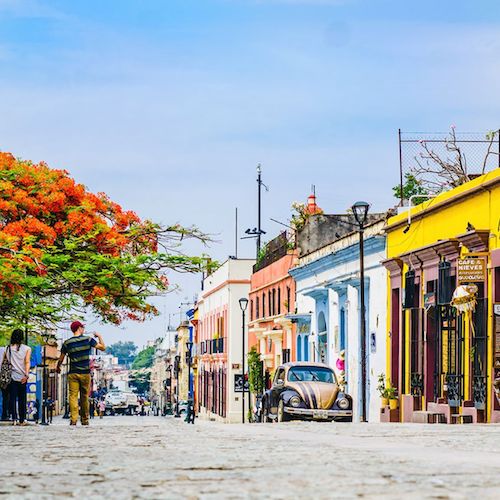
The Church of Santo Domingo de Guzmán features impressive Baroque architecture. The old convent was transformed into the Academic and Cultural Center of Oaxaca, a museum of historical pieces. Discover the “Treasures of Tomb 7,” the remains of a Zapotec tomb containing precious stones and jewels. The Ethnobotanical Garden is an ideal place to enjoy the beauty of the native plants of Oaxaca under a bright sun. Oaxaca is known for its open-air markets and its gastronomy, which you can enjoy during your stay. The region is especially known for its tamales, moles, and creamy hot chocolate.
Visit Oaxaca during one of the many festivals that take place throughout the year. The most popular are the Day of the Dead, which takes place over three days in autumn, and the Guelaguetza, a very popular folk dance festival, in the summer.
Immerse yourself in local history at one of the many museums in Oaxaca. The Museum of Contemporary Art (MACO) is located in one of the oldest buildings in the city, which is already a spectacle in itself. It also includes works by artists from the region.
Take a day trip to Monte Albán , an internationally protected site called a World Heritage Site. Located less than twenty minutes from the city center, the ancient site is one of the oldest Mesoamerican cities in the world. Explore its pyramids and temples to enter the era of Zapotec culture.
Tourist Attractions in OAXACA
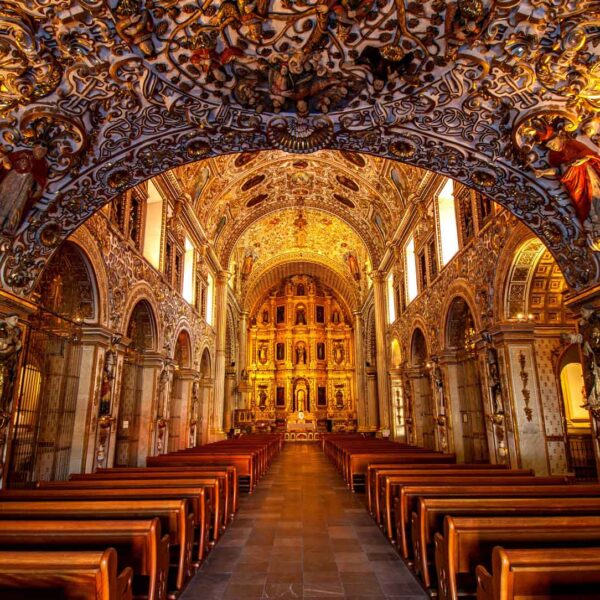
Santo Domingo Cultural Center
The Santo Domingo Cultural Center is a cultural complex that is located in what was one of the most important convents in the colony. It is a large convent in which the Museum of the Cultures of Oaxaca, the Fray Francisco de Burgoa Library and the Ethnobotanical Garden have been established. The Néstor Sánchez Public Newspaper Library is located in a building that is part of the complex but dates from the 19th century.… Read More
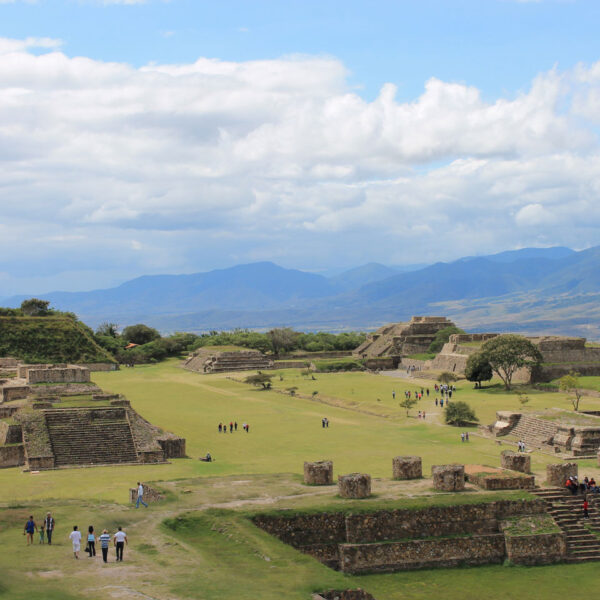
Monte Alban
Monte Alban is the most important archaeological zone of the Oaxacan entity, of unique regional importance due to the religious, political and economic control that the Zapotec state exercised over the population of the Valley of Oaxaca for more than thirteen centuries. It has been named by UNESCO Cultural Heritage of Humanity together with the city of Oaxaca on December 11, 1987. The heritage of the Zapotec world reaches us through the magnificent archaeological sites designed in the Valley of Oaxaca. Of these, the city of Monte Albán stands out for its enormous importance as an economic, political and religious hub (it was the first urban complex in Mesoamerica); by its extension, almost as big as the current capital of Oaxaca; and for its long life, started around 500 BC and concluded around 850 AD.… Read More
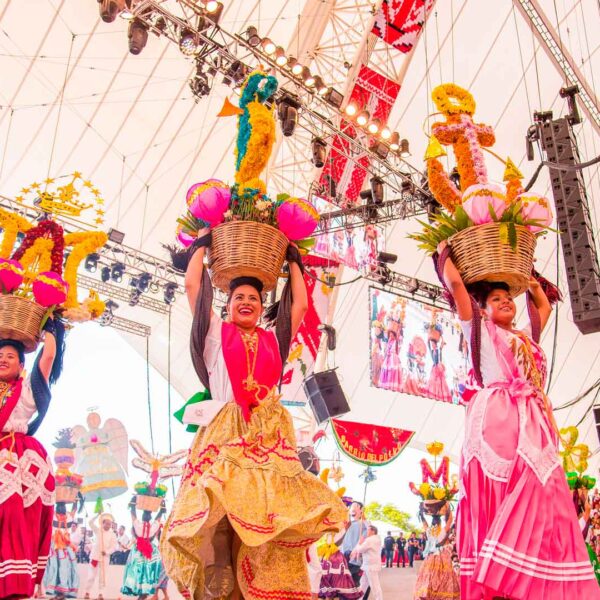
La Guelaguetza
The Guelaguetza is an ancient tradition with pre-Hispanic roots related to agricultural ceremonies of gratitude to the gods for the arrival of the rains and the lifting of the harvest at the end of July and is the largest festival in Oaxaca. La Guelaguetza is a celebration of gratitude for the arrival of the rains and the harvests, in which representatives from all regions of the state gather in the capital to share their culture through dances, crafts and food. La Guelaguetza is celebrated every year on the two Mondays after July 16, except when the first Monday is July 18, Benito Juárez’s death anniversary. Many types of dances also participate, such as the traditional Flor de Piña; where women usually dress in Huipiles representing the different regions of the state, as well as with their pineapple on their shoulders, they comb their hair with beautiful long braids accompanied by their ribbons and can not missing her accessories that is, bracelets, necklaces and earrings of precious colors and her beautiful makeup.… Read More

Mezcal is a rich, handcrafted flavored drink that requires considerable attention to be produced. Mezcal is normally served with white salt or worm salt (salt mixed with a cooked larva and ground chili), lemon or orange. Mezcal production today remains more or less as it was when the Spanish arrived hundreds of years ago. Each “recipe” is transmitted from generation to generation within the families that care about its production; Because each family has its own approach to mezcal production, there are an enormous number of different flavors. It is also in this way that the rich diversity of flavors and traditions are preserved for all to enjoy.… Read More
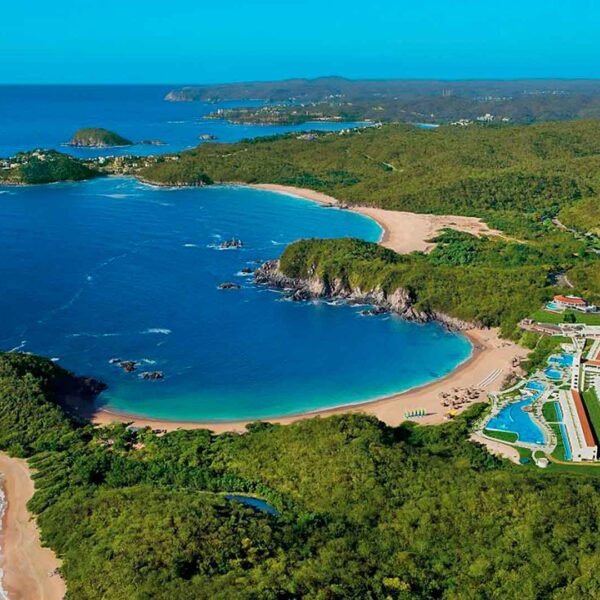
Beaches in Oaxaca
The beaches of the coast of the state of Oaxaca are among the most beautiful and complete in Mexico, thanks to a developing tourist infrastructure and the rich gastronomy of the Pacific. Along the 533 kilometers of coastline, the beaches of Oaxaca offer a wide variety of activities for lovers of water sports: snorkeling, diving, sport fishing, surfing, among others… there is something for everyone!… Read More
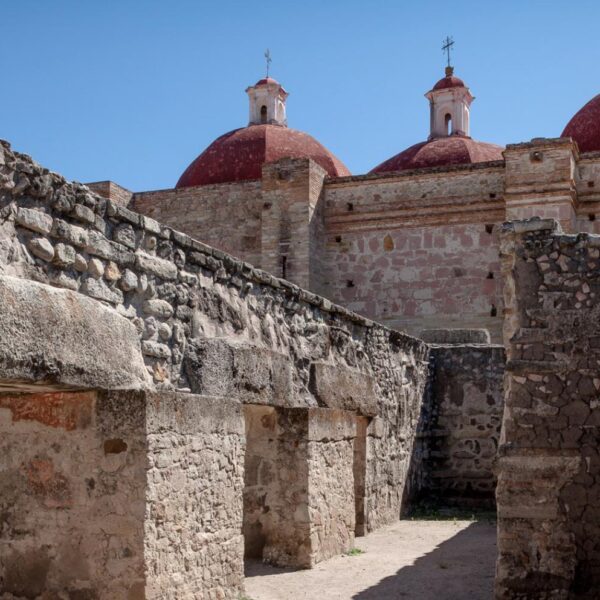
Archaeological Sites in Oaxaca
Oaxaca is famous throughout the world for its archaeological sites and the history they keep. Discover Monte Alban, Mitla, Yagul and more of these remote sites, which have made Oaxaca a World Heritage city, according to Unesco. The original Zapotec and Mixtec peoples of Oaxaca lived in the cities and religious centers of the valley of this city until the time of Spanish colonization. Today, there are still vestiges of these towns and places where you can meet them.… Read More
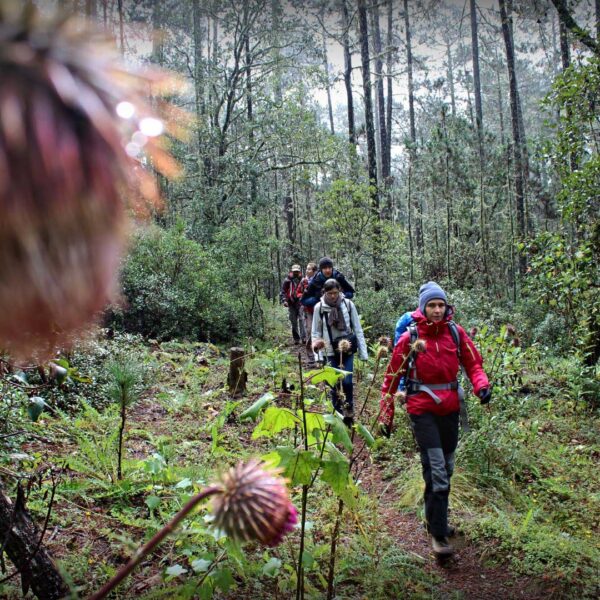
Ecotourism and Adventure in Oaxaca
Oaxaca, located in the southeast of Mexico, is an example of a singular miscegenation that even in the midst of modernity never forgets its origins. In its varied geography, it brings together not only a vast biodiversity, considered among the largest in the world, but also insurmountable cultural and ethnic riches, and the most different and beautiful natural settings. An ideal space for Alternative Tourism, Oaxaca offers activities such as walking, mountain biking, rappelling, climbing, zip-lining, horseback riding, observation of flora and fauna and more, in close contact with nature. The visitor can also witness the various aspects of local life, savor the gastronomy and enjoy the warmth of its people, as well as an offer of accommodation in hotels, ecotourism cabins, local houses or excellent camping areas.… Read More
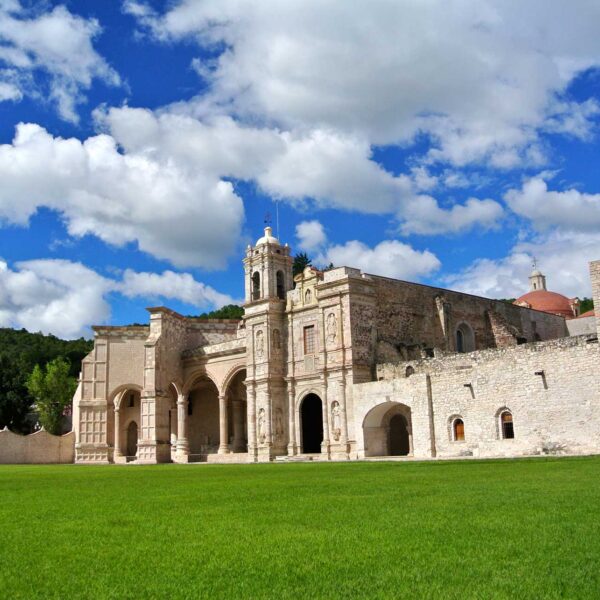
Magical Towns in Oaxaca
In Oaxaca we are proud to have 5 communities that have been awarded the title of Magical Towns of Mexico, a Magical Town is a town that has symbolic attributes, legends, history, transcendent events, everyday life, in short magic that they emanate in each of their socio-cultural manifestations, and that today mean a great opportunity for tourist use. The Magic Towns Program contributes to revalue a group of populations in the country that have always been in the collective imagination of the nation as a whole and that represent fresh and different alternatives for national and foreign visitors.… Read More
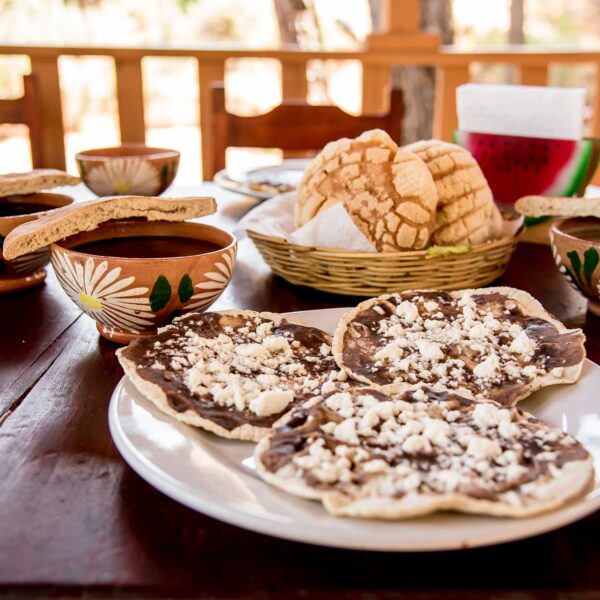
Gastronomy of Oaxaca
The Oaxacan gastronomy takes you on an amazing journey into one of the most outstanding and colorful cuisines in the world. Oaxacan food is among the most varied and delicious in Mexico, UNESCO has declared it Humanity’s Cultural Patrimony. Oaxaca’s gastronomy incorporates elements of pre-Hispanic cuisine, and lively imagination has created combinations that amaze by the color, the aromas and the flavors. The list of dishes that characterize this cuisine is endless, however, we can mention: Oaxacan Mole in its 7 varieties depending on the type of chili used, Chapulines, (dry roasted, spiced grasshoppers), tlayudas (large tortilla spread with the remaining of the lard and beans), maguey worm sauce, chiles rellenos (stuffed chilies), and of course the famous Oaxacan tamales in banana leaves. Oaxaca cheese is a soft white string cheese, which is similar to mozzarella. It is sold in “ropes” which are wound onto themselves into balls, and eaten cold or lightly melted on quesadillas is considered among the best in the world.… Read More
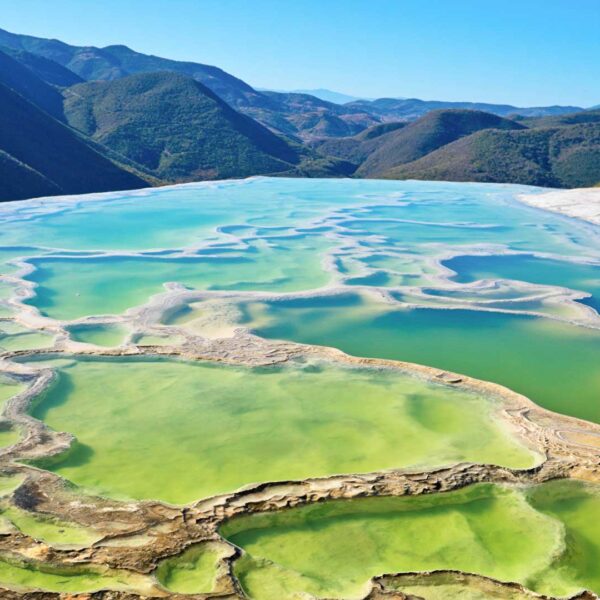
Oaxaca City Surroundings
Oaxaca is a destination that offers a great variety of attractions and tourist charms which leave anyone surprised. When arriving in the city of Oaxaca, the most common is to visit the historic center, the Santo Domingo Temple, the Macedonio Tourist Walk, the gastronomic delights in the Benito Juárez market, the Basilica de la Soledad, among other attractions. And one of the places that you cannot miss is the Monte Alban archaeological zone, which is approximately 30 minutes by car from the historic center. However, there are other places that are also worth knowing and are in the surroundings of the city. For this reason we recommend the following tourist routes.… Read More
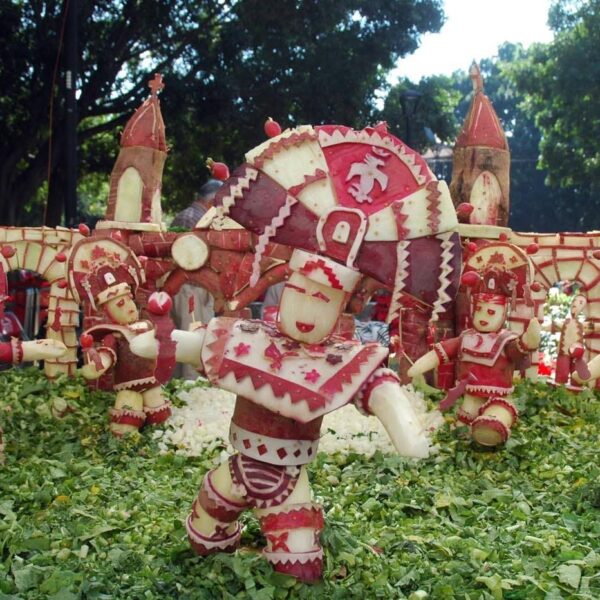
Traditions of Oaxaca
In the state of Oaxaca there are many customs and traditions throughout the year, and within the state, said that they have the same purpose of celebration but with different things, in fact from one region to another or even more from one town to another, the Customs vary for perhaps details but that is what makes them authentic. All the holidays are celebrated, the profane and the religious ones. The festival calendar is extensive due to the diversity of ethnic groups, which they still conserve. Oaxaca has a combination in its traditions of the culture of the ancestors and the current culture, a state that does not lose its customs, adapts them to new times and needs.… Read More
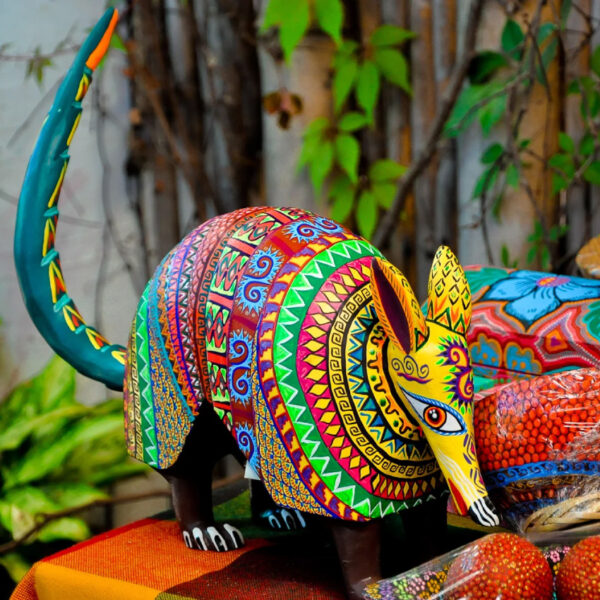
Handicrafts from Oaxaca
Handicrafts from Oaxaca are a great tradition and they offer a diversity that denotes the artistic richness and imagination of its people. The talented artisans of Oaxaca make beautiful pieces of clay, textiles, wood, metal, skins and other materials, forming a rich and varied folk art in both decorative and useful items.… Read More
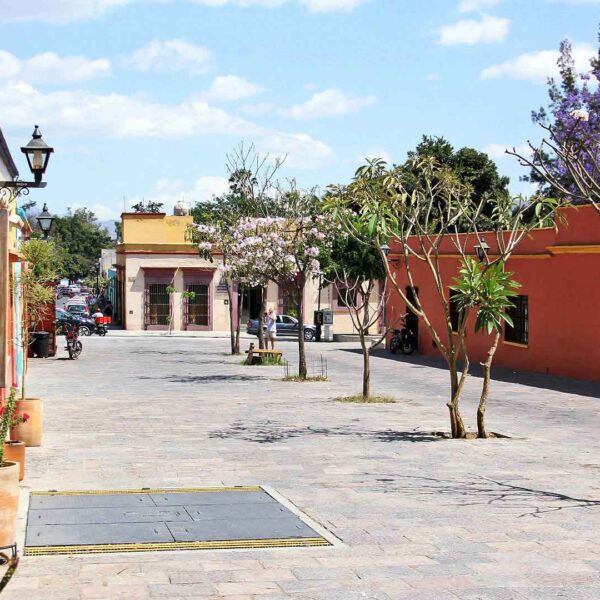
Oaxaca City
Oaxaca is the most diverse state in Mexico. It has peaks that reach more than 3,000 meters high, caverns that are among the deepest in the world, virgin beaches, secluded forests, and sunlit valleys. Oaxaca is rich in traditions and customs and has the largest ethnic population found in Mexico. The City of Oaxaca, the state capital, is famous for its architecture and for its rich cultural traditions. Oaxaca is also graced by a splendid and varied cuisine and spring-like weather year round. UNESCO declared the city a Cultural Heritage Site.… Read More
Map of OAXACA
Guided Tours in OAXACA
Flights & hotels in oaxaca, more tourist attractions in mexico.

On the Beaches of Mexico you can immerse yourself in the intense blue ocean of the Pacific bays, sunbathe on the shore of the warm and transparent waves of the Caribbean Sea in Quintana Roo or even rest on the beautiful coasts of the Gulf of Mexico. Mexican beaches hide wonderful secrets for the traveler. By visiting them, in addition to enjoying the excellent climate and water activities, you can discover splendid archaeological sites and interesting colonial cities without traveling long distances.… Read More

- Capital Cities
Folklore, gastronomy, literary culture, art and exhibitions, is what you will find in the capitals of the states of Mexico. To the north, colonial Mexico, Puebla, Guadalajara, Guanajuato, the Sonoran desert and the California peninsula. To the east Veracruz and the gulf. To the west Acapulco, Oaxaca and Tuxtla Gutiérrez. And to the south the Riviera Maya and the pyramids of Chichén-Itzá, Tulúm and Cobá in Yucatán, Palenque in Chiapas, the cenotes, and the Central American jungles.… Read More

- Traditions in Mexico
It is practically impossible to make a meticulous, and above all, accurate selection of the places to visit in Mexico. Each place that our country houses is unique and beautiful in its own way. Mexico, with its nearly 2 million km², has a large number of scenarios to offer, as well as endless activities to do. Do not lose your way and enter the places to visit in Mexico. In Mexico, apart from the beaches and its famous archaeological sites, there are many other really interesting sites and activities that you should know. In the surroundings of the main cities you will find places full of culture and tradition, where you can spend relaxing, interesting and fun vacations. On your trip through Mexico you cannot stop obtaining souvenirs, the crafts that are made here are of the highest quality and recognized worldwide. A shopping tour cannot be missed.… Read More

States Of Mexico
Mexico has an incredible diversity of landscapes, where the beauty of its beaches, internationally recognized, stands out. In its vast territory of coasts, there are beaches of unparalleled beauty, and colorful landscapes. A large network of first-class hotels and tourist services is available to visitors to these beaches. Mexico is also mystical places, dotted with archaeological testimonies inherited from its original inhabitants. Monuments made by the Mayas, Aztecs and Toltecs are located in magical landscapes, like lighthouses in an ocean of natural beauty. They offer visitors buildings that tell their history, and museums that collect their cultural heritage. And that keep alive ancestral traditions, in ceremonies and festivals, where you can enjoy cultural activities and entertainment.… Read More

The Gastronomy of Mexico has a great diversity of typical dishes, which is why it was recognized by UNESCO as Intangible Heritage of Humanity. The basic and representative ingredients of Mexican dishes are: corn, coriander, chili, beans, piloncillo, nopal and tomato. Mexican cuisine is also characterized by its sauces, which serve as an accompaniment to traditional dishes, prepared based on spices.… Read More

- Ecotourism and Adventure
Mexico is one of the best countries for Ecotourism as it has a great variety of flora and fauna, as well as a large number of refuges for extraordinary species. You can enjoy recreational activities of appreciation and knowledge of nature through contact with it, such as: stargazing, observation of natural attractions, wildlife and bird watching. Throughout México there are more than 176 protected natural areas, 5 of them considered by UNESCO as Natural Heritage of Humanity. Just for this and much more, we believe that Mexico is a Paradise for Ecotourism.… Read More

- Archaeological Sites
The Archaeological Zones are the cultural past of every Mexican. You will be amazed at the ambient, nature and the environment that surrounds them. Climbing to the top or being around it will take us back in time to admire every detail. México is a country of culture and traditions, many of which we have inherited from the pre-Hispanic inhabitants of this vast territory, although it is true that there were more settlements in the central and southern part of the country, it is also possible to find some archaeological remains in the north. … Read More

- Magical Towns
A Magical Town is a place with symbols and legends, towns with history that in many cases have been the scene of transcendent events for our country, they are places that show the national identity in each of its corners, with a magic that emanates from its attractions ; visiting them is an opportunity to discover the charm of Mexico. The Magical Towns Program contributes to revalue a set of populations in the country that have always been in the collective imagination of the nation and that represent fresh and varied alternatives for national and foreign visitors. A town that through time and in the face of modernity, has conserved, valued and defended its historical, cultural and natural heritage; and manifests it in various expressions through its tangible and intangible heritage. A Magical Town is a town that has unique, symbolic attributes, authentic stories, transcendent events, everyday life, which means a great opportunity for tourist use, taking into account the motivations and needs of travelers.… Read More
Leave a Reply Cancel reply
Your email address will not be published. Required fields are marked *
Save my name, email, and website in this browser for the next time I comment.
- States of Mexico
- Animal Rescue in Mexico

27 Unmissable Things to Do in Oaxaca City Mexico – A Travel Guide

Disclaimer: This page may contain affiliate links. If you make a purchase using one of those links, I may earn a commission at zero cost for you. Please see my disclaimer policy here, and my privacy policy here.
There are so many amazing things to do in Oaxaca City and incredible places to visit, from museums to historical buildings, archeological sites, art galleries, clothing shops, and some of the best Mexican natural wonders.
Oh! And the food! In this post, I will tell you all about it, including all the best restaurants, where to stay, and other useful, practical tips.

DOWNLOAD THE PDF OF THIS ARTICLE – THINGS TO DO IN OAXACA CITY
✔ free from ads ✔ available for reading off-line from your tablet, laptop, or phone
Of all the places in Mexico, Oaxaca City is my favorite; after your visit, you will understand why.
I have visited Oaxaca several times, and every time, I enjoyed exploring all the beautiful places the city has to offer, including the incredibly delicious cuisine. So unique.
Oaxaca is one of the most popular destinations to attend the Day of the Dead , one of the most important Mexican celebrations . However, Oaxaca is much more than that.
In this post, I will tell you all about it.
Are you planning a trip soon? I’ve got you covered
Top tours and activities in Oaxaca
- Hierve el Agua, Tenotitlan del Valle, Mezcal and Tule tour
Flavors of Oaxaca: Cooking Class with No Set Menu and Local Market Tour
- Monte Alban Guided Half Day Tour
- Only Hierve el Agua and Mezcal Distillery Tour
- Street Art Bike Ride
Best Hotels in Oaxaca
- Los Amantes
- Casa Carmen
- Casa Antonieta
▼ BOOK THE TWO TOP-RATED TOURS IN OAXACA MEXICO▼

Hierve el Agua, Teotitlán del Valle, Mezcal, El tule, desde Oaxaca
Discover one of Oaxaca’s natural minerals, the gigantic tree of el Tule which is over 2000 years old, Teotitlan del Valle to see how they saw the wool carpets, the ceremonial center of Mitla, outstandingly beautiful for its magnificent fretwork made of countless polish stones, and finally the magnificent Hierve el agua, the beautiful petrified waterfalls

Discover Oaxaca culinary secrets during a cooking workshop right in the heart of the city. You will visit a local market to gather ingredients for your class. There’s no set menu, so the group can select which traditional dishes to make. Learn about the origins of each dish and several techniques during your hands-on class. Your tour end with the delicious meal that you’ve created.
Every time I visit Oaxaca City, I can spend a quiet day reading or working at a coffee shop with a pretty garden.
Work out by taking a long walk and admiring the architecture, spoil the workout by indulging in delicious food and desserts, partying the night away, drinking some mezcal, and dancing to salsa music.
As a repeat visitor, I would like to share my top recommendations for what to see and do in this enchanting place.
So, let’s wear comfortable walking shoes, and let me take you on this journey.
What to do in Oaxaca City Mexico, at a Glance
👉 Book one of the top-rated FOOD tours in Oaxaca on VIATOR .
Oaxaca City is the homonymous state’s capital located in the southwest of Mexico.
This city has been a UNESCO World Heritage Site since 1987. It used to be called “ Verde Antequera ” (green Antequera, for a city in Spain).
Verde means green, and it is the color of the quarry used to build the impressive colonial architecture of the time.
The given name today is Oaxaca de Juárez, in honor of the former Zapotecan president of Mexico (1858 – 1872), Don Benito Juarez.
Oaxaca City was founded in 1529 by the indigenous Zapotec culture. Since then, the city center has been the center of economic, political, social, religious, and cultural activities that give the city its dynamism.

It preserves many icons that represent a cultural tradition of more than four centuries of art and the rich history of indigenous cultures.
Oaxaca is home to friendly people with many talents and a wealth of cultural events that attract travelers worldwide.
The city’s grandeur is best experienced at the many festivals that occur throughout the year. These festivals showcase the essence and heart of this destination and its people.
Carnival time is a time of joy and fills the city with sound and color. Holy Week is a time of reflection and respect for the city’s religiosity.
In summer, residents are busy with sports and dancing. The festivals of Mole, Tejate (local drink), Tamal , and Mezcal proudly display the diversity of gastronomy and flavors.
And, of course, the Day of the Dead celebrations, where the city dresses in all the elements that attract our ancestors to this annual gathering.
As you can see, Oaxaca has much to offer throughout the year for the eye and all the senses to explore and discover.
In Oaxaca, you can walk and take pictures, visit places, and participate in guided tours that will help you understand the political, economic, and social issues that have long plagued the city.

Which Are the Best Things to Do in Oaxaca?
I have known for a long time that the best things to do when traveling are only the things you love to do, but if I am being completely honest, that does not necessarily apply to Oaxaca.
If you have the time, you should try to work through the entire list of things to do in the city and, of course, make time for day trips from Oaxaca , which I will mention briefly here below and more in detail in another dedicated post.
How Many Days Do I Need in Oaxaca?
I think 5 to 7 days is a reasonable amount of time to finish everything at an average pace and still find time to relax. But of course, the more, the better.
Unmissable Things to Do in Oaxaca Mexico

1. Walk Walk Walk (And Visit the Tourism Office)
Honestly, I am a bit old school and love paper. Every time I am in a new place, I grab a map, figure out how far the “safe area” is to roam, and then I just go.
I also usually talk to the people at the hotel or lodging I am staying at. I ask them: where do you go? Where do you eat? What to do in Oaxaca City Mexico? This works great for me; you get to connect with the locals instead of looking at an Oaxaca travel guide.
Also, on my walks, I usually make the tourist office my first stop to find out about any special events or activities that might be going on during my stay.
The Oaxaca tourism office I usually visit is located downtown at 102 Calle Mariano Matamoros , and of course, there are other offices scattered around the city. They are usually open between 9:00 am and 6:00 pm.
2. Take a City Tour or a Free Walking Tour
For shared or private city tours (and other tours), I have mentioned them before, and I am probably biased (but no, they are the best).
You can contact Trez Travel , a fantastic local travel agency with lots of experience in the city and the state of Oaxaca.
And you can contact Gabriel Sanchez, who offers top-notch private services and tours.
There are many city tours that I will include here below, or you can go directly to the main tourist attractions and find local guides offering paid mini-tours of the place, for example, at el Templo de Santo Domingo de Gúzman.

Regarding a free walking tour , I recommend the one organized by Estación Mexico . It takes you outside the main downtown attractions and takes place every day at 11 am.
The meeting point is the main zocalo in front of the El Márques del Valle hotel .
I always take these tours and highly recommend them as a starting point. Please remember that “free” does not mean you take the tour and leave without paying anything.
The guides do this job for a tip, so I recommend you always offer at least 100 pesos per person for a 2-hour tour.
You can also find more walking tours with different itineraries here
3. Take a Sightseeing Tour Around Oaxaca by Tram

For people who are not very mobile or generally have trouble walking, I want to mention something here that I have never done because I love hiking.
However , at the corner of Macedonio Alcalá and Morelos Street , a tram will take you on a sightseeing tour of downtown Oaxaca .
It is called “ Tranvía el alebrije .” Please be warned that this tour is very slow. It is a large tram that must be almost full to run. It runs every 30 minutes, and the cost is about 70 pesos per person. The language is Spanish only.
4. Visit the Zocalo and the Oaxaca Cathedral
As in any colonial city, Oaxaca’s main square, zocalo , is always the perfect place to start exploring and one of the best places to visit in Oaxaca.
And why is that? Well, remember that our territory was conquered and colonized. Mexico started to be built on these squares, and all the elements of colonialism, religious syncretism, and the evolving government system began here.
In every colonial city , including Oaxaca , you will find 3 main elements:
- Ecclesiastical power in the form of a monastery or cathedral. In Oaxaca city, we have the Catedral de Nuestra Señora de la Asunción .
- Political powe r – the colonial buildings of the time were palatial and built to “govern” the city, and so we find what we call today “Palacio de Gobierno de Oaxaca.”
- The open square , the atriums, or “ Plaza Mayor ,” are the spaces where everything converged. All pre-Hispanic and colonial activities merged in these places.
One reason I enjoy sightseeing tours is that the local guides can provide interesting facts and information that is hard to find elsewhere.

For example, I remember my local tour guide explaining how when the indigenous people carved the details of the cathedral’s facade, they hid deities and symbols that were part of their own culture.
So when the indigenous people “prayed” outside the churches, in this case, the cathedral, it was a way to continue worshipping their gods freely without punishment.
We have to remember that in most cases, the Spanish conquerors chose to build each government office and religious center on top of what used to be a sacred site or a symbol of the leadership of pre-Hispanic times.
They did this to show that they were now in charge.
I highly recommend visiting the Zocalo area at least 3 times. One, bright and early . Why? For architecture and photography lovers, it’s a great opportunity to take advantage of the sunrise light and avoid the crowds.
Second, I recommend going after breakfast or in the middle of the day, which is the best time to learn about the main attractions.
Last, in the evening, around 7 pm, for people watching and cultural appreciation.
The evening is when local people go out and enjoy time with their families. You will find couples kissing on benches, friends lining up to eat an esquite , or families buying balloons for their kids.
This is a perfect time to try whatever street food or snack you can find in the Zocalo area. Also, this area is used for many activities like salsa dancing , book fairs , and more, and it all usually happens at night.
5. Walk the Whole of the Pedestrian Macedonio Alcalà From Top to Bottom and Its Streets.
This will undoubtedly take you most of the day. In a later article, I’ll cover some of the restaurants on this street in more detail, but Voces de Copal is one of my favorites, so treat yourself to lunch there.
Café brújula can be found all over Oaxaca, so it’s worth a quick stop for a coffee there as well. If you want to visit a bar, head to La Mezcalerita .
If you have a sweet tooth and want ice cream, stop by Nieves Manolo to try local craft flavors.

Macedonio Alcalá is where you get cash at the ATM , visit some museums , delight yourself in the Oaxacan art galleries, and eat , drink , and SHOP !
There are street vendors during the day, but they become more numerous as the sun goes down.
You can also find street snacks and local drinks like tejate or tamales . Also lots of sweets and pastries.
Usually, an additional artisan market is added to the existing markets during the weekends at the northern part of the street, just at the end of the Santo Domingo Museum .
6. Visit the Mercado Benito Juárez: (Market)

If you have never been to Mexico or any of its local markets but you have seen them portrayed in a movie, this market is the perfect example of what you would expect to see.
This market is the size of a total of 4 street blocks filled. Mexican street vendors , food stalls, and all kinds of trinkets are being sold everywhere, even outside of it. The whole market area is bustling , noisy , and colorful .
Its many aisles offer a combination of local art and handicrafts, traditional clothing, festivities decorations, mezcal stands, fresh fruit, veggies, seeds, chocolate, spices, and every single element used in the mole making, and more.
The best way to experience the market is by asking a lot of questions and doing tastings of everything available.
When you stop at the place where they sell chocolate, ask for a taste. Do the same at the mezcal place. Stop at the local bakery and buy a sweet.
Try the tejate drink. Buy one of the mini string cheese bags and try that too. Go crazy and try the chapulines because they are everywhere. Try it all! T ake it all in. You are in Mexico!
7. Visit the 20 de Noviembre Market
The 20 de Noviembre market is next door to the Mercado Benito Juárez, and here you will mainly go to eat.
You will be able to try: tlayudas , hot chocolate , pan de yema , enchiladas de mole , mole coloradito , tamales and its main “attraction,” the meat aisle . Not a great spot for vegetarians or vegans.
There is a 100-meter (at least) meat aisle where local people buy it to take home, but at 20 de Noviembre, the butchers have decided to set up grills and a seating area right next to the raw meat.
Cecina , tasajo , and chorizo are the 3 main “cuts” in Oaxaca. You can order as much of them as you want, along with tortillas , nopalitos , lemon , and salsa to make your tacos right on the spot.

8. Have a Mezcal at la Casa Del Mezcal and Then Hop on to Other Mezcal Bars
Of course, mezcal is one of the protagonists of any trip to Oaxaca, and there are many places where you can enjoy it, but a good reason to visit is that it is one of the oldest traditional cantinas in the city, founded in 1935.
There, as soon as you walk in, it feels like you are traveling in time. Plus, you find yourself amongst locals of different ages, and they will be interested in striking up a conversation with you, for sure!
Use the opportunity to brush up on your Spanish skills! I am sure you will be fluent after 3 shots. But remember, mezcal shots are to be kissed, not to be chugged .
9. Have Dinner or Drinks in One of the City Rooftop Bars or Restaurants

Oaxaca’s skyline is gorgeous, gives us very pretty sunsets, and its evening weather is delightful, so enjoying a meal or a drink on a rooftop is a must.
I have already mentioned La Mezcalerita , and we can add Mezquite , Gozobi , Terraza los Amantes , Tierra del Sol, or Praga Coffee Bar .
10. Visit the Xochimilco District

The city center of Oaxaca is quite large, but luckily, everything is within walking distance.
You can call the markets, the main square, and the pedestrian zone the most touristy area, but the whole downtown that you should visit includes this district, which is located on the north side of it.
The Xochimilco neighborhood is a very pretty and colorful area to walk around. It is very photogenic because there is quite a bit of street art around there.
People go there to see the Xochimilco arches, the cobblestone streets, and the aqueduct, and also because this neighborhood is where Rufino Tamayo , one of the most outstanding Mexican artists , was born.
11. Visit the Colorful Jalatlaco Neighborhood

This is my favorite neighborhood by far. I love to stay there when I go. This neighborhood is even more colorful than Xochimilco.
Many murals, chocolate shops, coffee places, small boutique hotels , and restaurants exist. Honestly, this is the perfect place for an Instagram photoshoot. It’s idyllic.
In 2019 Jalatlaco was included in the Time Out magazine list of the 50 coolest neighborhoods in the world.
12. Visit the Santo Domingo Temple, the Museo de Las Culturas and El Jardín Etnobotánico de Oaxaca.
If you have only 2 days in Oaxaca and you are interested in learning about its rich history and the local culture, you MUST visit this place. It is large enough that it will take you a great part of your day, but it is worth it.
This temple has been the stage of many historical events throughout history.
During the “reforma times” (part of Mexican history that gives place to the “birth” of a liberal party against the clerical powers), it served the military in different ways, then Porfirio Diaz (Oaxacan and Mexican dictator) gave it back to the church.

At the temple, you can hire a local guide to talk about architecture, history, altarpieces, and a magnificent vault.
The museum is impressive! It consists of 14 rooms that take you through the history of the state of Oaxaca.
From prehispanic times to modern times, you can learn about the different regions, cultures, gastronomy, art, crafts, agriculture, archeology, education, and more.
Unfortunately, most of the museum’s infographics are in Spanish, so it’s a good idea to hire a guide if you do not know the language.

Finally, for nature lovers, we have the botanical garden ( Jardín Etnobotánico de Oaxaca ). Here you can take a guided tour of it and learn all about the state’s agave plants and other endemic flora.
This place is important because Oaxaca is not only the state with the highest number of ethnic groups but also where we can find more plants.
There are guided tours in English and Spanish. Spanish tours are more frequent. For English, you must go Tuesday or Thursday at 11 am, and the entrance fee is 100 pesos . There is no entrance without being part of the guided tour.
13. Try as Many Coffee Shops as You Can
The state of Oaxaca is a coffee producer, and for that reason, the city offers plenty of coffee shops where you can indulge in espressos, cappuccinos, or even iced coffee.
I have mentioned Café Brujula because it is on the main pedestrian street and in many other locations, but it is not my first choice. It’s not bad; it’s become commercialized, like a local Starbucks, if you know what I mean.
One of the best places I know is called CAFETO and BARISTAS . Please DO NOT miss them.
You will find it on Calle de José María Pino Suárez 407- B. It is a tiny location, and having the coffee there can be tricky, but oh so worth it. My second favorite place is BOULENC. This is a great place to enjoy their bakery with a large cappuccino.

Also, Oaxaca is famous for its Cafe Pluma . It is called that because it is grown in the region of Pluma Hidalgo.
This coffee is internationally recognized as the best quality in our country, and it’s sustainably grown in the area. I must mention that this coffee is patented or certified with the “ denominación de Origen ,” meaning that it is a protected brand.
So, look for coffee shops serving this type of coffee when you are there.
Other coffee places to check out are Cafe Nuevo Mundo and Café Café .
14. Eat the 7 Moles Dish
As you may have noticed, Oaxaca is a destination for foodies. There are so many typical dishes that you can find exclusively here, or at least the original version. One of them is the mole .
There are 7 moles in Oaxaca, and having them in one dish is not only a meal but also education .

The Oaxaca moles are different in color, flavor (given by the pepper used or herbs added), preparation, protein served, and other factors.
The list of the 7 moles is: Amarillito , mole negro , coloradito , verde , chichilo , manchamanteles and rojo (red).
My favorite place to have them is Los Pacos , a restaurant behind the Santo Domingo Temple. Las Quince Letras also serves that dish.
15. Take a Cooking Class
👉 Book one of the top-rated cooking classes + market tour with a local chef on this site .
We have already mentioned that Mexico’s gastronomy is also on the UNESCO list of the cultural heritage of humanity, and Oaxaca contributes in great proportion to that inscription.
It is only logical that while in Oaxaca, we become chefs and take a cooking class.
The cooking class I have taken includes drinks like coffee, hot chocolate, margaritas, mezcal shots, and more. Also, it usually includes learning to make mole, as that is the most characteristic meal of Oaxaca.
They can cater to you if you are a vegan or a vegetarian. The class is run by a family in their beautifully decorated home.
Here are some other cooking class options.
16. check out the chocolate process at el mayordomo..
In and around Oaxaca City are many places to learn about the process of making the famous local chocolate.
El Mayordomo is the biggest brand in the state, so if you have a short stay or a small budget, this is a good option because the demonstration is free.
The demonstration only happens in one place, though. You have to go to the Mayordomo store near the Benito Juárez and 20 de Noviembre market.
17. Go to Plaza de la Danza and Eat Ice Cream
So far, we have mentioned 2 very important temples of Oaxaca City, the Cathedral and the Santo Domingo Temple, but we have yet to mention the one most dear to the local people.
I am talking about la Basílica de nuestra señora de la Soledad Cathedral of our Lady of the Assumption).
La señora de la Soledad is the patron saint of the city of Oaxaca and is, therefore, most revered by its people. It is known that many locals hold their weddings, baptisms, quinceañeras, and other ceremonies there.
So, it is very important to make a stop there to make a deeper connection with the Oaxacan culture.
But, you don’t only stop there to learn or sightsee, you go to that area for this very important reason too: Ice Cream!

Outside the basilica is a vast open area called Plaza de la Danza. Many local craft ice cream stalls have taken over a big chunk of the open space, where you can find exciting and creative flavors such as chapulin , mezcal , beso oaxaqueño , tuna , and more.
Make sure you go try them all!
18. Visit MACO Museum of Contemporary Art
Maco is the contemporary art museum of Oaxaca . Unfortunately, it is closed for now, but they are about to announce its re-opening.
The most interesting thing about MACO is that its main intention is to bring together the past and the present, the tradition and the modern, in its exhibitions and installations to portray the state’s cultural wealth and diversity.
If you are looking for different ways to connect and understand the culture of Oaxaca and its social and political issues through art, this is one of the best places to do it.
MACO is located on MACEDONIO ALCALÁ pedestrian street, opening at 10:30 am.

19. Visit IAGO, Institute of Graphic Arts of Oaxaca
The IAGO is a museum and library created by Francisco Toledo, a proud native of Oaxaca, a wonderful artist, and a passionate protector and promoter of the state’s culture.
Unfortunately, Francisco Toledo died only 2 years ago, but his legacy in Oaxaca is very alive.
There is a really funny anecdote about one of the things he did to protect the integrity of the city of Oaxaca.
It seems that some years ago there was an announcement of a McDonald’s to be opening right in the Zocalo area.
So what Toledo did was to call for a peaceful protest in front of the location where it would open and have people eat Tamales to express the unconformity towards having that fast food place there.
This cultural center has 5 exhibition rooms , 3 library rooms , a patio with endemic plants , a coffee shop , and a regional food restaurant .
To go into IAGO, there is no cost, and it opens at 9:00 am.
20. Eat In One of the Delicious Eateries

As we already know, Oaxaca is not short of options for where to eat delicious food.
I promise I will be more specific on which are the best restaurants to try while there, but I will leave you with a couple of recommended places that live in my heart:
- Any of the food stalls at the 20 de Noviembre Market
- The organic market of El pochote
- For Tlayudas, go to Tlayudas el Negro.
- For fine dining, go to Los danzantes.
- For artists and chefs, go to La Olla.
- For the best mole, go to Los Pacos.
Oaxaca Festivals
As I mentioned before, in Oaxaca, you can experience some of the most incredible festivals where the creativity of the locals is expressed at its best. Here I am listing some of the most important ones.
21. Night of the Radishes
This is a deeply rooted Christmas-time tradition in Oaxaca. It occurs on the evening of the 23rd of December and is believed to go back to 1897.
The Night of Radishes is a traditional Oaxacan festival with a popular stamp in which market gardeners and flower growers display the artistic talent of their hands with unique designs made in radish, flor inmortal (a type of flower), and totomoxtle (corn shell plant).
The exhibition lasts only a few hours, but it brings together practically all the local people in the main square who attend to admire the creativity of the participants in this contest.
It is said that this tradition started because, during Christmas times, the farmers would bring all the fresh produce to make dinner.
To make their stalls more attractive, they began to create figures with radishes, adorning them with cauliflower leaves and flowers made from baby onions. They placed radishes, lettuces, turnips, onions, etc., all in an artistic way.
The works that the gardeners and flower growers present are inspired by motifs consistent with the Christmas season, such as the birth of Jesus or the arrival of the Three Wise Me n.
With the Festival of the Virgin of Solitude , the Day of the Dead , typical costumes of the State, dances, amongst others.

22. La Guelaguetza
Gastronomic, artisan, and sports exhibitions, traditional representations of the most diverse communities in the state, as well as exhibitions, concerts, and all kinds of events that share the culture and sport of Oaxaca are some of the events to take place in July , at the Guelaguetza festival.
The origins of this event go back to both colonial and prehispanic times.
It is said that 2 traditional celebrations were held on a hill around the same dates and on the same days, first by the Zapotecs and then by the Carmelite nuns that built a church there ( Iglesia del Carmen Alto ).
This coincidence gave way to what is called Lunes del Cerro (Hill Monday)
The Hill Monday Festivities occur throughout July with folkloric presentations, concerts, exhibitions, and cultural and sports events.
Guelaguetza is a Zapotec word that describes the participation of people through cooperation.
So, groups of people from the 8 traditional regions of Oaxaca get together to present a sample of their cultural heritage through dances performed to the sound of music and songs that are their own, wearing the dress of their respective towns.
In the end, each group distributes to the public their “ Guelaguetza ” composed of objects characteristic of their respective regions.
The Guelaguetza lasts the whole month, and there are events everywhere. Nowadays, there is an auditorium where the main events at cost occur, but the whole city has a constant party day and night.
One of the main “happenings” during those days was the parades called Calendars, in which music bands walk through the streets of the city center, followed by the “chinas” (women holding big baskets) and the “Marmota,” a large spherical lantern, and the “giants,” huge motley type characters controlled by the participants.
23. The Mezcal Fair
The Mezcal originates in Oaxaca, so a Mezcal fair is due. It also takes place during July and is part of the Guelaguetza festivities.
It’s a full set up of Mezcal galleries, gastronomic exhibitions, and cultural and artistic forums in an area of 8,900 square meters in the shape of a cross. It usually takes place in the Paseo Juárez at “El Llano” Park.
Best Day Trips From Oaxaca
Although the city of Oaxaca is not short of things to do and places to visit, its surroundings are brimming with incredible places, both historical sites and natural wonders.
Here I am sharing a quick overview of them, but I will share them in a separate post.
24. The Archaeological Site of Monte Albàn

This is one of the two most important archeological sites in the area. It is only 30 minutes away from Oaxaca City.
The site is located on a low mountainous range rising above the plain in the central section of the Oaxaca Valley. This is a great day trip for history and culture lovers, but also nature lovers, as the views from the highest points are breathtaking.
25. Visit the Town and Ancient Ruins of Mitla
Monte Albán might be the most famous, but Mitla is my favorite of both ancient ruins. Mitla is also said to be the most important site for the Zapotec culture. It is located 40 km away from the city center.
An interpretation of the past says that Mitla was a “ place for rest ” or a place for the dead. Mitla comes from the word “ Mictlan .” One of its meanings is “the underworld.”
Mitla is a pre-Columbian archeological site that expresses the Mesoamerican belief that death was the most consequential part of life after birth. It was built as a gateway between the world of the living and the world of the dead.

We will be talking about Mitla and the rest of the day trips in more detail soon, but I want to mention a fun fact that our guide told us.
One of the interpretations made by historians and archeologists is that Mitla remains so apparently untouched because when the Spanish arrived, intending to destroy the ancient site.
They got stuck in awe of its beauty and decided to spare it and instead build their churches and other colonial buildings around.
So, Mitla becomes a really good place to observe and imagine the past events in which 2 cultures collided.

26. Visit el Tule
The best way to visit El Tule is for you to include it on your day tour, either to Hierve el Agua or Mitla as it is on the same path.
Tule is short for the small town called Santa Maria del Tule , and its main attraction is a huge and ancient ahuehuete tree (as it’s called in the Nahuatl language).
The tree has a circumference of 42 meters, and it is around 1400 years old (according to the local people and legends around the tree). Mexican people refer to this tree as “ El árbol de Tule. ”

One interesting and fun fact that can be polemic at the same time is that there you will find community kids acting as guides that are “working” (for tips) to show you the different formations that can be identified on the tree trunk: a crocodile, a lion, etc.
As you know, everything has changed in times of pandemic, and it’s no exception for this attraction.
Before, you could go within the atrium of the town’s church where the tree is.
But right now, no one is allowed to go within the area, and the tree can only be seen from the transportation or outside the gate, more or less at a distance of 200 meters.
27. Hierve El Agua

This is the popular petrified waterfall of Oaxaca and one of the most amazing natural wonders in Mexico that you must visit.
Hierve El Agua is 1 hour and 40 minutes from the Oaxaca city center. It is one of the best day trips in the area because it’s a perfect place to connect with nature and enjoy breathtaking views.
There you can hike to the top and the bottom of the waterfall, drink fruit juice, eat a tlayuda , or freshen up at the exciting swimming pool, which was made to look like it’s part of the natural geography of the place.
Hierve El Agua belongs to the local community next to it, and there has been a little bit of tension between them and the government, so for a bit, the site was closed.
We got the news that it opened just before the Day of the Dead festivities, but the problem hasn’t found its solution, so if you plan to visit on your own, make sure you confirm that it is indeed open to the public.
Here are some tour options to Hierve El Agua .
28. Mezcal Tasting at Don Agave
Don Agave is a mezcal house that produces several mezcal brands of multiple agave plants.
They produce the mezcal the artisanal way, and they are located around 30 minutes away from Oaxaca City.
Don Agave offers a mezcal tour to learn about its making from the beginning, and they have you participate in a tasting right after.
The one I experienced (several times) included as many as 8 to 10 different types and 5 or 6 mezcal cream flavors . They are fun!
You can also have lunch there. They have a very good Oaxacan food restaurant.
29. Arts and Crafts Workshops Visits and Demonstrations

Another of the top things to do on a day trip to the surrounding area of Oaxaca is to go to arts and crafts workshops to demonstrate the making processes and to shop, of course!
3 of the most sought workshops are:
- The Alebrijes of San Martin Tilcajete village.
- The Barro Negro of San Bartolo Coyotepec
- The wool and cotton carpets of Teotitlán del Valle
All the 3 villages are a short driving distance from the city center.
Where to Stay in Oaxaca City Mexico

I recommend always staying in the central area , including the Xochimilco and Jalatlaco neighborhoods. These are some of my recommendations:
- Oaxaca Real : Great value, located parallel to the Macedonio Alcalá pedestrian street.
- Parador del Dominico : very close to the Santo Domingo Temple.
- Hostal de las Américas : budget and central.
- Hotel Magda – simple and inexpensive in the Jalatlaco neighborhood
- Hotel Casántica for a more high-end treat in the main downtown area.
Read more on where to stay in Oaxaca City, Mexico , or check directly on the map below.
Things to Do in Oaxaca City Mexico: FAQ
What should i do in oaxaca.
Well, if I had to choose, I would go on a cooking class that included a market visit and mezcal tasting, and I would spend the Day at the Santo Domingo Temple , at el Museo de las Culturas, and the Jardín etnobotánico de Oaxaca
How Many Days Do You Need in Oaxaca?
If you are a traveler that is going at a fast pace through Mexico, 2 nights and 3 days is enough to take in the city and make some day trips.
If you have more time and budget while traveling through Mexico but still can’t do a whole week, give Oaxaca 4 nights and 5 days.
If you are planning to come to Oaxaca only and can do it, stay the full week or even 10 days.

Is Oaxaca Safe Right Now?
The short answer is YES; Oaxaca is safe right now, but you have to consistently apply common sense.
As we discussed in our article on safety in Mexico , the basic principles of staying safe are summed up in the following list.
– Do almost everything in daylight. – Don’t flash money. – Keep your valuables in the hotel’s safe or develop your own safe hiding places. – Don’t flash jewelry or many electronic gadgets in areas like local public markets or at crowded events. – Don’t get too drunk and mix and mingle with just anyone. – Do not do drugs. – Do not leave your things unattended ANYWHERE. – Keep your purse or bags in front of you. – Do not put anything valuable in your clothes pockets – By no means become a revolutionary and join social demonstrations of any kind.
All of the above applies to men, women, and all.

What 3 Things Is the State of Oaxaca Known For?
The Oaxaca state is mainly known these days for its gastronomy for the Day of the Dead and its arts and crafts.
What Food Is Oaxaca Mexico Famous For?
The most popular food of Oaxaca is, of course mole, chapulines , Tlayudas, and their tasajo meat.
How to get from Puebla to Oaxaca
Getting from Puebla to Oaxaca is easy. ADO busses will get you there in about 6 hours and you can travel either by day or night. Or you can rent a car. In the detailed articles linked above I explain it in detail.
Final Thoughts
After this thorough article, I am sure you are ready to tackle the city and make the most of your time there. Stay tuned as more articles on the city are coming out soon.
Before You Go…
Here are some useful posts that you may be interested in…
- How Much Cash to Bring to Mexico
- Renting a Car in Mexico
- 35 Mexico Travel Tips You Need to Read Before Traveling
- The Best Travel Insurance for Mexico
- Why Buy a Mexican Sim Card When You Travel
✨ Mexico Travel Planning Guide ✨
👉 do i need travel insurance to travel to mexico.
I would do it if I were you. You never know what can happen and know that no matter what, you will be covered with any expenses will give you peace of mind, and make your travel worry-free. You can check out SafetyWing which I have used and find it affordable and comprehensive and also Travel Insurance Master w hich is great because you can insert all your information and what kind of insurance you need and their system will pull out the best insurance for your need.
🚰 Can I Drink Tap Water in Mexico?
No, you can’t! Maybe in some areas or in some homes where they have installed water filters but to be on the safe side, I would say, never drink tap water in Mexico. Carry a water bottle with you and fill it up where you find available potable water sources. Most of the hotels have those.
🚗 Is It Safe to Drive in Mexico?
The short answer is: depending on where you are. Although in general if you stick to the main roads and don’t drive at night you should probably be safe. In lesser tourist areas you should probably check the local news to stay up to date. Driving in the Yucatan Peninsula is easy everywhere, even at night, although I would still avoid it. I recommend Discover Cars because the site offers the option to compare prices among different car rentals and you can add their own full coverage.
Read more on my guide on Renting a car in Mexico .
📱 Will My Phone Work in Mexico?
It will probably work, especially if you have a European or US phone, but your roaming rates may be to the stars (check with your SIM provider). Even if have an affordable international rate, you will be much better off by buying a Mexican SIM Card . It’s cheap, easy to set up, and it will keep you connected with your friends, family, and, more important, google Maps so you will never get lost!
🤕 Is It Safe to Travel to Mexico Right Now?
The short answer is, yes it is. However, there are parts of Mexico that are indeed troubled and you should avoid for now, and others that are super safe and easy to travel around.
Regardless of where you are you should always use some common sense rules such as, never flaunting expensive clothing, accessories, electronics, or money and keeping a low profile.
Read more on my detailed guide on safety in Mexico . If you are traveling to a specific destination I have got you covered as well:
- Is Cancun Safe?
- Is Tulum Safe?
- Is Puerto Vallarta safe?
💉 Do I Need Any Vaccine to Travel to Mexico?
No, there is no vaccine requirement (of any kind) to travel to Mexico
🇲🇽 Do I Need a Visa to Travel to Mexico?
If you are coming from the US or Europe you don’t need a VISA to enter Mexico. Once you get in you need to fill out a form that you need to keep with you until you leave. If you don’t have it you will pay a fine. Although the tourist visa for US and European travelers used to be 6 months long which you could easily renew by leaving the country for a couple of days and going back, nowadays they have been stricter. You may be asked how you would sustain your living and other similar questions. Sometimes they even ask you to show your credit cards. It seems odd but they can do that. If you intend to stay longer than a usual couple of weeks’ vacation time, just be honest and explain your plans. If you are not from the US, check this site to see if you need a visa
💸 Where Do I Find the Best Travel Deals for Mexico? 💸
A trip to Mexico can be expensive if you love to travel with all the comforts (like I do). There are a few tricks that will help you find the best deals. Here are my tips:
👉 DON’T travel in the high season, which is Holy week, Christmas and winter in general, and August. 👉 Book months in advance to find early booking discounts 👉 Use aggregators such as Discover Cars to find price comparisons and VRBO for vacation rentals! 👉 Look for packages flights+hotels on Expedia . 👉 Check on Booking.com or Hotels.com for hotel deals
Happy travels!!
Bianca is a Mexican, a traveler, an ally, a dreamer, a creative, 100% human and so much more. Bianca has +20 years of experience in personal travel throughout 3 continents, and many countries, cities, towns, and communities. A passionate advocate of her country (despite it all), an amateur writer & blogger, an art lover, a certified yoga teacher, an entrepreneur, a neophyte researcher, a philosophy fan, and knowledge-obsessed. And, even if in baby steps, she is making the dream, come true through her brand: Mexico4Real Journeys
USPS suggests the address below
Time to upgrade your browser.
If you're reading this, you're surfing using Internet Explorer 6, an eight-year-old browser that cannot cope with the demands of the modern, secure internet. For the best web experience, we strongly recommend upgrading to Firefox , Opera , Safari , Google Chrome , or a more recent version of Internet Explorer .

- Oaxaca City Links
- Oaxaca City Introduction
- Nearby Destinations
- Statewide Links
- Mexico Destinations
- Visit Other States
- Visit Other Countries
A summary of what Oaxaca City has to offer.

Sprawling urban center with a culture all its own, Mexico City might be a crowded metropolis but spend enough time here and you'll find historic sites, cultural offerings and lively local markets.
- Recreational Activities
- Things To Do - Overview
- Tour Companies
- Tourist Attractions
- Attractions
- Sightseeing Tours
- Bird Watching
- Horseback Riding
- Offroad - ATV
- RV Parks Camping
- Scuba - Snorkel
- White Water Rafting
- Lodging - Hotels, Resorts, etc.
- RV Parks - Campgrounds

Use our easy Lodging Search to find exactly the type of accommodation you are looking for at the right price.
- Transportation
- Tourism Resources
Transportation companies, driving directions and more for Oaxaca City.
Oaxaca City weather report, historic temperatures and climate info,…
Searchable lists of Oaxaca City tourism offices and other helpful government agencies.
Explore destinations near Oaxaca City.

- Oaxaca City Photo Gallery
- Mexico Photo Gallery Mexico Video Gallery

Below are the Free Visitor Guides for Mexico Area. Click here to view all the guides avialable for Mexico.
- Connecticut
- Development
- Massachusetts
- Mississippi
- New Hampshire
- North Carolina
- North Dakota
- Pennsylvania
- Rhode Island
- South Carolina
- South Dakota
- Washington D.C.
- West Virginia
Oaxaca City, Mexico - Tourism Resources
Helpful tourist offices, city, state, federal,....
- Introduction
- Where To Stay
- Sightseeing Overview
- Recreation Overview
- Tourism Resources >
- Photo Gallery
Addresses, phone numbers and contact information for visitor centers and other organizations that provide tourism information in the Oaxaca City area are listed below. Feel free to call any of them during normal business hours with your questions.
Oaxaca City Tourism Resources
Search oaxaca city tourism resources, 1 tourism resource result s, more info official website mexico tourism board.
- Viaducto Miguel Alemán 105 Col, Escandón
- 800-262-9128
- Advertising
- Privacy Policy
- Report a Problem
- Make A Suggestion

- Go Travel Sites
- Houseboating.org
Email Page Link
Switch to Mobile Browser Mode
We offer a compact version of Go-Mexico for mobile users, allowing you to access just the information you need on the road. Of course, you can still use the full version of Go-Mexico on your mobile device just as you can on your desktop.
Continue to Mobile Site Return to Main Site
Oaxaca Travel Guide

Courtesy of Maria Swärd | Getty Images

Why Go To Oaxaca
Oaxaca – pronounced wa-HAH-ka – is both the name of this Mexican state and its capital city. Here, you'll find colonial streets lined with shade trees, vibrant markets filled with artisans and mouthwatering aromas drifting from market food stalls and trendy eateries. These days, many claim that Oaxaca is Mexico's newest culinary capital. But that's not to say the city has forgotten its rich history, which dates back to the ancient Zapotecs that once occupied the now preserved ruins at Monte Albán . In fact, many of the handicrafts and recipes, which make Oaxaca such a unique place to visit and shop, have been carried down from generation to generation.
There are also abundant opportunities for daytrip excursions – and a host of reliable tour operators to guide you – if you want to stretch your legs for a hike and dip in the mineral baths at Hierve el Agua or wander the agave fields at a Mitla mezcal distillery.
Find Flight and Hotel Deals
Navigate forward to interact with the calendar and select a date. Press the question mark key to get the keyboard shortcuts for changing dates.
Navigate backward to interact with the calendar and select a date. Press the question mark key to get the keyboard shortcuts for changing dates.
- # 10 in Best Cheap Mexico Vacations
Best of Oaxaca
Best hotels in oaxaca.
- # 1 in Quinta Real Oaxaca
- # 2 in Grand Fiesta Americana Oaxaca
- # 3 in Hotel Azul Oaxaca

Best Things to Do in Oaxaca
- # 1 in The Zócalo
- # 2 in Templo de Santo Domingo
- # 3 in Museo de las Culturas de Oaxaca
Popular Tours

Hierve el Agua, Tule Tree, Mitla and Mezcal Distillery Tour
(638 reviews)
from $ 45.00

Only Hierve el Agua and Mezcal Distillery Tour
(274 reviews)
from $ 50.00

Monte Alban Guided Half Day Tour
(338 reviews)
from $ 33.79

Oaxaca Travel Tips
Best months to visit.
The best times to visit Oaxaca are during the months of April to May and September to October. Both spring and fall are characterized by moderate temperatures and fewer tourists. The months between June and August, as well as the holiday season between mid-December and early-January, constitute high season. For the most part, the winter months – November to March – are considered low season, except for the few weeks that fall across the winter holidays.
Weather in Oaxaca
Data sourced from the National Climatic Data Center
What You Need to Know
Head up to go north The city slants downward from north to south as you approach the Zócalo , so if you're ever disoriented, heading uphill will take you north.
Time is relative Oaxaca marches at its own pace, so don't expect anything – from buses to tours – to be running right on time.
Pick up some souvenirs Oaxaca originals include Zapotec rugs and tapestries, as well as wooden carvings called alebrijes .
How to Save Money in Oaxaca
Bargain shop If you speak Spanish, talk to the Mexican traders about paying a few less pesos on wares like rugs, ceramics, alebrijes (wooden carvings) and silver jewelry.
Nosh in the markets Buying some of your meals in the open-air markets, such as Mercado Benito Juarez , will cut down on costs, but make sure that you wash any produce with bottled water to avoid stomach woes.
Avoid the big events Travel in the late-winter low season and steer clear of popular events, such as the Day of the Dead, which drive up hotel prices.
Culture & Customs
What was once home to the thriving Mixtec and Zapotec civilizations is now a thrumming culinary capital with a strong hipster vibe. Its main industry is tourism.
Oaxaca's official currency is the peso: 1 peso is equal to roughly 5 cents. Since the Mexican peso to U.S. dollar exchange rate fluctuates, plan to check the conversion rate before you go . You should also keep in mind that not all businesses and restaurants take credit cards, so be sure to check in advance. And when it comes to tipping in "the land of the seven moles," keep in mind that 10 to 15 percent in restaurants and hotels is a good rule of thumb.
Spanish is the official language spoken in Oaxaca. As long as you know a few key phrases, such as buenos dias (good morning), por favor (please) and gracias (thank you), you should be able to get around this tourist-friendly city just fine.
Oaxaca is considered one of the safest states in Mexico, but as with any big city, it does experience petty crimes. Tourists can keep pickpockets at bay by keeping money tucked away and securely out of sight.
What to Eat
Oaxaca has several specialties that no visitor should miss, but a word to the wise: a strong stomach is required. One of those specialties is a chili-based sauce, called mole. In fact, Oaxaca is nicknamed "The Land of the Seven Moles" for the many different types of sauce produced here, which can range in color, from black to yellow; in ingredients, from chocolate to almonds; and in heat level, from mild to super spicy. Another Oaxacan specialty is mezcal, which is a spirit similar to tequila, served in a glass rimmed with a concoction of spices and ground worms and lime wedges.
And when it comes to a full meal in this foodie capital, travelers say you really can't go wrong. The market stalls are just as delicious as the formal establishments. For breakfast, try Café Casa Oaxaca located on Calle Jazmines, a little more than 2 miles from the Zócalo. A stone's throw from the Templo de Santo Domingo is Oaxacan celebrity chef Alejandro Ruiz's Casa Oaxaca el Restaurante . To sample moles, head to Las Quince Letras , which is just a couple blocks from the Templo de Santo Domingo on Calle Abasolo. And for some cheap-yet-delicious street foods, look no further than Itanoni Flor del Maiz located on a quick taxi ride from central Oaxaca on Avenue Belisario Dominguez.
Getting Around Oaxaca
The best way to get around Oaxaca is on foot, especially if you're sticking to the tourist areas in downtown Oaxaca. To travel farther afield, buses or taxis are fairly affordable ways of getting around, though keep in mind that they're not known for efficiency. A rental car will give you the flexibility to travel on your own time, yet might not be the best option for someone unfamiliar to the area and the road rules.
The closest airport is Aeropuerto Internacional de Oaxaca (OAX), which is located about 5 miles south of Oaxaca City. You can reach the city by taxi, bus or rental car.
Colonial Oaxaca is a filled with unexpected color.
Explore More of Oaxaca

Things To Do
Best hotels.

You might also like

Mexico City
# 2 in Best Cheap Mexico Vacations

# 1 in Best Places to Visit in March 2024

Guadalajara
If you make a purchase from our site, we may earn a commission. This does not affect the quality or independence of our editorial content.
Recommended
The 50 Best Hotels in the USA 2024
Christina Maggitas February 6, 2024

The 32 Most Famous Landmarks in the World
Gwen Pratesi|Timothy J. Forster February 1, 2024

9 Top All-Inclusive Resorts in Florida for 2024
Gwen Pratesi|Amanda Norcross January 5, 2024

24 Top All-Inclusive Resorts in the U.S. for 2024
Erin Evans January 4, 2024

26 Top Adults-Only All-Inclusive Resorts for 2024
Zach Watson December 28, 2023

Solo Vacations: The 36 Best Places to Travel Alone in 2024
Lyn Mettler|Erin Vasta December 22, 2023

26 Cheap Beach Vacations for Travelers on a Budget
Kyle McCarthy|Sharael Kolberg December 4, 2023

The 50 Most Beautiful White Sand Beaches in the World
Holly Johnson December 1, 2023

The 26 Best Zoos in the U.S.
Rachael Hood November 16, 2023

44 Cheap Tropical Vacations That Feel Expensive
Holly Johnson|Alissa Grisler November 10, 2023


19 Useful Things to Know Before Travelling to Oaxaca, Mexico
First time travelling to Oaxaca? Here are some handy Oaxaca travel tips to help you prepare!
It’s no secret that I have a huge crush on Oaxaca , Mexico. This city has stolen my heart twice, for its history, beauty, friendliness and deliciousness (the food in Oaxaca is the BEST!).
After two trips to this wonderful city, I’ve put together this guide on a few things I wish I’d known before travelling to Oaxaca . I’m hoping this helps you get ready to visit Oaxaca or even inspires you to put the city on your bucket list.
And if you need help planning your visit to Oaxaca, check out my Oaxaca itinerary . It’s an overview of the best things to do in Oaxaca in four days, and can be adapted if you have more or less time in Oaxaca.
So, without further ado, here’s my Oaxaca travel guide with some handy travel tips !
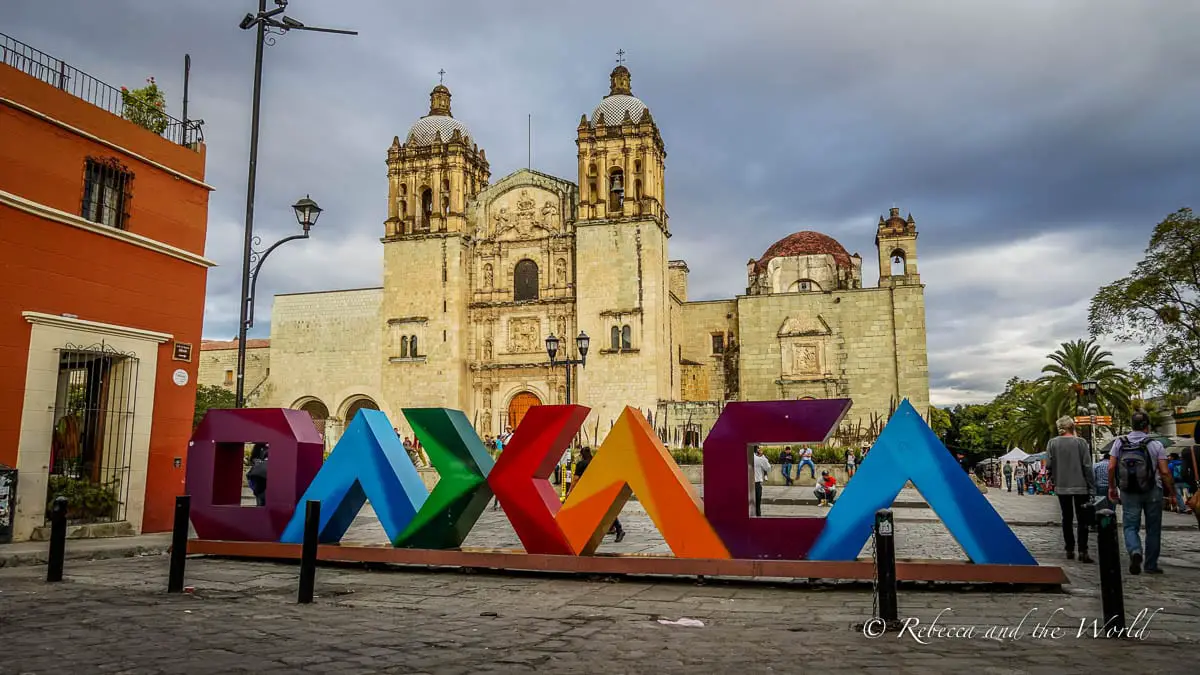
This blog post may contain affiliate links, meaning if you book or buy something through one of these links, I may earn a small commission (at no extra cost to you).
What's in this article (Click to view)
1. The pronunciation can be tricky
You’ve probably seen the word “Oaxaca” on paper or a computer screen and gone, “huh?”.
Why so many vowels?! And what’s with that “x”?!
To help alleviate your confusion, it’s pronounced wa-HAH-kah. Rolls off the tongue once you know how to say it.
2. Oaxaca is both a state and a city
While Oaxaca is both a state and city , in this article I’m talking specifically about Oaxaca city , or Oaxaca de Juárez if you want to get formal.
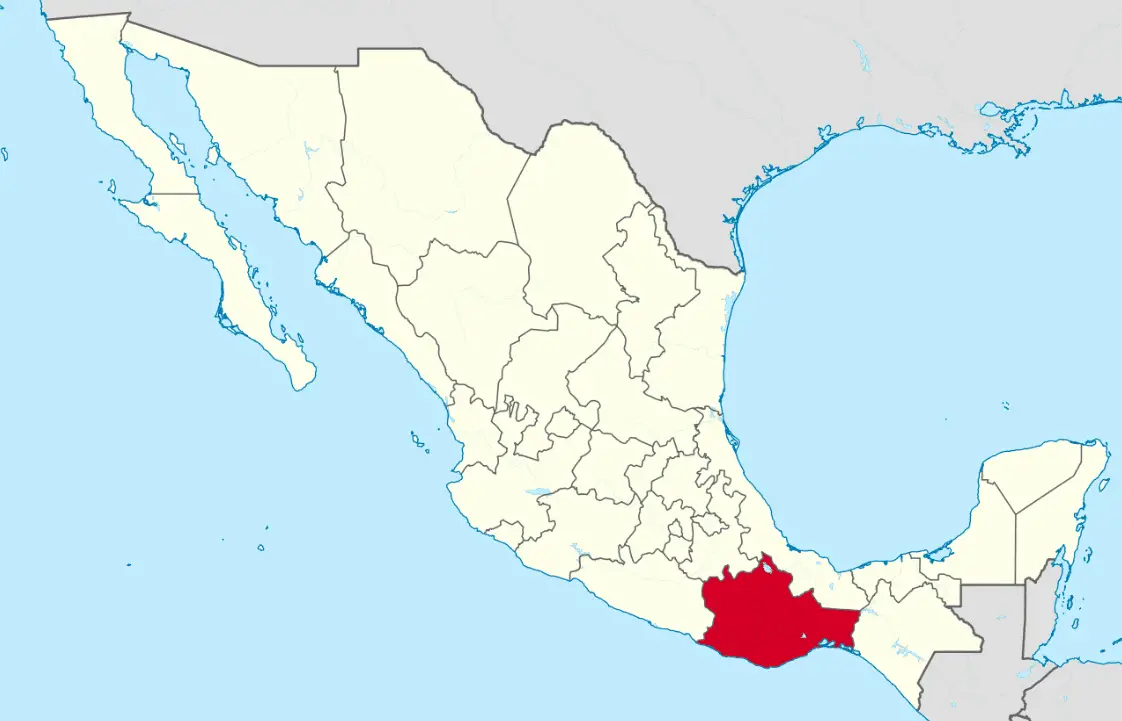
Oaxaca state is the 10th largest in Mexico, with a population of almost 4 million. It’s in the southwest of the country.
While the state’s mountainous and rugged terrain does make journeys through Oaxaca a little longer and more challenging, it’s also been a contributing factor to the survival of many indigenous peoples and cultures (although of course the picture’s not all rosy). Traditions remain strong in Oaxaca, something that you’ll see throughout Oaxaca city.
Oaxaca city is the capital of the state and has a population of just over 300,000 people. Despite its size, it’s got a wonderful small-town vibe.
3. Plan on travelling to Oaxaca for 3 days at a minimum
To truly experience everything that Oaxaca City and the surrounding region has to offer, plan to visit Oaxaca for at least three days – but you could easily spend a week here. Any less than that and you won’t get to enjoy the food and culture that make this city one of my favourites.
There really are an incredible amount of things to do in Oaxaca , and I don’t want you to miss out on any of it!
We spent 4 days in Oaxaca and it was perfect – enough time to see everything we needed to see (and eat!) but also plenty of time for relaxing in the zocalo and people-watching.
But, to be honest, I could easily spend a month in this city. (It’s on my cities-to-live-in-one-day list.)
4. Come hungry
If you’ve heard anything at all about Oaxaca, I bet it’s about the food scene . Plan to visit with an empty stomach and an open mind because you need to try everything.
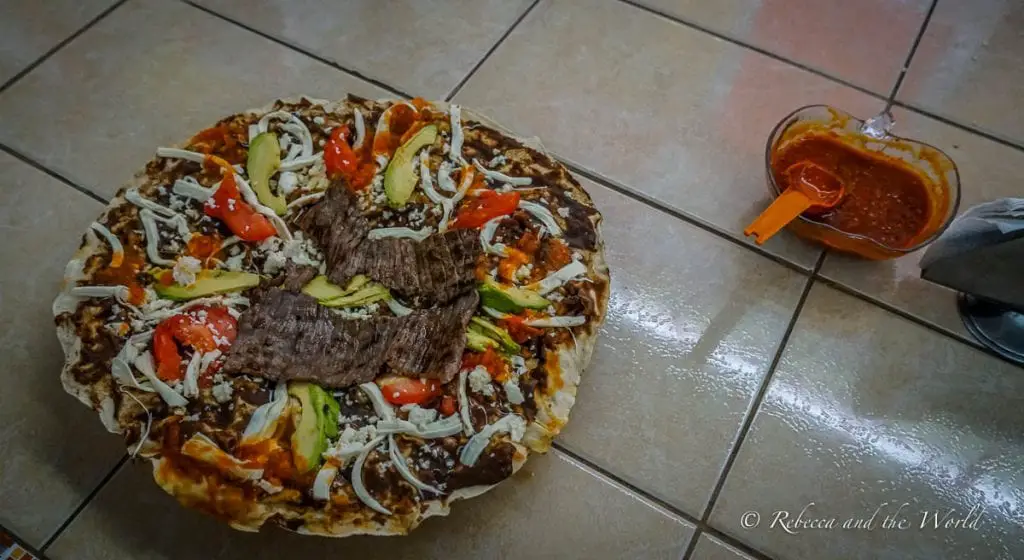
You can’t visit Oaxaca without trying ALL the food, so to start you off drooling, here are a few recommendations for what to eat in Oaxaca :
- Tlayudas – often called Oaxacan pizza, these crispy tortillas are topped with beans, tomato, lettuce, meat (usually pork or thin beef) and stringy quesillo . They’re best shared with someone as they’re pretty big and messy to eat!
- Mole – Oaxaca is known as the land of seven moles and you should try them all. If you’ve never heard of mole (pronounced MOH-lay) then you’re in for a treat. Mole is a traditional sauce that’s earthy and rich. In some moles, chocolate is a key ingredient, but not all. Mole is labour-intensive and some varieties can contain more than 30 or 40 individual ingredients. Make sure to try a Oaxaca mole when you visit (and you can even buy the paste to take home with you).
- Memelitas – the perfect snack, these are fried or toasted rounds of masa (corn dough) topped with beans, cotija cheese and some kind of protein.
- Atole – this hot, thick drink is made from masa mixed with water, cinnamon (and often other spices), vanilla and sugar, and it’s great for breakfast.
- Tostadas – another great snack, these are tortillas that are toasted until crunchy and then topped with other ingredients.
- Pan de yema – light bread that you dip into hot chocolate (sounds strange but it’s so, so good!).
- Tascalate – another drink that’s made from roasted corn, chocolate, nuts, vanilla, sugar and achiote. You can drink it hot or cold, or with milk or water (I like it cold with milk!).
This list barely touches the surface of all the amazing Oaxaca food – there are so many more delicious things that you should try (including chapulines – fried grasshoppers – for the brave!).
Exploring the markets and street food carts are a good place to start trying Oaxacan food. Just follow the crowds and order what everyone else is eating and you’ll end up with something that makes your taste buds dance.
But, if it’s all too overwhelming and you’d like a local to show you what, where and how to eat, then book a food tour with Omar of Oaxacking .
We spent four hours eating with him and it was just like hanging out with a mate who wants to show you around their home city. I’ve seriously never eaten so much food in four hours (a siesta was needed afterwards) but it was a great introduction to the tastes of Oaxaca.
Guided option: Omar’s food tour of Oaxaca is on the higher end (but totally worth it!), so this affordable option takes guests to other markets in Oaxaca. This tour focuses on Oaxaca’s famous corn and mole dishes.
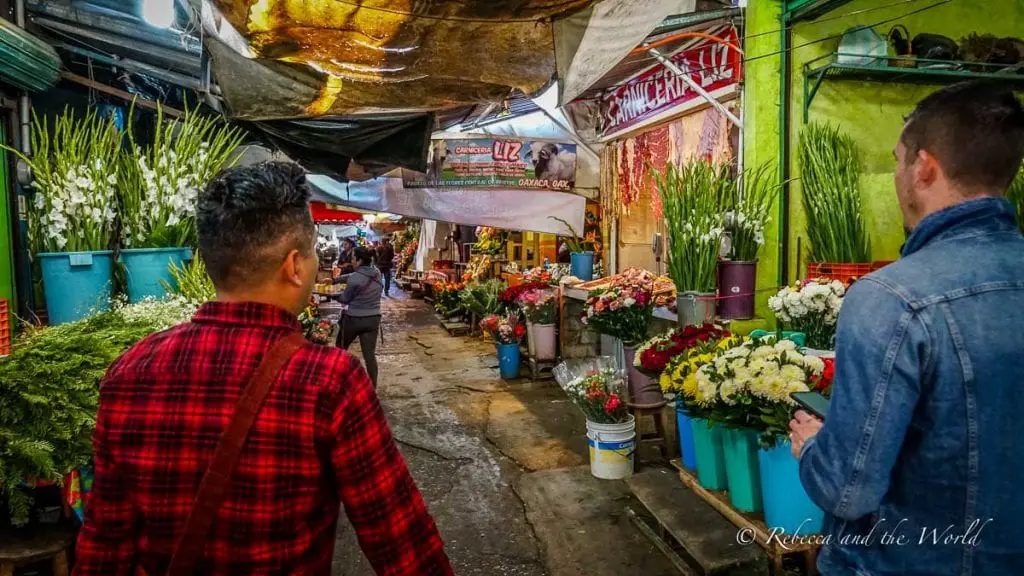
I’m putting together a post on where to eat in Oaxaca, but in the meantime here are some restaurant recommendations.
Where to eat breakfast in Oaxaca
The most important meal of the day! We loved starting the day off at these cafés:
- PAN:AM – order the chilaquiles and a fresh juice, and don’t forget to get a pain au chocolat from the bread basket that the staff bring around. Several locations around Oaxaca
- Itanoni – famed for its focus on corn, everything in this family-run restaurant is made from the grain. The tascalate is delicious (I bought some to take home with me), as are the tamales and tetelas . Go with a group and order one of everything so you can try it all! This was my favourite Oaxaca restaurant. Av Belisario Domínguez 513
- Fonda Florecita – a little further away from the Centro, this stall is inside the Mercado de la Merced. There’s no handwritten menu so ask the staff to speak slowly and tell you what they’re serving up that day. The pan de yema is particularly good.
Casual restaurants in Oaxaca
There are so many great restaurants in Oaxaca for lunch or dinner it can be hard to decide – believe me, I had a lot of FOMO during our time in Oaxaca. Here are a few recommendations to help you narrow down your choices:
- Cabuche – the enmoladas (tortillas rolled up in mole) are mouthwatering. The tostadas change regularly so check the board for the day’s offering. Miguel Hidalgo 1017
- Boulenc – this bakery slash café sells sandwiches on bread baked in-house. If you can, take some of the homemade jams and pickled vegetables home with you. Calle Porfirio Díaz 207
- Coronita – go here for a sampler of 7 moles. D íaz Ordaz 208
Fine dining restaurants in Oaxaca
One of the great things about a Oaxaca vacation is its affordability, so you can eat out at award-winning restaurants for a fraction of the price that you’d pay in other cities. Here are a few that we visited on our trip, all of which celebrate Oaxacan flavours and ingredients. I’d go back to any of these in a heartbeat:
- Criollo – part-owned by Enrique Olvera, the man behind Pujol in Mexico City (currently number 12 of the 50 best restaurants in the world), the multi-course tasting menu will introduce you to quality Oaxacan ingredients and flavours. Make a reservation in advance. Francisco I. Madero 129
- Casa Oaxaca – overlooking the Templo de Santo Domingo, sitting out on the patio on an evening just adds to the delicious food. Reserve a table well ahead. Calle de La Constitución 104A
- El Destilado – owned by three Americans who fell in love with Oaxacan cuisine. Great vibe and service. 5 de Mayo 409
5. Days start slow
There’s really no need to get up early in Oaxaca, as there’s not a whole lot going on in the city before 9 or 10am. Some coffee shops and cafes don’t even open until 8am.
So, unless you’re starting out early on a long day trip, enjoy that sleep-in!
6. Oaxaca is affordable
When I visited Oaxaca, I constantly had to check my currency converter app to make sure I wasn’t miscalculating the price of food, drinks and goods. Depending on your exchange rate, many foreigners will find Oaxaca to be very affordable .
However, I have noticed prices going up as more tourists visit and foreigners move to Oaxaca. I’m doing research for an upcoming return trip to Oaxaca and have seen prices jump.
Vendors in markets are usually willing to negotiate, but just because you can doesn’t mean you should. Pay the price that’s asked and what’s fair, as people are usually just trying to make a living.
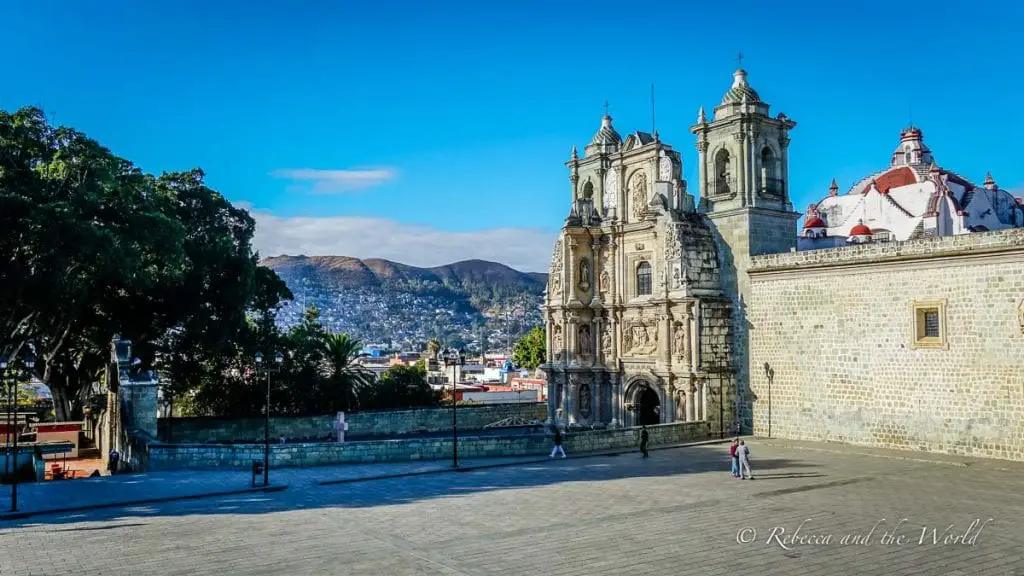
7. Oaxaca is safe – even for solo female travellers
Mexico gets such a bad rap when it comes to safety, and it’s not always warranted. So it’s no surprise that a lot of people thinking about visiting Oaxaca ask an obvious question: is Oaxaca safe to visit ?
The answer: yes, I felt very safe in Oaxaca.
On my first visit to Oaxaca I travelled solo, and my second time was with my husband. Both times I never had any issues and I always felt safe , even when we walked around the city at nighttime (granted, we were only walking in the main touristy neighbourhoods).
Of course there’s crime in Oaxaca like in every part of the world. So, as always, it pays to be aware of your surroundings and follow basic safety measures when travelling to Oaxaca:
- Come armed with some basic Spanish
- Don’t wander around alone at night
- Only bring what you need – leave the valuables in your hotel room
- Don’t flash around your expensive camera and phones
- If something does happen, don’t fight back! Valuables can be replaced, your life cannot
8. Oaxaca is high up!
Oaxaca sits at 1,555 metres (5,102 feet) above sea level, so don’t be surprised to find yourself out of breath every so often (at least, that was my excuse!).
Some people who are prone to altitude sickness do have issues in Oaxaca, but for most people it won’t be an issue.
To avoid Oaxaca altitude sickness, take it easy and don’t go rushing around the city. Drink plenty of water and avoid alcohol.
9. The city is so clean
I found the streets of Oaxaca to be so clean and well-maintained – more so than big cities around the world (here’s looking at you, New York City!). Do your part and keep it clean, too.
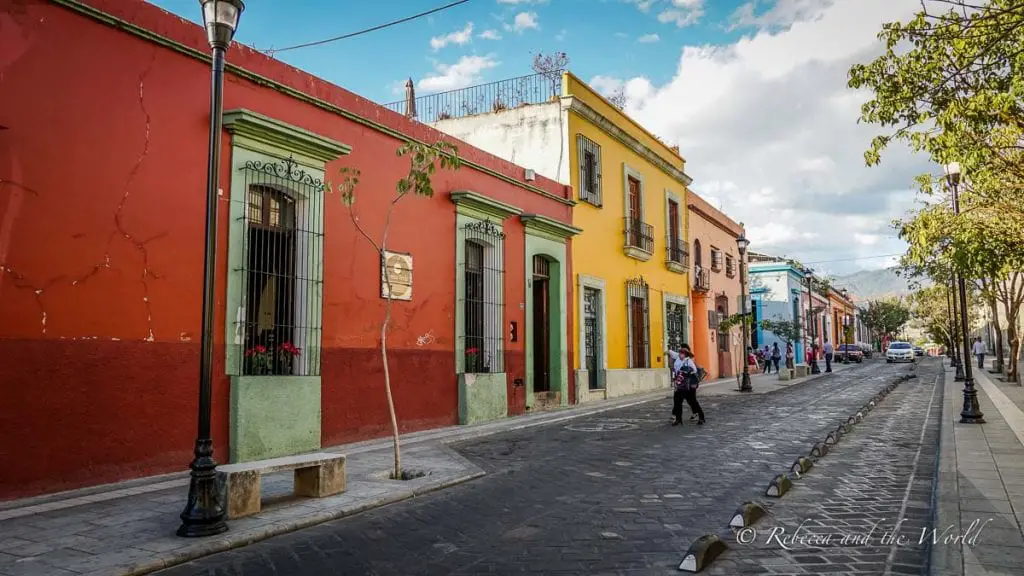
10. Mezcal is the drink of choice
While Mexico may be known for tequila, in Oaxaca, it’s mezcal that’s the drink of choice. This liquor is also made of agave but it’s far more complex, with a smoky flavour (read more in this article about what is mezcal ). Most mezcal is made in Oaxaca state.
Mezcal seems to be the trendy drink of choice of late, and I’ve seen mezcal bars popping up in cities around the world.
If you don’t know much about mezcal, then I recommend starting out at La Mezcaloteca (Reforma 506) for a tasting. We let the staff know what flavours we liked and they customised the tasting to our preferences. You’ll need to make a reservation in advance.
There are also plenty of mezcal tours where you can visit a palenque (mezcal distillery) and learn about the production process. Omar of Oaxacking has tours that visit small-batch, family-owned palenques , as does Las Bugambilias , the tour company we signed up with. We did a full-day tour and visited three different producers on the outskirts of the city.
You’ll find that the cheaper tours are more focused on larger production facilities and are more about the drinking rather than the learning process, so choosing a tour really depends on your budget and what you’re looking to get out of the experience.
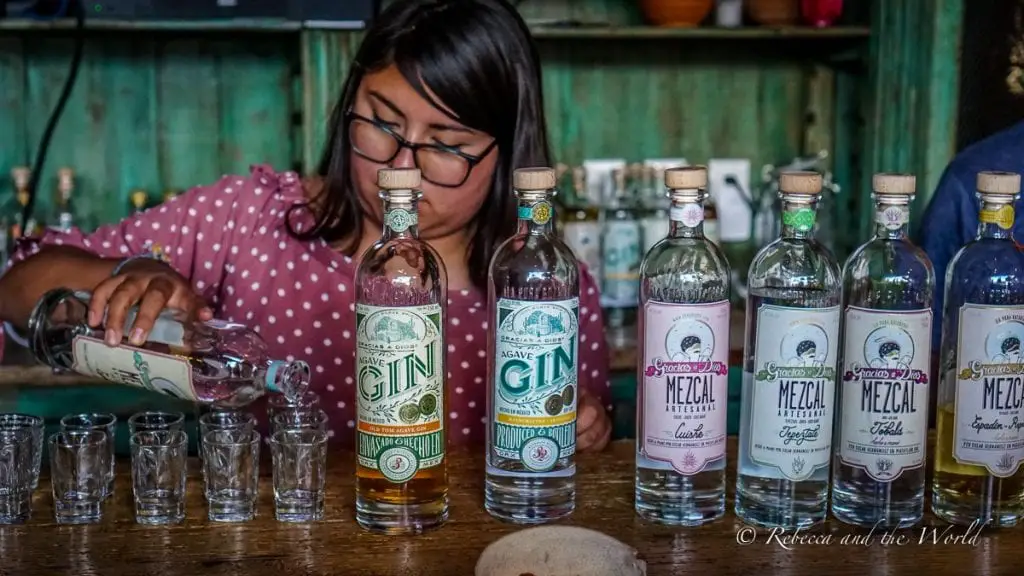
11. Oaxaca is centuries old
Like all of Mexico, Oaxaca’s fascinating and tumultuous history stretches back thousands and thousands of years.
While you’re in Oaxaca, make sure to learn more about this history. A good place to start is the Museo de las Culturas de Oaxaca (Oaxaca Culture Museum). Housed in a former monastery, the corridors are filled with exhibits that trace the beginnings of Oaxaca through to modern times.
Spend half a day at Monte Albán , which dates back to 500BC. This was the most important Zapotec site for more than a thousand years. There’s little signage throughout the site, unfortunately, so see if you can download some information to your phone, find a good guidebook or even hire a guide to show you around . In my opinion, you can’t miss this site on your Oaxaca trip.
Another interesting ruins site nearby Oaxaca is Mitla . Around 45 kilometres from Oaxaca, it’s another easy day trip from Oaxaca.
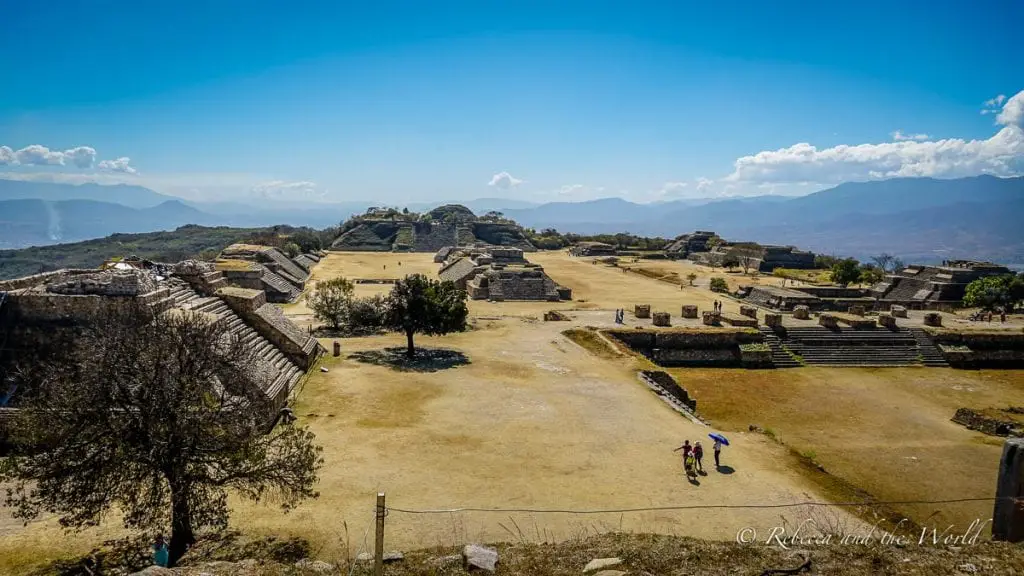
12. Do your research to find the best Oaxaca tours
There are plenty of tours to surrounding areas of Oaxaca, but make sure to do your research as many of them are rushed.
On my first trip to Oaxaca I did a day trip to Hierve el Agua , the incredible petrified waterfalls surrounded by mineral pools that you can swim in. It’s one of the prettiest places to visit in Oaxaca , but when I went, I made the mistake of booking a cheap day trip and was rewarded with some low-quality mezcal tastings and only a short time at the actual waterfalls.
Find tours that are run by Oaxacans and that support local Oaxacan businesses and people. Tours that actually want to teach you about the area, culture and customs rather than rushing you through a tight itinerary. GuateGo has a tour that includes hotel pick-up and drop-off, mezcal tasting, a visit to see stunning weavings, and – of course! – the chance to wander the pools of Hierve el Agua.
13. Oaxacans love to celebrate
Like all Mexican cities and towns, Oaxacan celebrations are wild and a time when the whole community comes together.
Some of the best festivals in Oaxaca to plan your Oaxaca travel plans around are:
- Guelaguetza – people from all across Oaxaca province swarm on Oaxaca City in a huge celebration of Oaxacan culture. There’s dancing, there’s music, there’s food (of course!) all in a huge spectacle over two consecutive Mondays at the end of July.
- Día de los Muertos – despite what you’ve heard, this isn’t Mexican Halloween. During Día de los Muertos (Day of the Dead), people come together to celebrate their deceased loved ones and make offerings. Día de los Muertos is late October/early November each year and the celebration goes over two days.
- Noche de Rábanos – if you have any idea what rábanos means in English then you may be a little confused right now… a celebration of radishes ? Yep, why not! This unusual festival has its origins in colonial times, and today you’ll see hundreds of displays of intricately carved radishes. An interesting one to add to your Mexico bucket list!
A dream of mine is to visit Oaxaca during Día de los Muertos. It’s been on my bucket list for a long time but I’m yet to make it a reality!
14. Pack a spare bag
Even if you’re not a fan of shopping, I dare you not to buy anything in Oaxaca.
I rarely buy souvenirs when I travel, but I just couldn’t help myself in Oaxaca, and ended up stuffing hand-stitched tops, a small rug, pottery, a straw handbag, books, cushion covers, too many bottles of mezcal and powdered hot chocolate into my suitcase.
The markets are a great place to check out for a huge range of items:
- Mercado 20 de Noviembre and Mercado Benito Juárez are in the centre of town. While quite touristy, there’s also a huge variety on offer. Talk to the stallholders to find out which goods are made locally.
- The Mercado de Artesanías , Huizache and La Casa de las Artesanías are three good craft markets to explore. These complexes are good because you can do all your shopping in one place. Most also have information on where goods have come from and even who made it.
Sometimes you don’t even need to step into a shop to make a purchase – there are vendors right on the street waiting to sell you beautifully hand-stitched cushion covers and clothing.
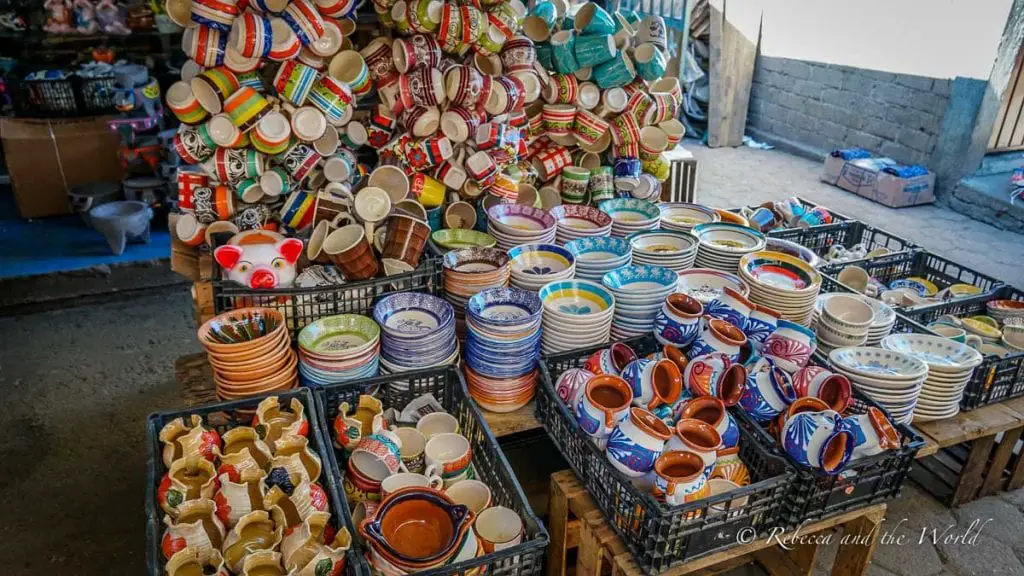
15. The beaches are far away
The only downside to travelling to Oaxaca is that if you’re planning to combine a beach holiday with your city trip, think again. The beaches are quite a drive away.
They look deceptively close on a map, but in reality, because of the winding roads through the mountains, it’s a 3- to 4-hour journey by car or bus.
Having said that, if you’ve got the time, tack on a few days at the beach to your Oaxaca itinerary. I’ve spent quite a bit of time at Puerto Escondido, and you should also consider Huatulco, Puerto Ángel, Zipolite, Bahia de Tembo or Mazunte for some beach time. Check GuateGo for transfer options from Oaxaca to these beach towns.
16. There’s no bad time for travelling to Oaxaca
I don’t think there’s any bad time to visit, but the best time to visit Oaxaca is October to February when the weather is milder. April and May are the hottest months of the year.
The summer months (June to September) bring lots of rain, but it also means lush, green landscapes.
The busiest times of year are around the festivals and celebrations I’ve mentioned above, and the week of Easter. If you do plan a trip around one of these festivals, make sure to book well in advance as Oaxaca hotels do fill up quickly!
17. Travelling to Oaxaca is easy
Depending where you’re coming from, getting to Oaxaca is fairly easy.
Oaxaca has an international airport, Xoxocotlán International Airport (OAX). Direct flights land here from the U.S. and countries in Central and South America.
CHECK FLIGHTS TO OAXACA ONLINE HERE
For most international visitors planning Oaxaca travel, you’ll need to transit through Mexico City first. You could even stop in Mexico City for a few days (check out my guide to Mexico City here ).
From the airport, it’s only a 25-minute drive to downtown. Book a shared taxi (van) at the airport. These drop passengers off at their hotels around the area (which means it can take a little longer than 25 minutes). Alternatively, GuateGo offers private transfers direct to your hotel, which will save you a tonne of time.
There are plenty of buses and domestic flights to Oaxaca from Mexico City and other major cities around Mexico.
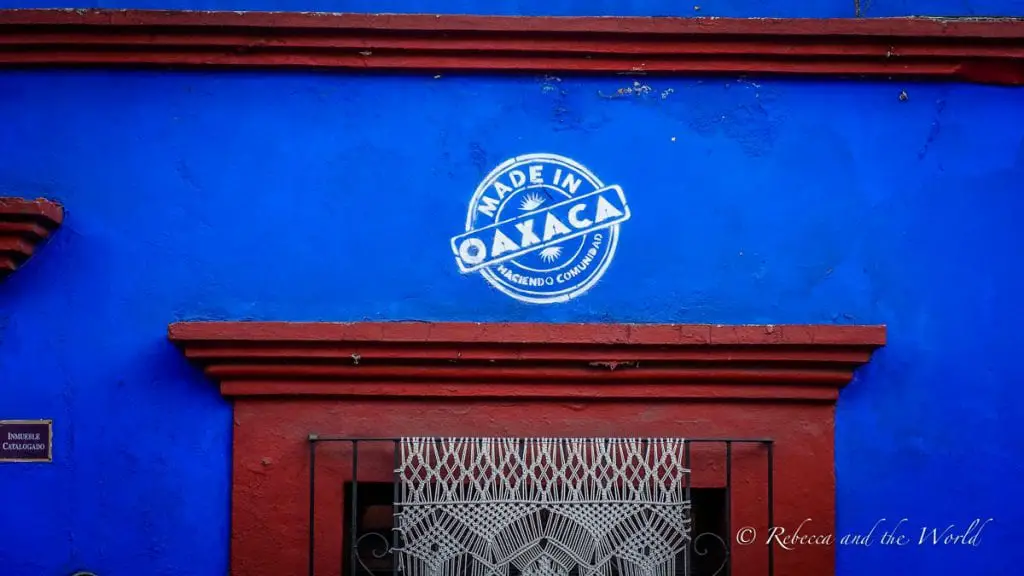
18. Where to stay in Oaxaca
Oaxaca has a booming tourism industry, so there are plenty of hotels in the city. Here are a few recommendations for visiting Oaxaca:
- Hotel Siglo XVII – this is where we stayed when we were last in Oaxaca. It’s in the city centre so it’s close to the main Oaxaca attractions. The staff are friendly and the on-site breakfast is great. Check the latest rates and book your stay with Booking.com or Expedia
- Flavia Hotel – luxury hotel with spa services and an infinity pool overlooking the city. Check rates and availability online with Expedia
- Casa Antonieta – this boutique hotel has only six, minimalist-styled rooms. Each room has a small patio attached and there’s a coffee shop that adjoins the hotel so you can start your day with caffeine. Check the latest rates on Booking.com or Expedia
- Hotel Dainzu – a woman we met on our trip stayed at this delightful budget hotel and said it was one of the best places to stay in Oaxaca. It has a pretty courtyard and decent-sized rooms. It’s also in a great location in the centre of town. Check rates on Booking.com | Read reviews on TripAdvisor
19. Pack travel insurance
Oaxaca is pretty safe, but if I’m travelling internationally, I always arrange travel insurance. Start your search for travel insurance providers on Travel Insurance Master , where you can compare providers and policies.
Wrap up: Oaxaca travel tips
Oaxaca is one of my absolute favourite cities in the entire world. It has a beautiful blend of culture, food and nature and is so easy to visit. Hopefully these Oaxaca travel tips have helped you plan your first – but probably not last! – visit here.
Did you find this article helpful? Consider buying me a coffee as a way to say thanks!
Are you planning on traveling to Oaxaca? Is there anything else you need to know before you visit? Drop your questions in the comments section below.
Related posts
Before you go… you might like these Mexico travel articles.
- 4 Days in Oaxaca Itinerary: 25+ Best Things To Do
- 3 Days in Mexico City: 20 Things to See, Do and Eat
- The Best Things To Do in Cancun, Mexico: An Insider’s Guide
MEXICO TRIP ESSENTIALS
- Book flights to and around Mexico online with Skyscanner . I like this site because it shows me which dates are cheaper.
- Find great hotels across Mexico. Check prices on Booking.com and Expedia online.
- Check out the huge range of day tours throughout Mexico on GetYourGuide or Viator . There’s something for everyone.
- A copy of the Lonely Planet guide to Mexico will be handy.
- One thing I always purchase is travel insurance ! Travel Insurance Master allows you to compare across multiple policy providers, while SafetyWing is great for long-term travellers and digital nomads.
PIN IT FOR LATER:
Save this guide to visiting Oaxaca so you can plan your trip. Simply click on one of the images below to save this post to Pinterest.
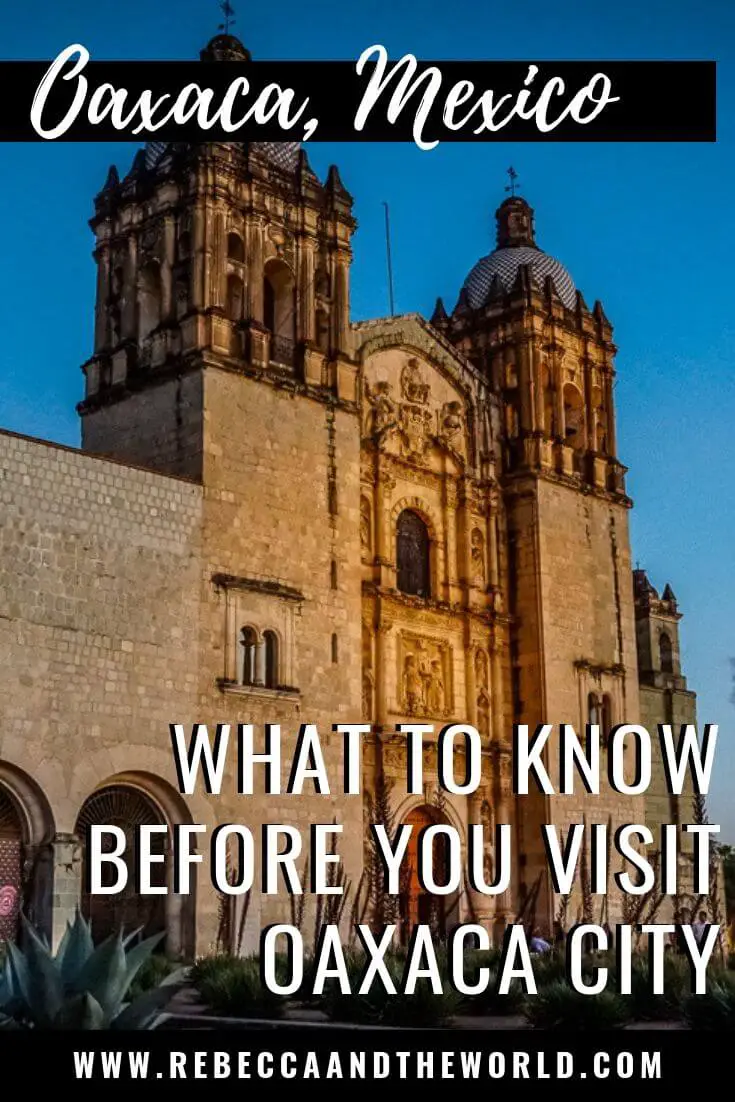
About REBECCA
I'm a travel junkie who started dreaming about seeing the world from a very young age. I've visited more than 40 countries and have a Master of International Sustainable Tourism Management. A former expat, I've lived in Australia, Papua New Guinea, Argentina and the United States. I share travel resources, tips and stories based on my personal experiences, and my goal is to make travel planning just that bit easier.
6 thoughts on “19 Useful Things to Know Before Travelling to Oaxaca, Mexico”
Hi Rebecca,
We are wanting to travel from uk to oaxaca, spend 3/4 days.. but we do wish to travel to the coast line to stay for 4/5 days.. really have no idea how we piece that together, or where on the coast line would be the absolute best ?
Thank you! I am thinking of solo traveling this Oct/Nov. Your blog is super helpful.
Enjoy!! It’s such an amazing city, and I always felt very safe. If you have any more questions, just let me know.
Hi Rebecca! Thank you for this post/blog…I am planning to visit Oaxaca next winter and explore if this could be a destination I could enjoy going back to escape from my Montreal winter each year. I want to go for one month for now and am a woman alone. Any suggestion for long term stay?
Oh Claudette, I’m jealous! I’d love to spend a month in Oaxaca. I don’t have any recommendations for a long-term stay, but I’d start with Airbnb or VRBO and see what properties they have there and how long you can rent for. Having travelled there as a solo female before (my first trip to Oaxaca), I felt very safe. Enjoy!!
I’m from Oaxaca. I’m willing to help if you need any advise. You can find me in IG Leticia.djarquin
Leave a Comment Cancel reply
MORE INFORMATION
ABOUT WORK WITH ME CONTACT PUBLISHED WORK
AFFILIATE DISCLOSURE
AS AN AMAZON ASSOCIATE I EARN FROM QUALIFYING PURCHASES
© 2024 REBECCA AND THE WORLD
Privacy Policy
I ACKNOWLEDGE THE WURUNDJERI AND BOON WURRUNG PEOPLE OF THE KULIN NATION AS THE TRADITIONAL OWNERS OF THE LANDS AND WATERWAYS OF THE AREA I LIVE ON. I PAY MY RESPECTS TO ELDERS PAST AND PRESENT AND CELEBRATE THE STORIES, CULTURE AND TRADITIONS OF ALL ABORIGINAL AND TORRES STRAIT ISLANDER PEOPLE ACROSS AUSTRALIA.

- Privacy Overview
- Strictly Necessary Cookies
This website uses cookies so that we can provide you with the best user experience possible. Cookie information is stored in your browser and performs functions such as recognising you when you return to our website and helping our team to understand which sections of the website you find most interesting and useful.
Strictly Necessary Cookie should be enabled at all times so that we can save your preferences for cookie settings.
If you disable this cookie, we will not be able to save your preferences. This means that every time you visit this website you will need to enable or disable cookies again.
Nomadic Matt's Travel Site
Travel Better, Cheaper, Longer
Oaxaca Travel Guide
Last Updated: November 2, 2023
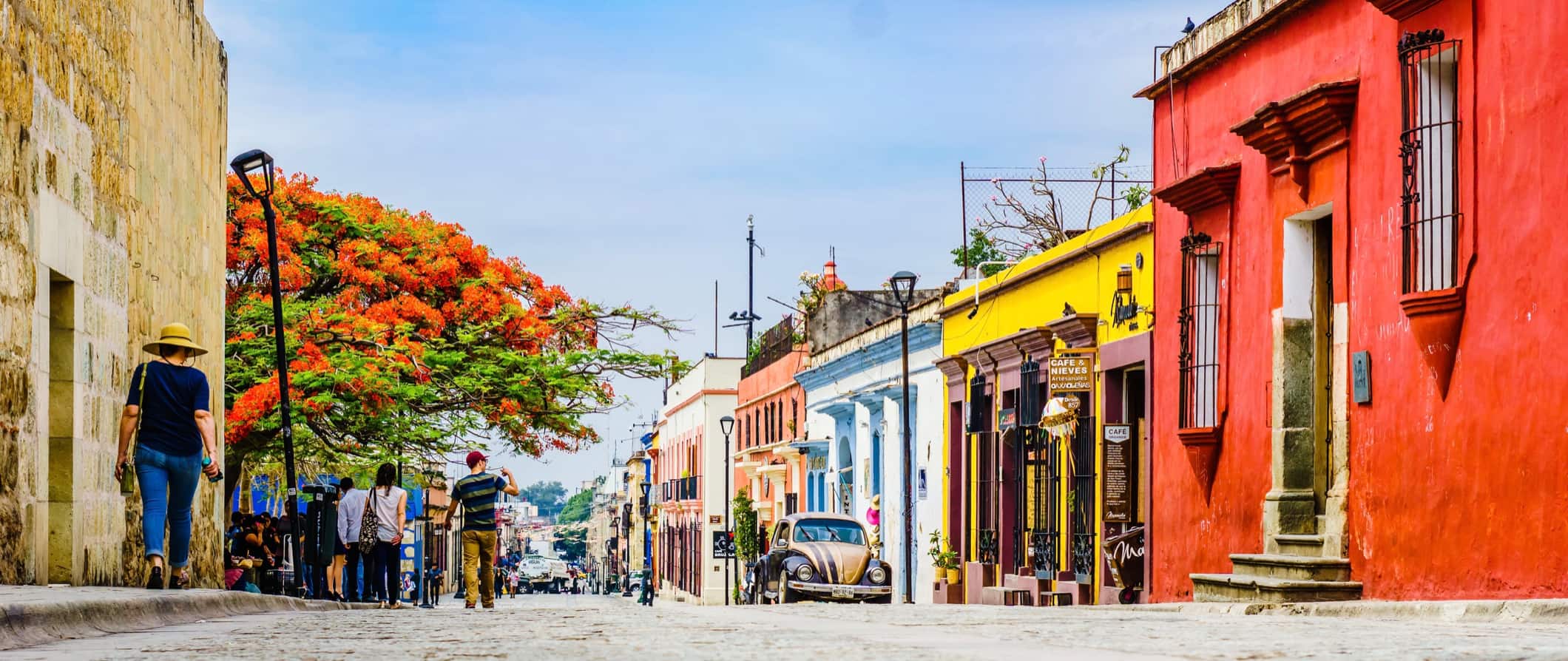
From the moment I arrived, I knew Oaxaca was a special place. The city’s energy and mine just synched. We were a pair. My eyes constantly shifted to every shade of color, every movement, as if I had an insatiable hunger to take in everything.
That love has only grown deeper with each subsequent visit (and there have been many).
Oaxaca is a city of colorful buildings, scenic rooftop restaurants and bars, street art, historic Spanish colonial churches, cobblestone streets, and picturesque parks. It’s also one of the gastronomic centers of Mexico and a hub for making mezcal in the country.
Located in a valley surrounded by craggy mountains in southwestern Mexico , Oaxaca and its surrounds have been inhabited for thousands of years by indigenous Zapotec and Mixtec peoples. Today, Oaxaca is a center for heritage tourism, owing to the many historical attractions (including Monte Albán, a UNESCO Heritage Site; and Mitla, a Zapotec archeological site) in the city and surrounding area.
With mouth-watering food, the best mezcal in the world, and tons of history, it’s no surprise I fell in love with Oaxaca. I’ve never met anyone who didn’t love it. All the hype you hear about it is true.
This travel guide to Oaxaca will help you see all the sites, save money, and fall in love with it too.
Table of Contents
- Things to See and Do
- Typical Costs
- Suggested Budget
- Money-Saving Tips
- Where to Stay
- How to Get Around
- How to Stay Safe
- Best Places to Book Your Trip
- Related Blogs on Oaxaca
Top 5 Things to See and Do in Oaxaca
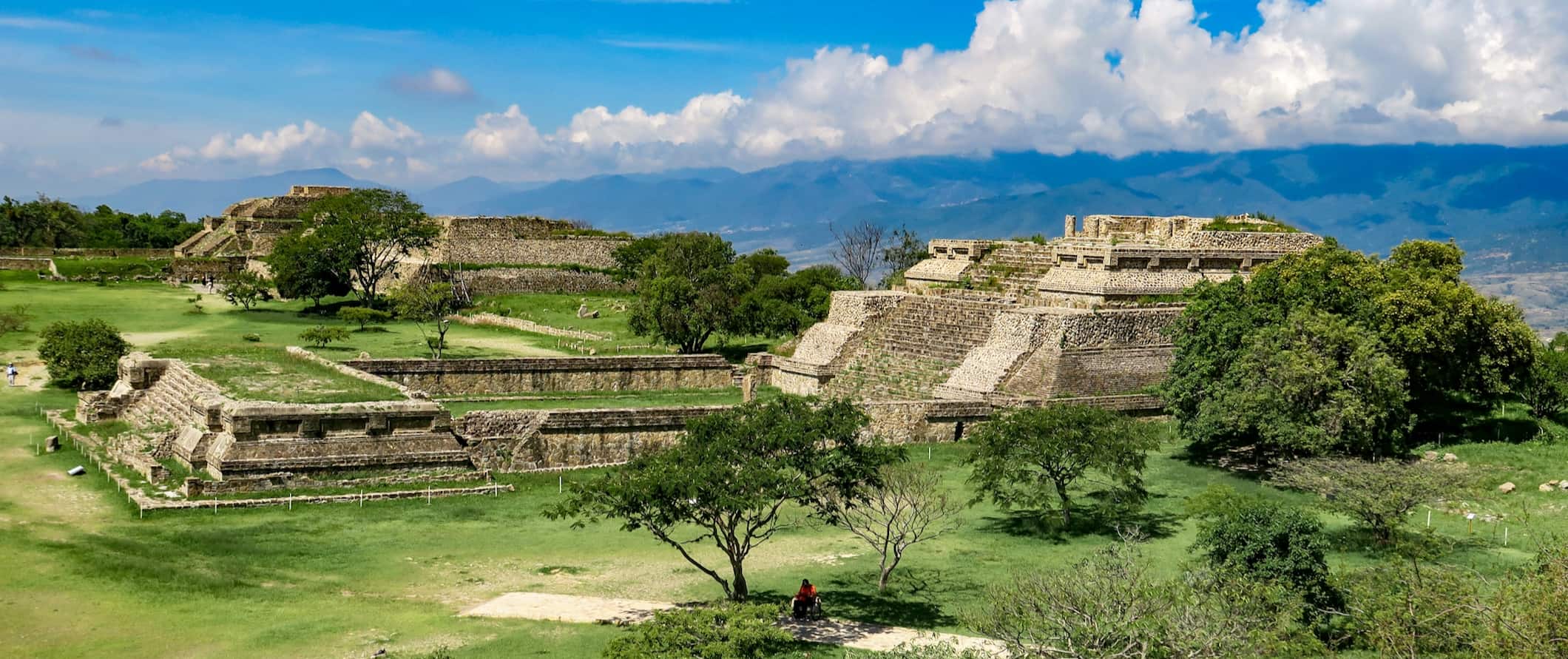
1. Wander the historic downtown
The entire downtown of Oaxaca was designated a UNESCO World Heritage Site in 1987. There are over 1,200 historic buildings here, most of which are hundreds of years old. Historical downtown Oaxaca is the perfect place to explore iconic landmarks like the Zocalo courtyard (the courtyard in front of the National Palace), the Cathedral of Our Lady of the Assumption, and the Santa Domingo Cultural Center. Spend some time wandering to take in their vibrant colors and historic architecture, and stop in for a Mezcal cocktail at any of the lively downtown bars.
2. Explore Mercado 20 de Noviembre
This covered market is home to all kinds of delicious street food as well as fresh, local produce. Construction on the market began in 1862 but wasn’t finalized until 1882, and was later named after the start date of the Mexican Revolution in 1910. It has remained one of Oaxaca’s culinary and cultural hubs for over a hundred years. Be sure to try some of the amazing grilled meats as they are a local favorite! Definitely eat here at least once. It’s open daily from 7am-9pm.
3. See Monte Albán
This pre-Columbian archeological site is located just 15 minutes outside the city. Founded in the 6th century BCE, it’s a UNESCO World Heritage Site full of ancient Zapotec pyramids, terraces, and canals that span several miles. Admission is 70 MXN while full-day tours (that include other stops) are 724 MXN.
4. Explore Mitla
This pre-Columbian UNESCO site was built in 850 CE and was mostly destroyed by the Spanish when they arrived in the mid-16th century. However, some buildings were left intact, which you can get up close and explore (some of which date as far back as 400 CE). Mitla was one of the main religious and spiritual hubs for the indigenous Zapotec and Mixtec people, and was used as a sacred burial site. Admission is 75 MXN while skip-the-line tickets are 160 MXN.
5. Try a street-stall hamberguesa
Other things to see and do in oaxaca, 1. learn about mezcal.
I love mezcal (which is one of the reasons why I love Oaxaca). This is the birthplace of mezcal, a spirit distilled from agave. Unlike tequila, which is also made from agave, when making mezcal, the heart of the plant is cooked in a pit in the ground before it is crushed. Then water is added, and it’s allowed to ferment. Since the plant is cooked, mezcal has a much smokier flavor than tequila.
If you want to learn more about this popular (and delicious) spirit, Rambling Spirits runs the best mezcal tours in Oaxaca. Go with them if you want to learn more. Their guides have incredible knowledge and can take you to places the bigger tours can’t. I learned a ton on this tour and highly recommend it! Most tours leave after lunch so it’s a perfect way to spend the remainder of your day.
2. Take a free walking tour
One of the first things I do when I visit a new city is take a free walking tour. They’re the best way to see the main sights, get introduced to the city and culture, and connect with a local guide who can answer all your questions. Oaxaca Free Walking Tour offers free daily tours that show you the hidden gems of the city and what life is like for the locals who live here. Just make sure to tip your guide at the end!
3. See the Templo de Santo Domingo
This Baroque Roman Catholic church was started in 1572, though it wasn’t completed until 1731. It was originally used as a Dominican church and monastery. During Mexico’s revolutionary war (1910-1920), the church was annexed and used as a barracks and military building. It was transformed into a museum in the 1970s and is now home to all kinds of religious and pre-Columbian artifacts. The interior is incredibly ornate, with intricate carvings on the walls. Admission is free. Be sure to dress respectfully.
4. Wander the Botanical Garden
These gardens span over two acres and are located near the Church of Santo Domingo. The gardens feature different plants from across the state (Oaxaca is one of the most biologically diverse regions in the country). In addition to the flowers, trees, and cacti that dot the garden, there are also sculptures and works of art too. Self-guided tours are not allowed so you’ll need to go with a guide. One-hour tours are offered Monday through Saturday. There is only one English tour available per day, however. Admission (including the tour) is 50 MXN for Spanish tours and 100 MXN for tours in English.
5. Visit Puerto Escondido
Located on the Pacific Coast 6 hours away by car, Puerto Escondido is famous for its stunning beaches and rambunctious nightlife. If you’re looking for a quick weekend getaway from Oaxaca, head here to lounge away the days and party all night. Playa Manzanillo and Puerto Angelito are the best beaches for swimming and lounging while Playa Zicatela is great for surfing. Avoid staying in the middle of Zicatela as it’s boring. If you’re backpacking, stay at the very south where all the hostels are. It’s a lively area.
6. Take a food tour
If you’re a foodie like me, one of the best ways to get a sense of the local food scene is to take a guided food tour. I highly recommend doing one here since Oaxaca is such a center for gastronomy. Oaxaca has some of the most diverse selections of dishes in Mexico. Oaxaca Eats runs several tours, most of which last around 4 hours. You’ll get to sample 20+ dishes. Tour prices vary but expect to spend 2,000 MXN.
7. Wander the Sunday market
Mercado Tlacolula is one of the most popular markets in the region. It’s essentially been in operation for centuries and is a good place to buy local crafts, produce, food, and everything in between. It’s located 45-minutes outside the city so you’ll need to drive there or take the bus, but it’s absolutely worth the journey. There are thousands of people here and tons of amazing food to try. Don’t miss barbacoa (stewed meat) and chicharrón (fried pork rinds).
8. Try a cooking class
If you want to learn how to make some of the amazing dishes you’ve eaten here, take a cooking class . Most classes take you to the market so you can buy fresh ingredients before you start cooking. Classes last around 5 hours and are hands-on and fully immersive. Usually, you’ll make one appetizer, some salsa, a main mole dish (mole is a specific sauce and one of the region’s specialties), and a dessert. Expect to spend around 1,900 MXN for a class.
9. Go hiking in Sierra Norte
Sierra Norte offers visitors over 100 kilometers (62 miles) of hiking trails spanning over 40 different trails. Located just two hours by car from Oaxaca, you’ll also see a handful of Zapotec villages (Pueblos Mancomunados) along the way that offer village-to-village treks and homestays. At Sierra Nore, keep in mind that trails are not well-marked so you’ll need to hire a guide (going solo is possible but not recommended). Guides are incredibly knowledgeable and can point out wildlife (there are pumas, bobcats, armadillos, and more here), identify plants, and ensure you don’t get lost (plus, hiring a guide helps support the local economy). Multi-day tours (which trek from village to village) cost around 3,600 MXN per person for a 3-day tour.
10. Experience a Temazcal
Temazcal (meaning “house of heat”) is a traditional Zapotec sweat lodge. You’ll sit in a small domed hut that becomes increasingly warmer. You’ll rub everything from clay to fresh fruit juices and peels on your skin as you heat up, cooling down by dunking yourself in cold water. It’s a very meditative, spiritual experience with numerous health benefits. Visits usually last an hour and cost around 600 MXN.
11. Celebrate Day of the Dead
The Day of the Dead (Día de Los Muertos) is one of the biggest celebrations/festivals in all of Mexico. It occurs between October 31st and November 2nd and is a time meant for remembering loved ones who have passed. Locals paint their faces, visit cemeteries, and give offerings. There are all kinds of celebrations and parades too. Oaxaca hosts one of the biggest festivals in all of Mexico. It’s one of the best (and busiest) times to visit Oaxaca. Be sure to book your accommodation early as hotels and hostels sell out months in advance. If you want a local guide during the Day of the Dead , expect to pay around 1,250 MXN.
If you’re visiting other cities in Mexico, check out these guides:
- Cancun Travel Guide
- Mexico City Travel Guide
Oaxaca Travel Costs
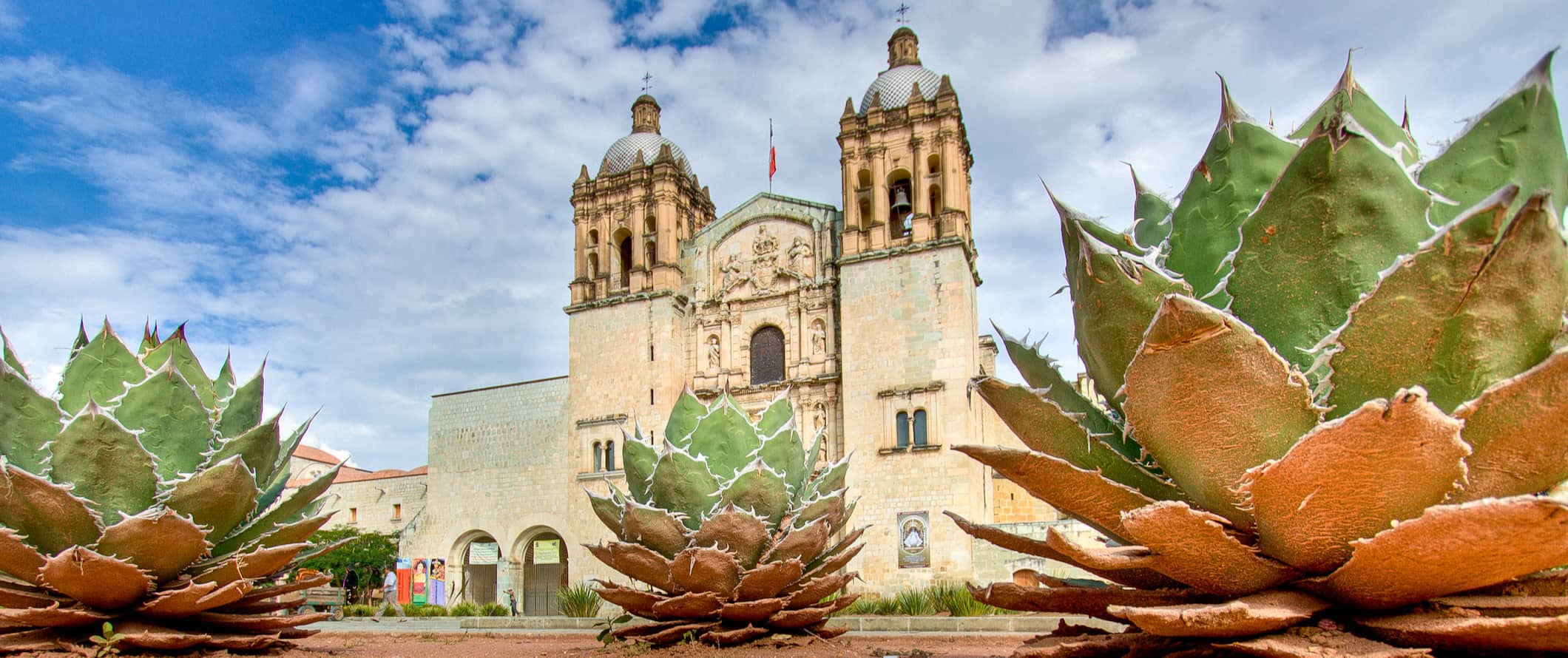
Hostel prices – A bed in dorm costs between 250-450 MXN per night regardless of how big the dorm is. Free Wi-Fi is standard and many hostels also include free breakfast. Most have self-catering facilities too. Private rooms cost 600-1,500 MXN per night.
For those traveling with a tent, a basic plot for two people without electricity can be found outside the city for around 200 MXN per night. The campgrounds are 20 minutes outside the city by car.
Budget hotels – Budget two-star hotels with ensuite bathrooms start at 700 MXN per night. These include basic amenities like TV, AC, and free Wi-Fi.
Airbnb is also available here, with private rooms starting at 200 MXN per night (though they average closer to 950 MXN). Entire homes/apartments cost at least 400 MXN (but average double or even triple that price). Be sure to book early for the best deals.
Food – Oaxaca is a gastronomical hub in Mexico and is known for unique dishes such as tlayudas (a tortilla filled with beans, lettuce, cheese, and your protein of choice, grilled to be crispy on the outside), memelas, and mole (a sauce with lots of ingredients, sometimes including chocolate, and served with rice and tortillas).
Street stalls and markets are your best choice for authentic and inexpensive food. Tacos, quesadillas, sopas, tortas, and other street foods are generally 15-45 MXN. Sometimes, you’ll find tacos for as cheap as 10 MXN. In Oaxaca, street food is the best — and most affordable — option.
Be sure to hit the markets here too. At the Mercado Sanchez Pascua, there is a tamale lady in the back who has some of the most delicious tamales in Oaxaca (try the salsa verde!). She is so popular that she’s often sold out by 10am. In the most famous market, Mercado 20 de Noviembre, there is a section full of BBQ stalls where you can order a plate full of meat and some veggies on the side, cooked right in front of you. Don’t miss out.
Surprisingly, there are not as many taco stands around the city center but if you make your way up to the ADO bus station and look across the street, there is a long line of taco stalls set up. Most of them have the exact same fare — tacos al pastor, for 10 MXN each. At the far end, you will see one with pots full of bubbling stews of meat — tacos casuales — and they go for 15 MXN each.
A meal at a local Mexican restaurant serving traditional cuisine costs around 80-200 MXN. Look for the ones filled with locals as that is generally a sign that the food is really good. For comparison, a combo meal at McDonald’s costs around 110 MXN.
A national beer is around 30 MXN while a latte/cappuccino is 45 MXN. Bottled water is 10 MXN. A glass of mezcal will cost between 80-240 MXN depending on what kind you get.
Tap water is not safe to drink in Mexico. Bring a portable water purifier ( LifeStraw makes a good one) to save money and reduce your reliance on single-use plastic bottles.
If you plan to cook your meals, expect to pay between 500-575 MXN per week for basic staples like rice, beans, veggies, and some meat.
Some of my favorite restaurants are Boulenc, Los Danzantes, La Mezcaloteca, Tlayudas El Negro, Cactus Loncheria, Lechoncito de Oro, Santo Sabor Restaurante, Tastavins, Casa Taviche, Casa Oaxaca el Restaurante, and Praga Coffee Bar.
Backpacking Oaxaca Suggested Budgets
If you’re backpacking Oaxaca, expect to spend 800 MXN per day. This budget gets you a hostel dorm, street food and self-cooked meals, public transportation, and a few cheap attractions, such as a visit to Monte Albán and a free walking tour. If you plan on eating out more or drinking lots of mezcal, add another 60-150 MXN per day.
On a mid-range budget of 1,750 MXN per day, you can stay in a private Airbnb, eat at restaurants serving cheap traditional cuisine for every meal, enjoy a few drinks, take the occasional taxi to get around, and do more paid activities like cooking classes or museum visits.
On a “luxury” budget of 3,400 MXN or more per day, you can stay in a hotel, eat out for all your meals anywhere you want, have plenty of drinks, take taxis everywhere or rent a car, and do some guided food or mezcal tours. This is just the ground floor for luxury though. The sky is the limit!
You can use the chart below to get some idea of how much you need to budget daily, depending on your travel style. Keep in mind these are daily averages — some days you’ll spend more, some days you’ll spend less (you might spend less every day). We just want to give you a general idea of how to make your budget. Prices are in MXN.
Oaxaca Travel Guide: Money-Saving Tips
Like the rest of Mexico, Oaxaca is super affordable. However, with so many tempting eateries and mezcalerias, it’s easy to go overboard and spend too much (that’s what happened to me and my entire group of friends). Lucky, there’s plenty of ways to cut your costs. Here are some tips to help you save money in Oaxaca:
- Shop at the markets for food – Oaxaca’s markets are a great place to eat inexpensively and stock up on food for day trips. Binge on fresh fruit, tacos, and grilled meat — it’s all super cheap!
- Eat street food – Street food is the best food in the city — and the cheapest. Stick to street stalls to save money and enjoy the country’s best eats. Most meals won’t be more than 30 MXN.
- Take a free walking tour – A free walking tour is the best way to see the main sights and connect with a local guide. Oaxaca Free Walking Tour offers daily tours that give you a solid intro to the city. Just be sure to tip your guide at the end!
- Stay with a local – Use Couchsurfing to connect with locals and find free accommodation. If you send your request in advance, you can likely find a host who can share their insider tips and knowledge with you.
- Drink less – Alcohol is cheap in Mexico, but it’s definitely more expensive at bars and clubs. Try to buy your alcohol from a local store instead of drinking at the bar if you’re on a budget.
- Skip the taxis – Oaxaca is easy to explore on foot and the bus goes pretty much everywhere you need it. Skip the taxis!
- Being a water filter – Since the tap water here isn’t safe to drink and single-use plastic is bad for the environment, bring a water filter. LifeStraw makes reusable bottles with a built-in filter so you can ensure your water is always clean and safe.
Where to Stay in Oaxaca
Oaxaca has plenty of affordable hostels. Here are some suggested places to stay if you’re on a budget:
- Hostel Central
- El Cielo Oaxaca
- Iguana Hostel Oaxaca
- Azul Cielo Oaxaca
How to Get Around Oaxaca
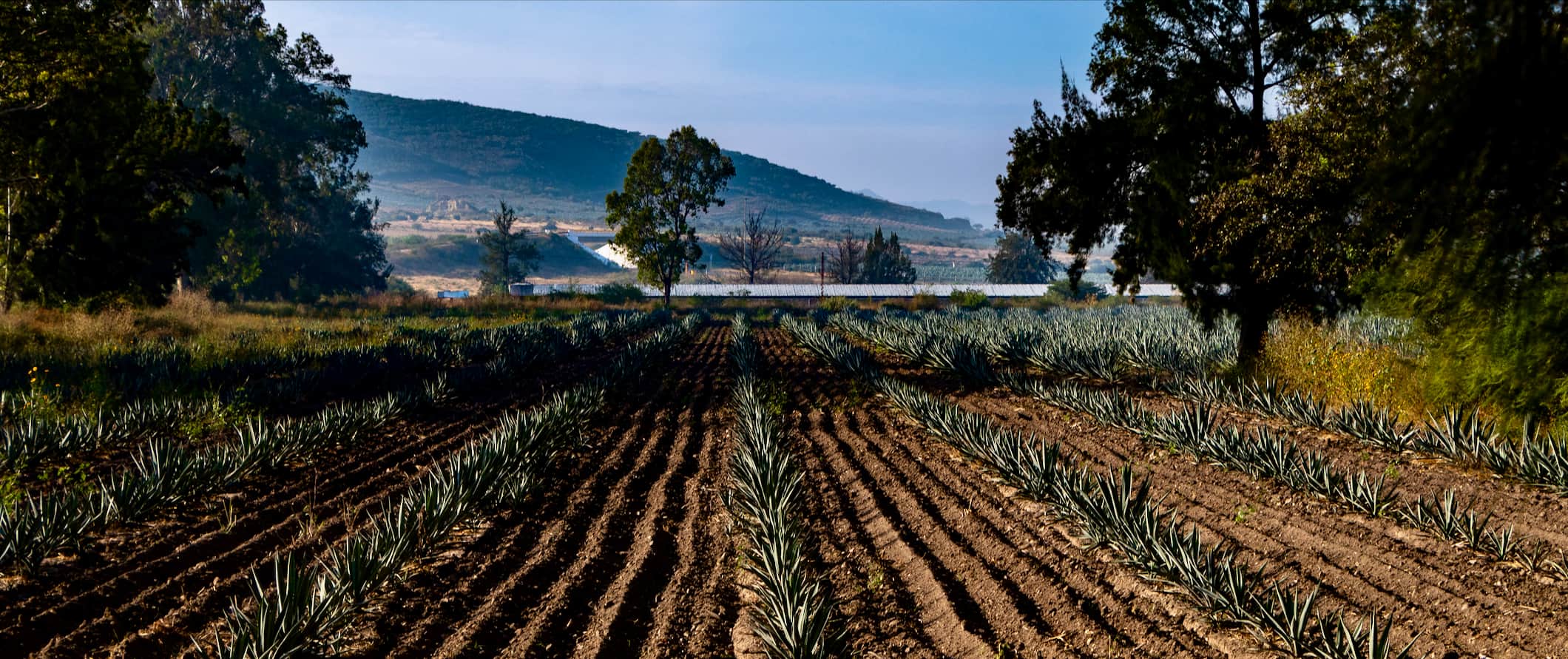
On foot – Oaxaca is super pedestrian-friendly. Unless you’re heading out to the nearby ruins, you can just walk everywhere in the downtown area.
Bus – Collectivos (shared taxis that drive set routes) are available around the city and usually cost around 15 MXN.
Taxi – Taxis start at 55 MXN and go up by region traveled. For example, anywhere in the historic center costs 55 MXN, even if you only travel 1 block or 10. If you want to go to the neighboring region of La Reforma from the historic center, it costs 70 MXN, and so on. A taxi to the airport should be about 150-200 MXN, depending on which region you’re staying in (and what time of day/night it is, with nighttime being a bit higher). While affordable, they add up quickly so skip the taxis if you can.
Though Uber is not in Oaxaca, you can use a similar app called Didi. International credit cards don’t seem to work with the app, so make sure you have close to the right amount of change as the suggested fare cost (taxi drivers don’t usually have a lot of change). Rides with this app exclusively use taxis.
Bicycle – Bike rentals can be found for around 100 MXN for a half-day rental. For a guided mountain bike trip, expect to spend around 1,300 MXN for a half-day excursion.
Car rental – Car rentals cost around 650 MXN per day. Unless you’re going to do some day trips (or multi-day trips) outside the city (such as a trip to Puerto Escondido) then you likely don’t need a car. Renters must be 21 years of age and have had their license for at least two years.
Some companies require renters to be over 25. Deposits on car rentals can also be quite steep, with some companies asking for $1,000 USD as a deposit
When to Go to Oaxaca
Oaxaca’s elevation offers a relatively pleasant climate year-round. The most popular time to visit is December-January when many Canadian and American tourists flock south to avoid the winter. This is when the city is busiest and prices are highest. Daily highs are comfortable and not too hot, hovering around 25°C (77°F).
Expect crowds around the Day of the Dead (late October/early November). If you’re visiting then, be sure to book your accommodation well in advance.
The summer sees more rain, though the weather is still warm and sunny. Expect daily averages around 26°C (79°F).
How to Stay Safe in Oaxaca
Oaxaca is generally one of the safest cities in Mexico. You don’t find the kind of drug or tourist-related violence and thefts you find elsewhere. That being said, it is still always best to practice personal safety and never stop being aware of your surroundings.
Be sure to take a taxi home after a night out just to be safe. Also, don’t carry all your valuables with you everywhere you go (unless it’s to or from the airport). Leave your passport at your accommodation and only take enough money with you for what you feel you need to do.
When possible, it’s always best to walk with a friend or a small group. Avoid wearing flashy jewelry and waving around lots of money or high-end electronics (both during the day and at night). There’s been a rise in late-night petty theft since COVID so it’s better to be safe than sorry, especially if you are coming around major festivals.
Solo female travelers should generally feel safe here, even walking alone. However, the standard precautions always apply (never leave your drink unattended at the bar, never walk home alone intoxicated, etc.). For specific tips, check out one of the many solo female travel blogs about the city.
If you rent a vehicle, never leave any valuables in it overnight.
If an emergency occurs, dial 911. If that doesn’t work (since 911 isn’t available everywhere), dial 066. Overall, dangerous crimes against tourists are very uncommon here. The people who do tend to be involved in incidents are usually doing drugs or taking part in sex tourism. Avoid all of that and you’ll greatly reduce your risks here. I never feel unsafe here and neither do my friends that live here, even the women.
Always trust your gut instinct. Avoid isolated areas at night, and be aware of your surroundings at all times. Make copies of your personal documents, including your passport and ID.
The most important piece of advice I can offer is to purchase good travel insurance. Travel insurance will protect you against illness, injury, theft, and cancellations. It’s comprehensive protection in case anything goes wrong. I never go on a trip without it as I’ve had to use it many times in the past.
Oaxaca Travel Guide: The Best Booking Resources
These are my favorite companies to use when I travel. They consistently have the best deals, offer world-class customer service and great value, and overall, are better than their competitors. They are the companies I use the most and are always the starting point in my search for travel deals.
- Skyscanner – Skyscanner is my favorite flight search engine. They search small websites and budget airlines that larger search sites tend to miss. They are hands down the number one place to start.
- Hostelworld – This is the best hostel accommodation site out there with the largest inventory, best search interface, and widest availability.
- Booking.com – The best all around booking site that constantly provides the cheapest and lowest rates. They have the widest selection of budget accommodation. In all my tests, they’ve always had the cheapest rates out of all the booking websites.
- Get Your Guide – Get Your Guide is a huge online marketplace for tours and excursions. They have tons of tour options available in cities all around the world, including everything from cooking classes, walking tours, street art lessons, and more!
- SafetyWing – Safety Wing offers convenient and affordable plans tailored to digital nomads and long-term travelers. They have cheap monthly plans, great customer service, and an easy-to-use claims process that makes it perfect for those on the road.
- LifeStraw – My go-to company for reusable water bottles with built-in filters so you can ensure your drinking water is always clean and safe.
- Unbound Merino – They make lightweight, durable, easy-to-clean travel clothing.
- Top Travel Credit Cards – Points are the best way to cut down travel expenses. Here’s my favorite point earning credit cards so you can get free travel!
Oaxaca Travel Guide: Related Articles
Want more info? Check out all the articles I’ve written on backpacking/traveling Mexico and continue planning your trip:
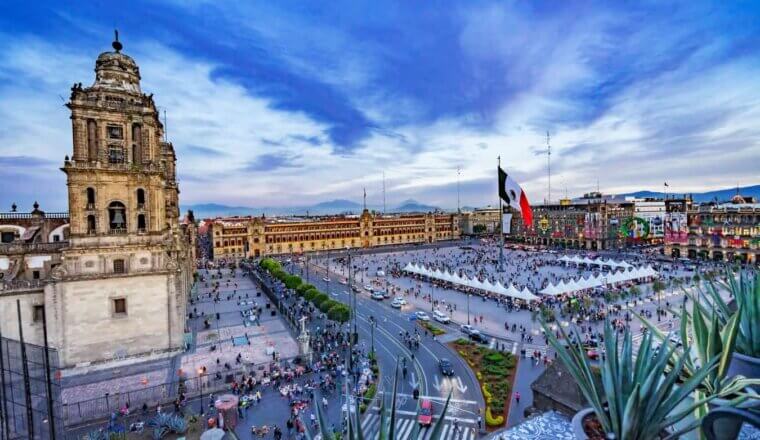
The 20 Best Things to Do in Mexico City
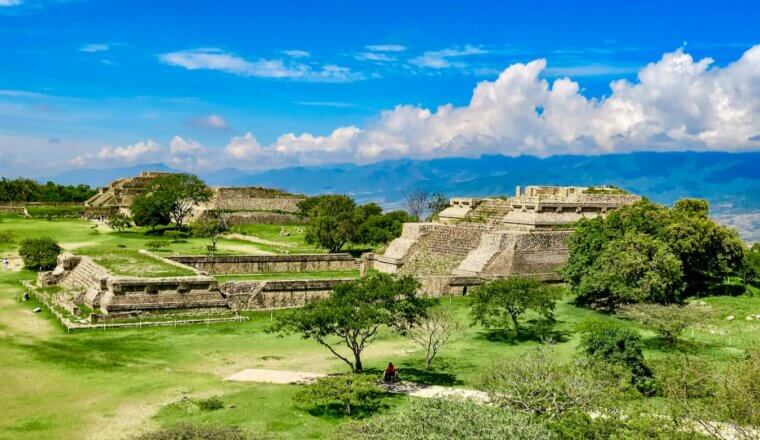
The 5 Best Hotels in Oaxaca

Where to Stay in Oaxaca: The Best Neighborhoods for Your Visit
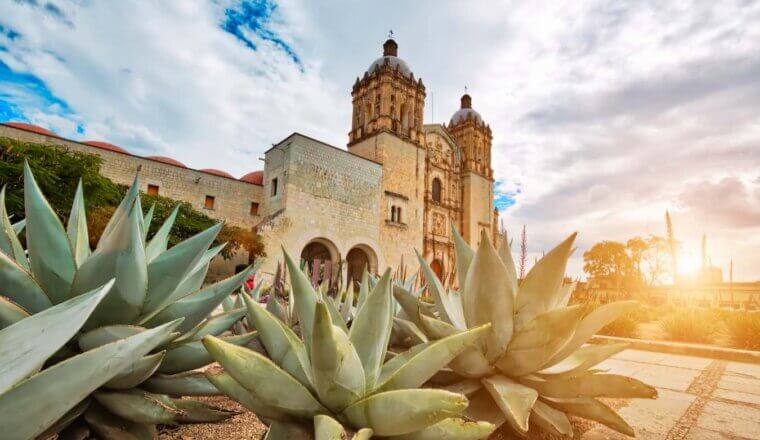
How to Spend 5 Days in Oaxaca
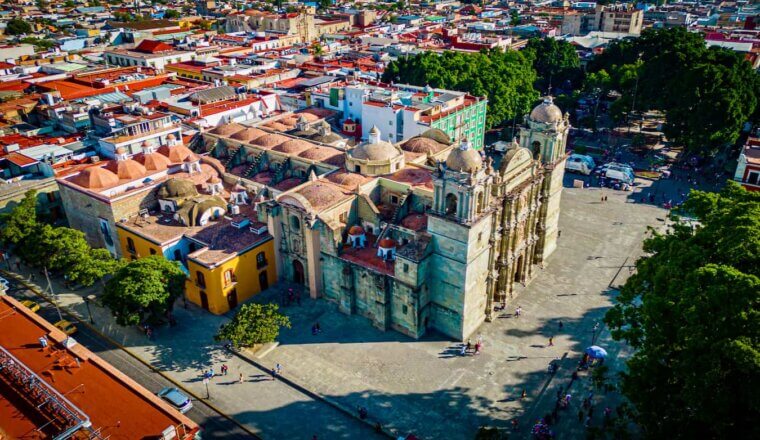
The 15 Best Things to Do in Oaxaca
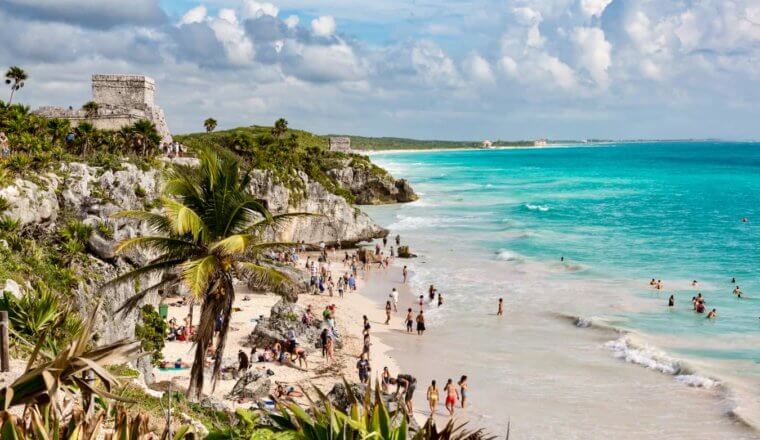
Is Tulum Safe?
Get my best stuff sent straight to you, pin it on pinterest.
- Where To Stay
- Transportation
- Booking Resources
- Related Blogs
- International
- New York/Region
- NYT Front Page
- Crossword/Games
- Dining & Wine
- Fashion & Style
- Home & Garden
- Learning Network
- Multimedia/Photos
- Week in Review
- Editorials/Op-Ed
- Readers' Opinions
- The Public Editor
CLASSIFIEDS
- Real Estate
- All Classifieds
Oaxaca City
There are loads of banks in the Centro Histórico, and most have 24-hour ATMs. Casas de cambio (currency exchange offices) have rates comparable to those at banks; in addition, their lines are shorter and they tend to stay open longer. Most hotels, tourist-oriented restaurants, and shops accept credit cards and traveler's checks; markets and smaller establishments prefer cash. A block from the Zócalo, Banamex is open weekdays 9-4. Banorte has similar hours. Both have reliable ATMs. You can exchange currency at the Casa de Cambio Puebla weekdays 9-6 and Saturday 9-2.
Banamex (Av. Hidalgo 821, 1 block east of the Zócalo, Centro Histórico, Oaxaca City, Oaxaca, Mexico. PHONE: 951/516-5900). Banorte (García Vigil 103, Centro Histórico, Oaxaca City, Oaxaca, Mexico. PHONE: 951/516-4940). Casa de Cambio Puebla (Calle García Vigil 106, Centro Histórico, Oaxaca City, Oaxaca, Mexico. PHONE: 951/514-5103).
The villages of the Valles Centrales often do not have banks, let alone ATMs. Get cash before you leave Oaxaca City. The exception is Ocotlán, which does have an ATM. Also, unless you're planning on buying a lot of goods from one place, try to bring smaller currency. Markets and small shops may not be able to change large bills (200 peso notes or above).
Outside Huatulco and Puerto Escondido, it's imperative to bring cash, as there are no banks. Puerto Escondido has a Banamex on its tourist strip and several more banks up in town near the market. If you need to exchange money, go to Arre-ola del Mar, open daily 8 AM to 9 PM.
Huatulco's most convenient bank is Bital in La Crucecita. Hours are generally weekdays 9-4.
Arre-ola del Mar (Av. Pérez Gazga s/n, at Calle Marina Nacional, Centro, Puerto Escondido, Oaxaca, Mexico. PHONE: 958/582-2800). Banamex (Av. Pérez Gasga 314, Puerto Escondido, Oaxaca, Mexico. PHONE: 954/582-0626). Bital (Calle Bugambilia 1504, La Crucecita, Huatulco, Oaxaca, Mexico. PHONE: 958/587-0884).
Oaxaca City Contacts
General Emergencies ( PHONE: 066). Hospital Reforma (Reforma 613, Centro Histórico, Oaxaca City, Oaxaca, Mexico. PHONE: 951/516-0989, 951/516-6090, or 951/516-6100). Police ( PHONE: 951/516-0400).
In Puerto Escondido, the Tourist Police patrol beaches and help travelers deal with lost passports and robberies; they speak enough English to get by. They have a small storefront near the tourist information booth at the north end of the Adoquín. English-, Spanish-, and French-speaking volunteers at International Friends of Puerto Escondido (IFOPE) help travelers with medical emergencies.
There's free delivery of prescriptions and over-the-counter drugs from 24-hour pharmacy Farmacias de Ahorro in La Crucecita. Conveniently located in Puerto Escondido's tourist zone is Farmacia San Lucas.
IFOPE ( PHONE: 954/582-1672). Police ( PHONE: 958/587-1180 in Bahías de Huatulco; 954/582-0498 in Puerto Escondido). Red Cross ( PHONE: 958/587-1188 in Bahías de Huatulco; 954/582-0550 in Puerto Escondido). Tourist Police ( PHONE: 954/582-3439 in Puerto Escondido).
Puerto Escondido (UMQ, Av. Oaxaca 720, Oaxaca, Mexico. PHONE: 954/582-1288). Hualtuco (CMH, Av. Flamboyan 205, Oaxaca, Mexico. PHONE: 958/587-0104).
Farmacias de Ahorro (Bugambilia 303, at Colorín, La Crucecita, Oaxaca, Mexico. PHONE: 958/587-0330). Farmacia San Lucas (Av. Pérez Gasga 609, next to Altro Mondo Restaurant, El Adoquín, Puerto Escondido, Oaxaca, Mexico. PHONE: 958/587-0330).
There are several Internet cafés downtown. Axis, open weekdays 10-8 and Saturday 10-6, charges about $2 an hour. The centrally located post office, across from the Catedral Metropolitana, is open weekdays 8-7 and Saturday 9-1. A good place to ship packages home is Artesanías Chimalli.
Axis (Calle 5 de Mayo 412, Centro Histórico, Oaxaca City, Oaxaca, Mexico. PHONE: 951/514-8024).
Correos (Alameda de León, Centro Histórico, Oaxaca City, Oaxaca, Mexico. PHONE: 951/516-2661).
Artesanías Chimalli (Calle García Vigil 513-A, Centro Histórico, Oaxaca City, Oaxaca, Mexico. PHONE: 951/514-2101).
In Huatulco, Choco Latté (Calle Gardenia 902, at Calle Tamarindo, La Crucecita, Huatulco, Oaxaca, Mexico. PHONE: 958/587-0165) is the most attractive place for a coffee and some time on the Internet.
In Puerto Escondido, Hotel Olas Altas has 24-hour Internet access for less than $2 per hour. Plaza Huatulco Rent has five computer stations in a fan-cooled environment.
Puerto Escondido's correos, north of the coast highway, is open weekdays 9-3. In Huatulco, send letters and packages through Correo & MexPost, at the entrance to La Crucecita across from the Pemex station, open weekdays 8-3 and Sat. 9-1.
Hotel Olas Altas (Calle del Morro s/n, Zicatela, Puerto Escondido, Oaxaca, Mexico. PHONE: 954/582-2315). Plaza Huatulco Rent (Av. Benito Juárez s/n, at Hotel Plaza Huatulco, Tangolunda, Huatulco, Oaxaca, Mexico. PHONE: 958/581-0371).
Huatulco Correo & MexPost (Blvd. Chahué 100, La Crucecita, Huatulco, Oaxaca, Mexico. PHONE: 958/587-0551). Puerto Escondido Correos (Calle 7 Norte 100, at Calle Oaxaca, Oaxaca, Mexico. PHONE: 954/582-0232).
There are dozens of travel agencies scattered around Oaxaca City, and all offer guided trips to outlying archaeological sites and villages. Always available are half- and full-day tours of the city, half-day excursions to Monte Albán, and full-day journeys to Mitla that usually stop at the tree in Santa María del Tule on the way back. You can also book trips to villages that coincide with market days. Do some research into the various markets and tell the companies which ones you'd like to see. Otherwise, you'll be pressed to go wherever the company happens to be headed the next day. Viajes Turísticos Mitla and Agencia Marqués del Valle are among the most established agencies.
Agencia Marqués del Valle (Portal de Clavería s/n, Centro Histórico, Oaxaca City, Oaxaca, Mexico. PHONE: 951/514-6970 or 951/514-6962). Viajes Turísticos Mitla (Hotel Rivera del Ángel, Calle Mina 518, Centro Histórico, Oaxaca City, Oaxaca, Mexico. PHONE: 951/516-6175, [email protected]).
Tour operators often combine a trip to Playa Mazunte and its sea turtle center with a visit to Laguna de Ventanilla to see resident and migratory species of waterbirds, as well as crocodiles (there's time for swimming, too). The cost of the all-day tour is $15-$20 per person. Alternatively, take a 1½-hour tour of Laguna de Ventanilla directly from boatmen at the lagoon's entrance about five minutes west of the Centro Mexicano de la Tortuga. Arrive any day between 8 AM and 4 PM and you should be able find someone to take you around.
In Puerto Escondido, Canadian ornithologist Michael Malone offers day-long excursions (December-April) into the Laguna Manialtepec. In low season, knowledgeable locals conduct the tours; they're all good, but we especially recommend Luis, Michael's usual assistant. Arrange tours ($35-$40 per person) through Viajes Dimar, the most reliable agency in town.
Viajes Dimar (Av. Pérez Gasga 905, Puerto Escondido, Oaxaca, Mexico. PHONE: 954/582-1551).
Visiting the coffee plantations in the mountains is especially alluring when coastal heat and humidity soar. Tour operators listed in this chapter all offer this excursion; prices average $35-$45 for a full-day tour. Most offer several stops along the Copalito River to bathe in beautiful pools and "shower" under high-pressure waterfalls. At an old-fashioned, rudimentary plantation you'll have a tasty lunch at the large wooden table, farmhand style, and see whatever part of the coffee-producing process is going on that month.
Bahías Plus, which has offices in many major hotels in Huatulco, conducts tours to Puerto Ángel and the surrounding sights ($19) and to coffee plantations ($36) in addition to their signature bay cruises ($18). Paraíso Huatulco offers all-day bay cruises ($16), four-wheeler tours ($35 for one or two), coffee plantation tours ($34), and all-day or overnight tours to Oaxaca City by bus or air ($235), among others. Prices are slightly higher at the Barceló than when booked through the main office in La Crucecita, whose approximate prices are quoted here.
Bahías Plus (Calle Carrizal 704, La Crucecita, Huatulco, Oaxaca, Mexico. PHONE: 958/587-0216 or 958/587-0932). Paraíso Huatulco (Calle Gardenia 508, Hotel Flamboyant, La Crucecita, Huatulco, Oaxaca, Mexico. PHONE: 958/587-0181, www.paraisohuatulco.com, Barceló hotel, Blvd. Benito Juárez, Bahía Tangolunda, PHONE: 958/581-0218).
The State Tourism Office is in a state of flux. No longer located on the Alameda de León, it's in a temporary office on Calle Murguía, around the corner from the Camino Real. They plan to move to an office in the Palacio de Gobierno, so ask for the current location at your hotel.
The office is open daily 8-8. Although the staff is eager to help you out, few speak English. It's a good idea to know exactly what you need before you go inside. Asking for general information on markets may get you a blank stare; asking for directions to Ocotlán will get you a decent map and information on buses.
State Tourism Office (Calle Murguía 204, at Calle 5 de Mayo, Centro Histórico, Oaxaca City, Oaxaca, Mexico. PHONE: 951/514-2155, www.oaxaca.gob.mx/sedetur).
The Puerto Escondido Tourism Office is inconveniently located, unless you happen to be staying around Playa Bacocho. But outgoing tourism pundit Gina Machorro, who staffs the small information booth downtown on Avenida Pérez Gasga, is more helpful anyway. The main office is open weekdays 9-3 and 4-7, Saturday 10-3. The information booth is open weekdays 9:30-2 and 4-6, Saturday 10-1.
The Huatulco Tourism Office is open weekdays 8-5 and Saturday 9-1. Sedetur is open Friday 9-5 and Saturday 9-1. More helpful than the actual tourism office are the hard-working English-speaking people of the Asociación de Hoteles, open weekdays 9-5 and Saturday 9-1.
The Puerto Ángel Tourism Office is on the second floor of a tiny building at the entrance to the pier. The first floor is a clean public restroom. The office, which stocks maps and brochures, is open daily 9-3 and 4-8.
Asociación de Hoteles (Blvd. Benito Juárez s/n, Hotel Crown Pacific, Bahía Tangolunda, Huatulco, Oaxaca, Mexico. PHONE: 958/581-0486; 958/581-0487; 866/416-0555 toll-free in the U.S., www.hoteleshuatulco.com.mx). Huatulco Tourism Office (Blvd. Benito Juárez s/n, Bahía Tangolunda, Huatulco, Oaxaca, Mexico. PHONE: 958/581-0176 or 958/581-0177). Puerto Ángel Tourism Office (Blvd. Virgilio Uribe, at Calle José Vasconcelos, Puerto Ángel, Oaxaca, Mexico. PHONE: No phone). Puerto Escondido Tourism Office (Blvd. Benito Juárez s/n, Fracc. Bacocho, Puerto Escondido, Oaxaca, Mexico. PHONE: 954/582-0175, Av. Pérez Gasga s/n, at Marina Nacional, PHONE: No phone).
Copyright ©2006 by Fodors.com, a unit of Fodors LLC. All rights reserved.
- Copyright 2005
- Privacy Policy
- Corrections
- Work for Us
- Back to Top

How to Spend 4 Days in Oaxaca City, Mexico: The Perfect Oaxaca Itinerary
Thanks for reading! If you enjoy this post, please join my FREE Mexico Travel 101 course for even more Mexico travel insights, and follow me on Facebook , Twitter , and Instagram !
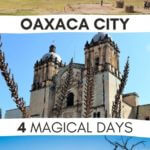
Planning a trip to Oaxaca, Mexico? This Oaxaca itinerary will help you plan the perfect trip to this incredible city.
Editor’s Note: This is a guest post by Shelley of Travel Mexico Solo . Shelley spent 4 months living in Oaxaca and she has tons of valuable tips to share with us!
This post may contain affiliate links. Read my Disclosure & Privacy policies for more detail.
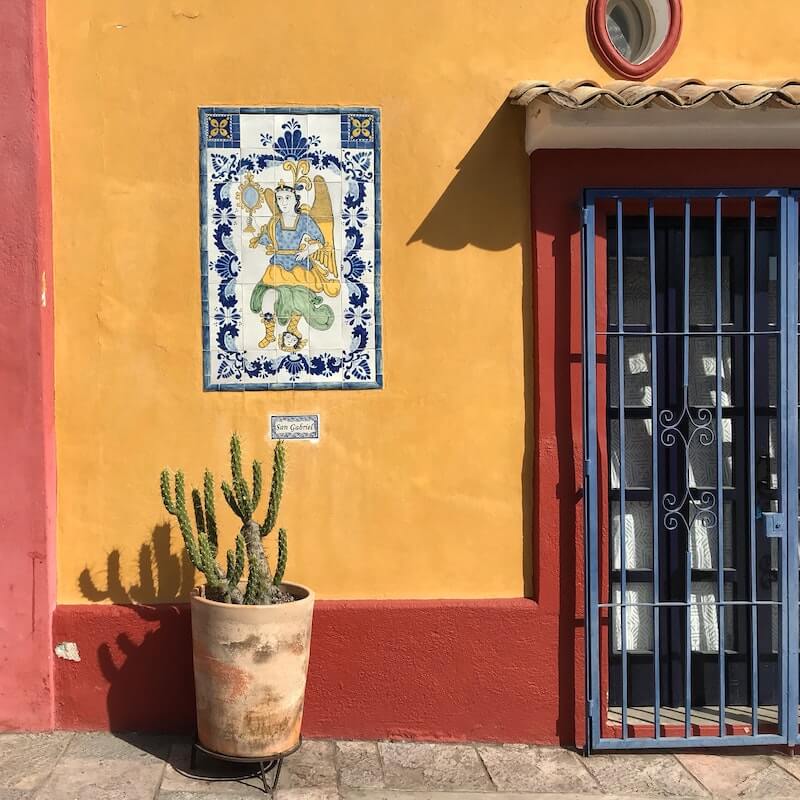
Planning to spend 4 days in Oaxaca City?
You won’t regret it! This really is one of Mexico’s most amazing destinations . It’s also one of the best destinations for solo travel in Mexico!
The city of Oaxaca (officially known as Oaxaca de Juárez) is not only full of gorgeous colonial architecture, but it’s also one of the foodie capitals of Mexico. Plus, it has three UNESCO World Heritage sites, beautiful nature and artist communities, a fantastic Day of the Dead festival, and much more.
Oaxaca City encompasses all the things people imagine Mexico to be! From the amazing Mexican food to colorful architecture, it’s quite obvious why Oaxaca sits high atop so many travel bucket lists.
Let’s take a look at the ultimate four-day itinerary for all of the best things to do in Oaxaca City!
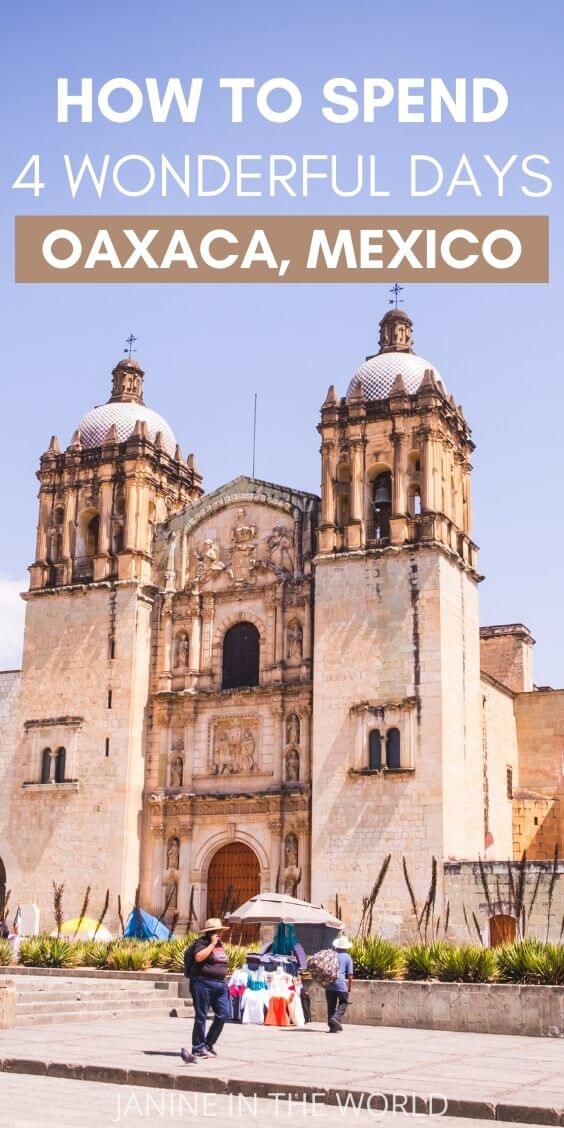
Where is Oaxaca located?
Oaxaca City is located in the middle of the state of Oaxaca, in Southern Mexico. It’s approximately 280 miles southeast of Mexico City and 137 miles north of Puerto Escondido.
How do you get to Oaxaca?
You can fly to Oaxaca by booking a flight to Oaxaca Xoxocotlan International Airport (OAX), which is served by various airlines such as American Airlines, Aeroméxico, and Volaris.
Another popular way to reach Oaxaca is by bus. You can take an ADO bus from Mexico City to Oaxaca in approximately 7 hours. I recommend springing for the GL or Platino service level for the most comfortable ride.
The sites BookAway and Busbud are the best way to plan bus travel to Oaxaca from other cities in Mexico.
Wondering about the safest way to get from the airport to your hotel? Use this service to book affordable airport transfers in Mexico.
What’s the best time to visit Oaxaca?
Oaxaca has a subtropical climate, meaning it is pretty mild all year round. However, the city’s high elevation, approximately 5,000 feet above sea level, means there are wide temperature fluctuations between day and night.
The primary seasons in Oaxaca are dry and wet.
The rainy season lasts from May through October and is also the hottest time of the year. The hottest months of the year are April and May, with average highs of 85-87°F (29-30°C) and average lows of 54-58°F (12-14°C).
The dry season coincides with winter and spring, stretching from November through May. Temperatures are mild, with cool nights and limited precipitation. The coolest months are December and January, with average highs of 78°F (25°C) and average lows of 48°F (9°C).
Thanks to its mild climate, Oaxaca is wonderful to visit at any time of year.
There are two major events each year in Oaxaca that may influence your decision about when to visit:
- Guelaguetza Festival – This arts festival takes place over two weekends in July every year and is a spectacle of music, dance, indigenous culture, and so much more. It’s an incredible spectacle and floods the city with visitors from all over Mexico and beyond.
- Día de Muertos takes place on November 1st and 2nd each year, and Oaxaca City is one of the most popular places for travelers to experience the festivities. The city becomes filled with incredible decorations in the weeks leading up to the holiday, and there are all kinds of cool events and activities to partake in. If you plan to visit Oaxaca during Día de Muertos, you need to book your accommodation a year in advance (no joke!).
Stay connected in Mexico with this affordable eSIM!
How long do you need in Oaxaca?
Oaxaca is the type of city where you’ll never run out of things to do. Even after you see all the top attractions and browse all the markets, you won’t be sick of sampling the delicious food and soaking up the delightful atmosphere.
Four days is the absolute minimum one should spend in Oaxaca to hit the highlights , but you could easily spend a few weeks or more… though, it might be risky– you won’t want to leave!
Traveling soon? Don’t forget to buy travel insurance for Mexico. Insurance gives you peace of mind, knowing you can get the help you need if anything goes wrong. SafetyWing is the provider that I recommend.
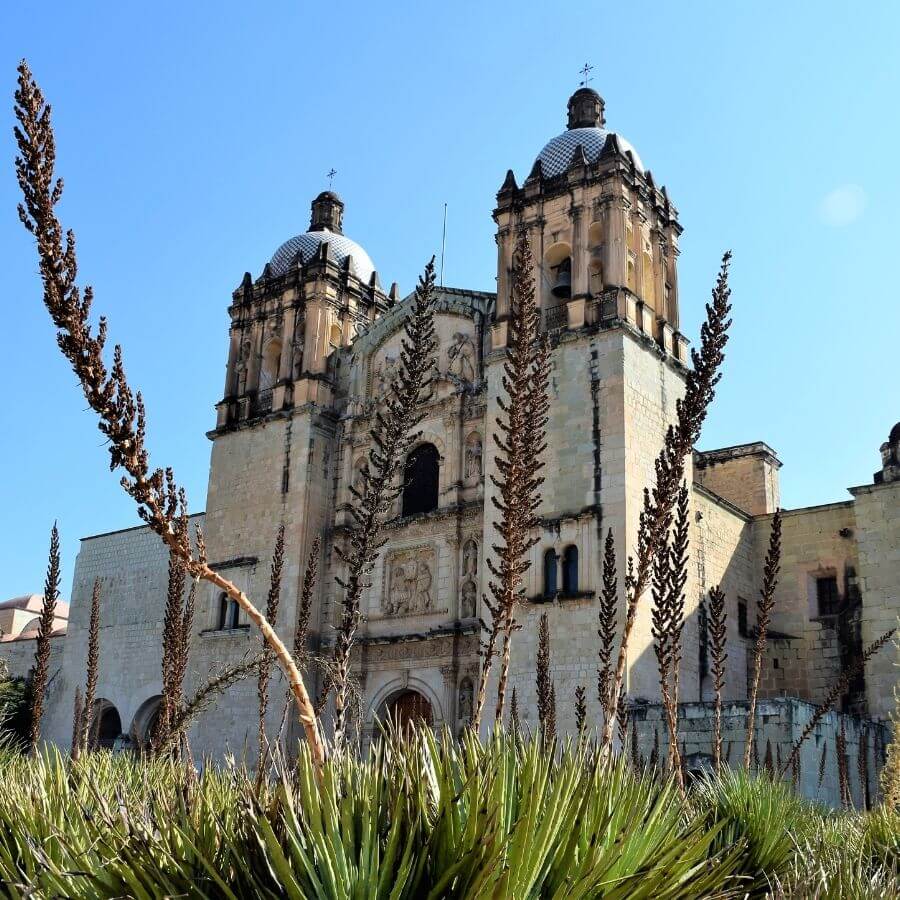
Day 1: Centro Historico: Mercados, Zocalo, Templo de Santo Domingo, Botanical Garden
The first day of this Oaxaca City itinerary is all about getting to know the city itself. The entire downtown is a UNESCO World Heritage Site , and there’s no shortage of attractions to hold your attention.
First, let’s talk about where and what to eat in Oaxaca City
Oaxaca City, like much of Mexico, has a strong street food culture. While strolling around, don’t pass up the opportunity to sample one of Mexico’s delicacies — chapulines. These are small, dried grasshoppers that you’ll be served in a bag. You can eat them just like nuts or popcorn!
If grasshoppers aren’t quite your thing, head to Oaxaca City’s mercados (local markets) to sample some other local cuisine that doesn’t feature insects.
Snack your way through the markets
Mercado 20 de Noviembre functions more like a food hall than a traditional market, but that makes it the perfect to eat. For another Mexican market experience that offers both food and shopping, Mercado Benito Juárez is your place.
While in the mercados , try these Oaxacan specialties: tlayudas (AKA Mexican pizza), tamales oaxaquenos (tamales cooked in a banana leaf), and Oaxaca’s delicious string cheese, quesillo .
Those with a sweet tooth can seek out nieves , an ice cream/sorbet hybrid, and tejate . Tejate is an ancient beverage made with chocolate and corn and served cold. Though this flavor combination may sound unappetizing, this tasty drink is hundreds of years old and has stood the test of time.
Sample Oaxaca’s incredible culinary offerings on this market tour , which highlights some of the city’s most iconic flavors!
Sightseeing in Oaxaca’s centro histórico
After eating, head to the zocalo (main square) in Oaxaca’s historic center to see the Cathedral of Our Lady of the Assumption, the largest cathedral in the city. The entire surrounding area, the Plaza de la Constitución, is a lively place to spend some time and people-watch.
Next, head to the Templo de Santo Domingo de Guzmán, a 16th-century Spanish Baroque church. While on the grounds, don’t miss the Oaxacan Culture Museum and Jardín Etnobotánico de Oaxaca (Oaxaca Botanical Gardens).
This 2.5-acre garden showcases Oaxaca’s native flora and fauna, with hundreds of the state’s native species on display. Note that because of the garden’s delicate ecosystem, you can only enter on a guided tour. They are offered in English three times a week for 100 pesos (about $5 USD) per person.
One of the best places to take a leisurely stroll is the pedestrian-only Calle de Macedonia Alcala. This colorful thoroughfare is lined with shops, art galleries, cafes, bars, restaurants, and more.
Feast on Oaxaca’s famous mole
If you’re getting hungry again, you’re going to find somewhere around here where you can get Oaxaca’s most famous dish, mole . Mole is both a marinade and a sauce, made with its own unique combination of spices, nuts, fruits, and other ingredients.
There are seven types of mole ; the most famous being mole negro (black mole), which gets its color from chocolate. Many restaurants will serve a few types of mole , though usually not all seven.
Head to any of these Oaxaca restaurants to sample their moles : Las Quince Letras, Los Danzantes, and Cabuche. One of the restaurants famous for serving all seven types is La Casa de la Abuela, located in the Zocalo.
Want to learn about the process of making mole? Try a cooking class! This hands-on cooking class will teach you how to make Oaxacan specialties from scratch!
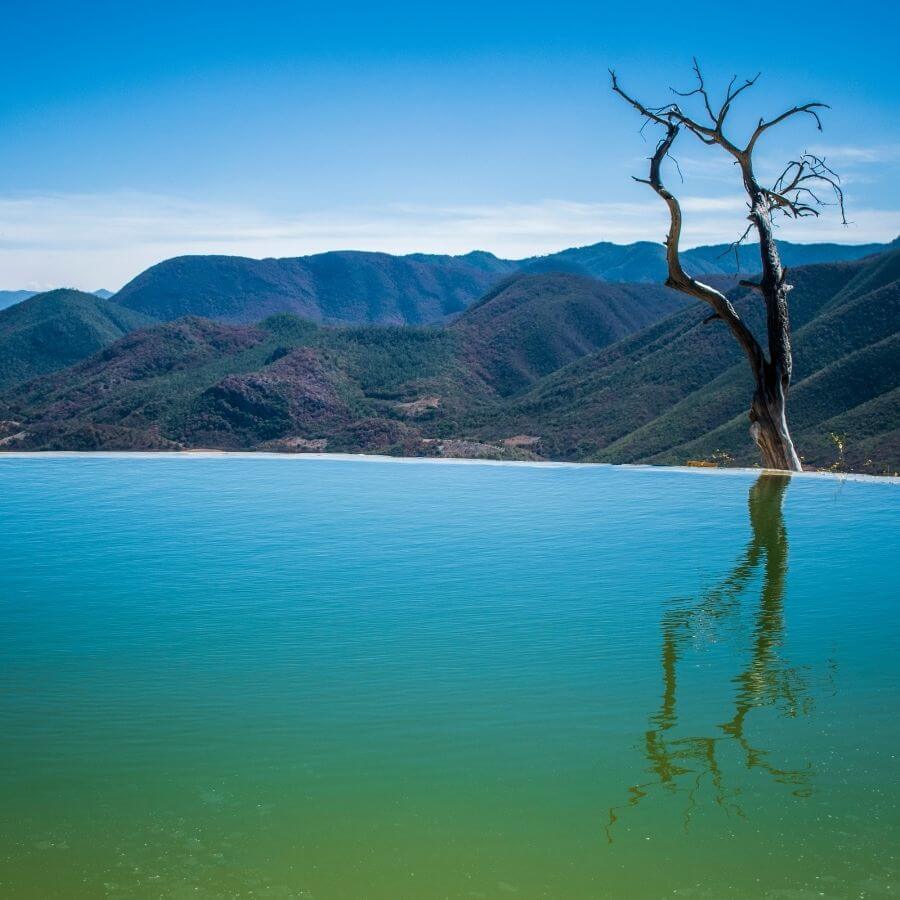
Day 2: Hierve el Agua, Mezcaloteca, Enjoy a Nice Dinner
For today’s excursion, you will take part in one of the most popular day trips from Oaxaca…
Hierve el Agua
Hierve el Agua translates to “boiling water,” and while there’s not actually boiling water at this site, there are thermal pools to soak in.
There’s actually quite a bit to do at Hierve el Agua, one of Oaxaca’s most photographed landmarks, which is why it deserves one whole day of your itinerary! Also, it’s located about an hour outside of the city, so plan for a bit of travel time.
As one of Oaxaca’s most famous attractions, you can imagine Hierve el Agua gets quite crowded. If you want to get any of those coveted people-less photos, head there early. The crowds are in full swing by about 9 am-10 am.
Besides the beautiful mineral pools, Hierve el Agua’s other famous site is its “waterfall.” The quotes around “waterfall” are intentional because this isn’t really a waterfall, though it does look like one.
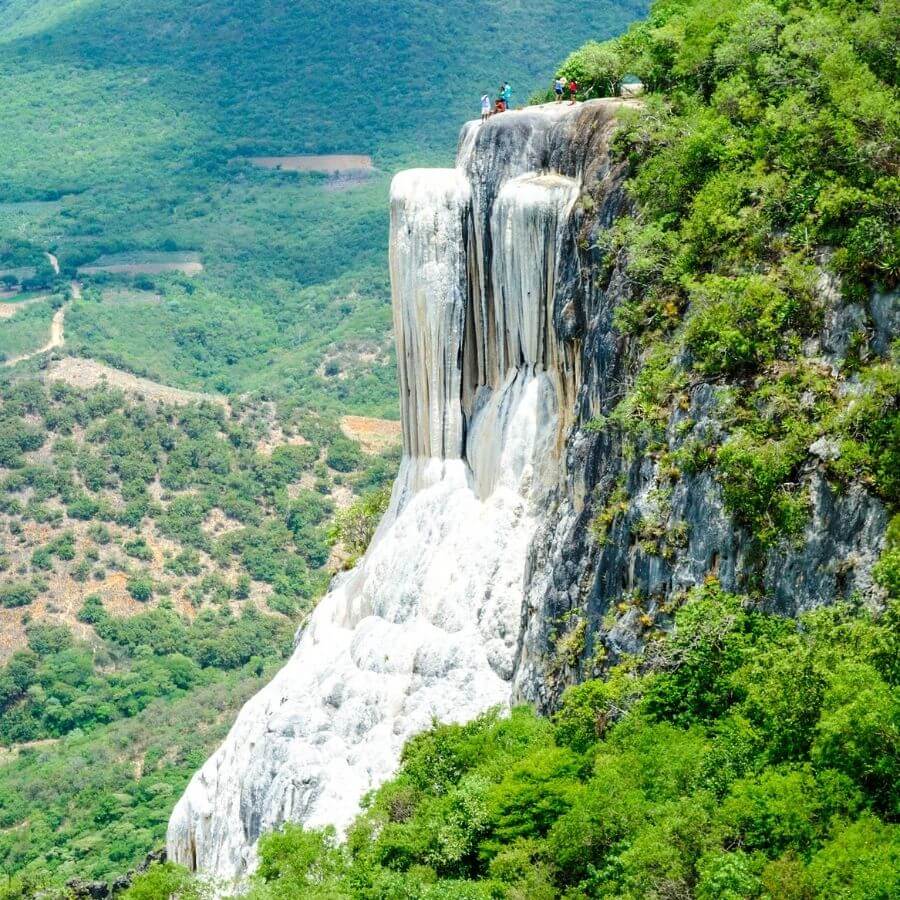
The falling water effect was created over time as mineral-laden water dripped and fell over the side of a cliff. Over time, the minerals in this water began to accumulate, and now it looks like there’s a constantly flowing cascade of water. In reality, it’s just mineral residue!
Be sure to wear your hiking shoes/sneakers, as you’ll want to do the full hike down as close as possible to this cliff. There’s a shorter hike, but it’s worth it to do the full thing. In total, factor in about 3-4 hours for this moderate hike.
After hiking back to the top, where the mineral pools are, you can relax by swimming and soaking in them! If your muscles hurt at all after the hike, the water should help.
Looking for the best things to do in Mexico? This is my favorite platform for booking tours!
In the evening…
After heading back to Oaxaca City and showering, you might want to pamper yourself with a nice dinner or even a night out to sample some mezcal.
For a nice dinner and some fine dining, head to Oaxaca’s famed Casa Oaxaca . If you can, opt for one of the rooftop tables. Some other great restaurant options include El Destilado, Criollo, or Catedral Restaurant.
If you’re looking to learn about — and drink — some artisanal mezcals, consider visiting Mezcaloteca.
This establishment is a combo of a tasting room and mezcal school and provides the perfect place to learn about Oaxaca’s beloved adult beverage, mezcal. Note : Reservations are required .
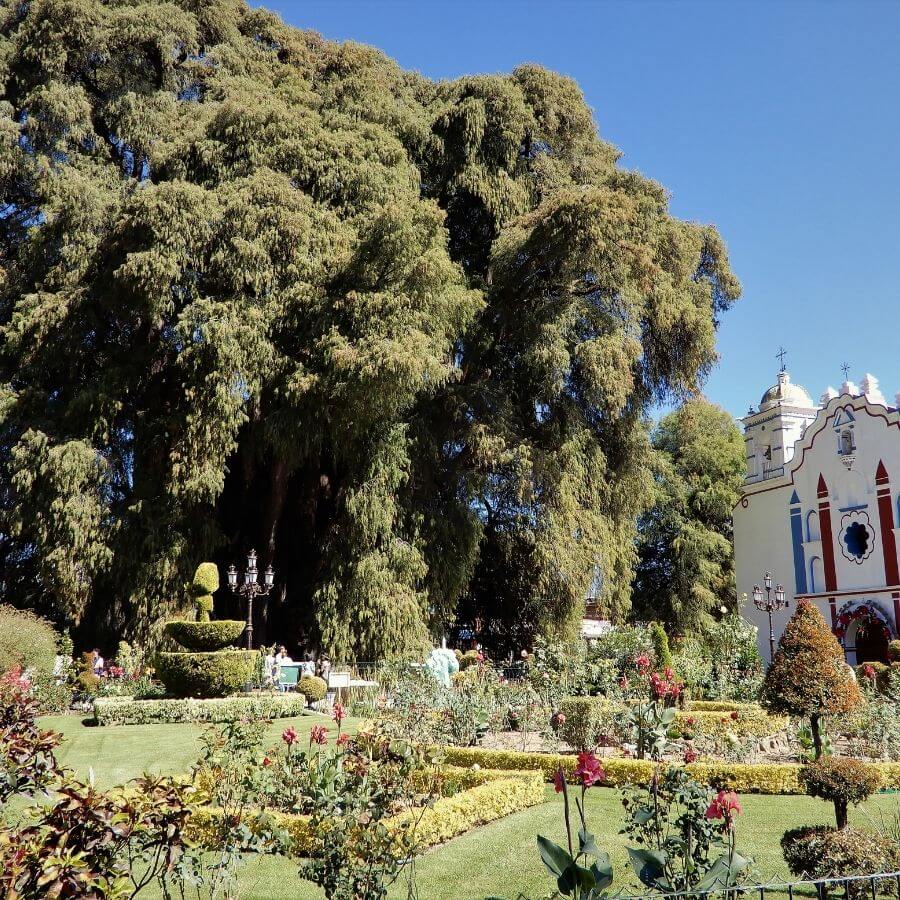
Day 3: Mitla, El Rey de Matatlán, El Árbol de Tule, Teotitlán del Valle
Start Day 3 of your Oaxaca itinerary in the pueblo mágico (magic town) of Mitla.
Just what is a magic town, you might be wondering? Mexico’s Secretary of Tourism awards the prestigious designation of “ pueblo mágico ” to certain small towns in the country with characteristics including exceptional natural beauty, deep historical significance, and unique cultural traditions. It’s a similar idea to the UNESCO World Heritage designation, but pueblos magicos are specific to Mexico!
Mitla, pueblo mágico
Mitla is certainly unique as far as Mexican pre-Hispanic archaeological sites go. Rather than a complex of pyramids and temples, Mitla is a group of shorter buildings with elaborate, intricate carved stone in a series of geometric designs.
In past centuries, Mitla was a holy burial site for the native Zapotec and Mixtec peoples of Oaxaca. The word mitla is derived from the Aztec word mictlán , meaning “underworld” or “place of the dead.”
Mitla is located about an hour south of Oaxaca City, so after spending some time exploring, hit the road back — this time with some stops along the way.
Want to rent a car during your trip? Use this platform to find the best rates!
El Rey de Matatlán
The first stop on the way back to Oaxaca City will take you to El Rey de Matatlán.
At this distillery, you’ll get to see the whole mezcal farm-to-table process! Take the mezcal tour to get a better understanding of everything from the agave harvest to the distillation process. At the end, you’ll get to taste the final product.
From here, head to the small town of Teotitlan del Valle. Many of the towns and villages surrounding Oaxaca City are famous for just one craft per town. Teotitlan del Valle is famous for perhaps Oaxaca’s most famous craft: the tapete , or handweaving Zapotec rug.
Many rug producers allow you to tour their facility to see the whole process, from hand-dying the wool to seeing the weaving process in action by master rug artisans.
Árbol del Tule
Make sure there’s still some sunlight for the final stop in the town of Santa María del Tule to see the Árbol del Tule , the tree of enlightenment. This 2,000-year-old Montezuma cypress tree holds the world’s record of the biggest trunk diameter of any tree on Earth, at an astounding 46 feet.
With a diameter of this size, it takes at least 30 people with clasped hands to wrap all the way around it! The Árbol del Tule is the largest tree in Mexico and the most stout tree on Earth.
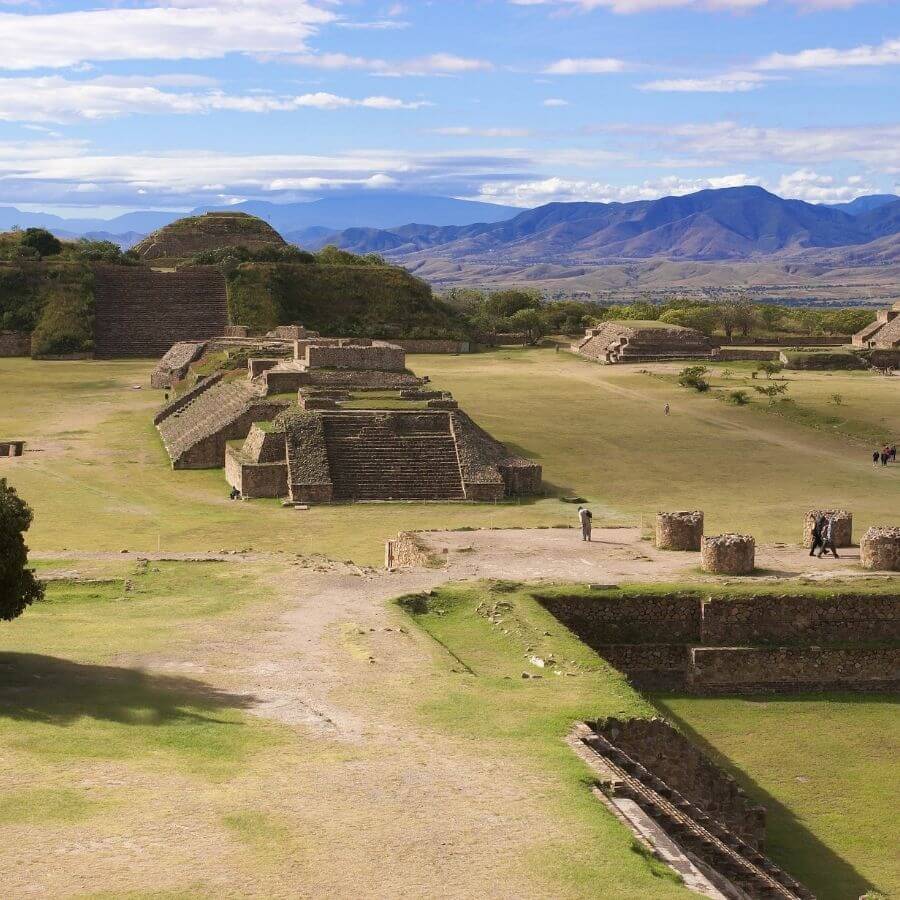
Day 4: Monte Albán, San Bartolo Coyotepec, San Martín Tilcajete
There are three total UNESCO World Heritage Sites in Oaxaca state: the Prehistoric Caves of Yagul, Downtown Oaxaca City, and the archeological site of Monte Albán. Today, you’ll be exploring Monte Albán!
Monte Alban archaeological site
Located only about 30 minutes from downtown, Monte Albán is one of the most visited and most important archeological sites in both Oaxaca AND Mexico. Head there as early as you can to beat the crowds and the heat.
As with many Mexican archaeological sites, most of Monte Alban’s trees have been cleared to make it easier for archeologists to study the site. While this works for them, it also means there’s a serious lack of shade. Be sure to wear sunscreen and a hat , bring a reusable water bottle , and arrive early to beat the crowds and the midday sun.
If you get there early, you can also climb all the structures before the harsh midday sun beats down from overhead.
From the higher points on the Monte Albán grounds, you’ll get some beautiful views of Oaxaca City and the Oaxaca Valley because this site is in the mountains above the city.
After exploring Monte Alban, head to a few more of Oaxaca’s art towns to get some authentic souvenirs to take home with you.
Want to make the most of your Monte Alban visit? Go with a tour group . Learn about the history of the site and those who inhabited it as you look around!
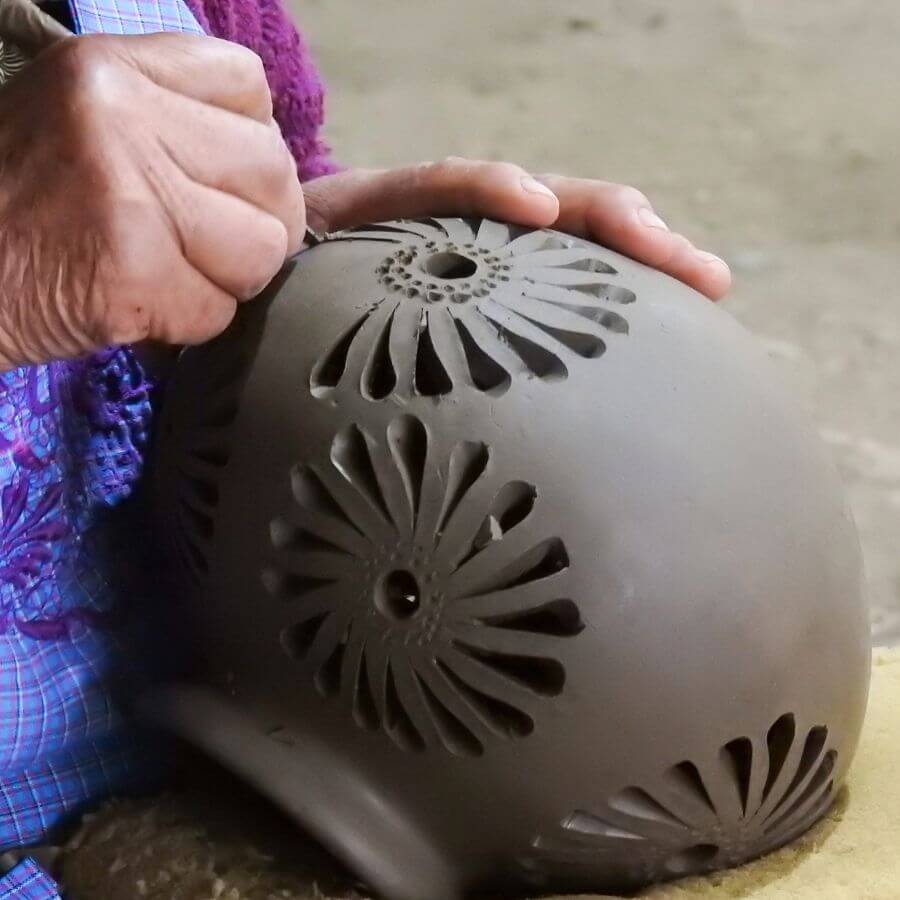
San Bartolo Coyotepec
The first town outside of the site is San Bartolo Coyotepec. This small pueblo is known for its barro negro , or black clay pottery.
In the 1950s, Doña Rosa Real Mateo de Nieto from San Bartolo Coyotepec devised a way to put a black metallic sheen onto the pottery by polishing it before firing. All these years later, her technique is still used and helped put her pueblo on the map.
San Martín Tilcajete
The last art town is the fantastical land of Oaxaca’s alebrijes , San Martín Tilcajete.
What is an alebrije ?
They are wood carvings of colorful, fantastical creatures, and one of the most famous forms of Mexican folk art. Alebrijes are often combinations of two or more animals that, when combined, serve as a type of spirit guide.

Alebrijes are also commonly associated with Mexico’s Dia de Muertos (Day of the Dead) holiday celebration. In fact, do you remember the 2017 Pixar movie Coco ? There were several alebrijes in that movie, guiding Coco through the underworld during Day of the Dead.
First created by Mexican artist Pedro Linares who names these creatures alebrijes , his artistic legacy lives on in San Martín Tilcajete to this day. Head to some of the stores in this pueblo to get your own, and often see local artisans making them!
Ready to book your flights to Mexico? Use this tool to find the cheapest airfare!
Where to Stay in Oaxaca
For your convenience, I recommend staying in Oaxaca’s Centro Historico. From here, you’ll be able to walk to many of the city’s main attractions, have access to tons of awesome restaurants, and transportation will be easy to coordinate. Here are a few hotels that caught my eye:
- NaNa Vida Hotel : This gorgeous hotel offers spacious rooms, beautifully appointed with regional art and tapestries. There is a bar, restaurant, business center, and peaceful garden on-site.
- Co404 Coliving : Whether you’re a nomad or simply a solo traveler in search of community, this co-living space offers comfortable accommodation and a strong community feel. They have a great co-working space, so it’s easy to get work done if you need to.
- AYOOK : Located within an 11-minute walk of downtown Oaxaca, this hotel offers beautiful, air-conditioned rooms and complimentary breakfast. There is also a garden and a terrace for guests to enjoy.
- La Betulia Bed and Breakfast : This beautiful bed and breakfast offers a spacious garden and a furnished patio so guests can enjoy the outdoor space. The rooms are simple, but they have everything you need: a bed, nightstand, wardrobe, and a private bathroom. Breakfast is included. Reviewers rave about the kind staff and how safe they felt at this property.
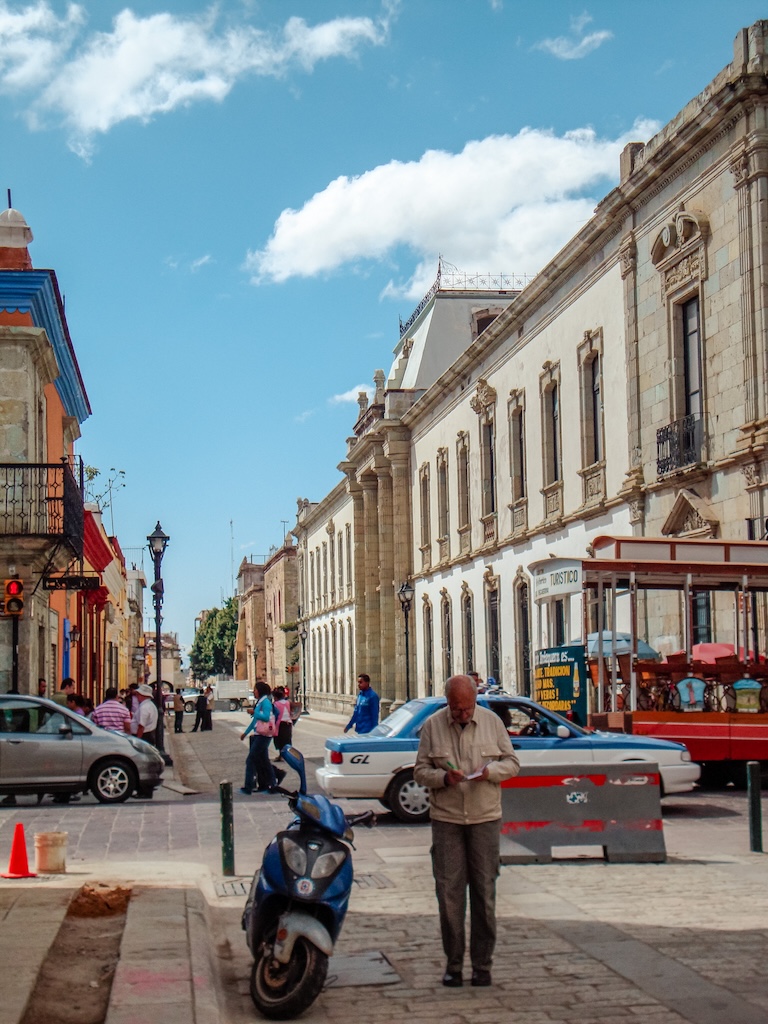
Oaxaca Travel FAQs
Is oaxaca worth visiting.
Yes, absolutely! Oaxaca is one of Mexico’s most alluring destinations. Between its food scene, colorful and lively streets, beautiful natural landscape, and rich indigenous culture
Four or five days is the absolute minimum one should spend in Oaxaca to hit the highlights, but you could easily spend much longer. A week is not too long in Oaxaca.
Do I need to rent a car in Oaxaca?
You don’t need a rental car to get around in Oaxaca. Between tours, public transportation, and taxis, you’ll have no problem seeing all the highlights without renting a vehicle.
However, if you’re traveling in a group, renting a car may be more economical and convenient. It’s also a great way to reach off-the-beaten-path destinations and maintain control of your schedule.
Is Oaxaca safe?
Oaxaca is generally safe for solo travelers, though I have heard of instances of petty theft and armed robberies from members of my Facebook group .
I don’t include that to alarm you but rather to acknowledge that, like anywhere in the world, it’s important to use common sense and be safety-conscious when you’re out and about in Oaxaca.
Follow these general Mexico safety tips anywhere you go.
Should I spend more time in Oaxaca or Mexico City?
Ultimately, it depends on your interests. Oaxaca has a ton of fun things to do, and the ambiance is magical, too.
But there’s absolutely no way you could run out of things to do in Mexico City … ever…
If you prefer big city energy and a faster pace of life, maybe prioritize Mexico City, but if you love a slower pace and Oaxaca’s old-world charm, extend your Oaxaca itinerary.
Is Oaxaca a walkable city?
Absolutely ! The terrain is quite flat, and the city is more pedestrian-friendly than many other places in Mexico. If you choose a central accommodation, you’ll be able to walk to the main sights within the city center.
Can I wear shorts in Oaxaca?
Yes ! You can wear shorts anywhere you want in Mexico.
You may notice locals wearing mostly pants, but that’s because they are more accustomed to the climate, and they have to go to work and likely aren’t permitted to wear shorts at their place of work.
But that doesn’t mean you shouldn’t wear them. Oaxaca has a mild climate with warm days and cool evenings, so wear whatever you’ll be most comfortable in.
Mexico Travel Planning Resources
🌡️ Do I need travel insurance?
Yes! Healthcare in Mexico is affordable for minor ailments, but travel insurance will give you peace of mind if an emergency arises. Plus, you can add coverage for trip interruption, theft, etc. Get a quote from SafetyWing .
🏨 What’s the best way to find accommodation in Mexico?
I use a mix of Booking, Airbnb, and Hostelworld.
Booking.com is awesome for booking hotels and resorts, Hostelworld is great for hostels, and Airbnb specializes in apartment rentals, making it a great place to find long-term stays.
💸 How should I exchange money in Mexico?
Use local ATMS to withdraw cash. US travelers should open a Charles Schwab bank account because they’ll refund ATM fees at the end of the month.
Travelers from outside the US should open a Wise account to secure the best currency exchange rates.
📱 Where can I buy a local SIM card in Mexico?
Pick up a Telcel SIM card at any convenience store. Or, buy an Airalo eSIM online so you’re connected as soon as you land.
🗣️ Do I need to speak Spanish in Mexico?
No, but it definitely helps you feel more confident and connected.
RocketSpanish is my favorite program for learning the foundations of the language. If you’re more focused on improving your conversation skills, hire a tutor through iTalki to prep for your trip.
✈️ What’s the best way to find affordable flights?
I use Skyscanner because it makes it easy to compare rates across different travel days.
🚖 How do I find a safe airport transfer?
I recommend GetTransfer for airport transfers anywhere in Mexico.
🚗 What’s the best way to find rental cars in Mexico?
I recommend Discover Cars because they aggregate prices across rental car companies, making it easy to find competitive rates.
🚐 How do I book bus tickets online in Mexico?
Plan your routes with Rome2Rio , and book your tickets with Busbud — the site is in English and takes foreign credit cards. (Read more here)
🤿 How do I find cool activities and tours in Mexico?
I recommend Viator and Get Your Guide . Viator usually has more options, but it’s worth comparing offerings across both platforms.
🇲🇽 How can I experience Mexico like a local?
Solo female travelers can hire a local female guide through Greether . Greeters will tailor tours based on your interests— it’s basically like experiencing a destination with a local bestie!
🧳 What’s the best luggage for Mexico?
Unless you’re staying at a resort, a travel pack is recommended. I’ve used this one from Osprey for the last 8+ years.
👯♀️ How do I connect with fellow travelers in Mexico?
Join my Female Travelers in Mexico Facebook group , a supportive community of fellow Mexico travel enthusiasts, where you can find answers to all your travel questions!
Will you use this Oaxaca City itinerary to plan your trip? Which of the activities listed here has piqued your interest?
Shelley is a former Miami travel magazine editor who ditched the office for the world! After traveling solo to 14 states in Mexico, she decided to live in Mérida. Shelley created the Travel Mexico Solo blog and Dream To Destination podcast to help women cross Solo Travel & Mexico Travel off their bucket list. Continue the conversation with her on Facebook or Instagram !
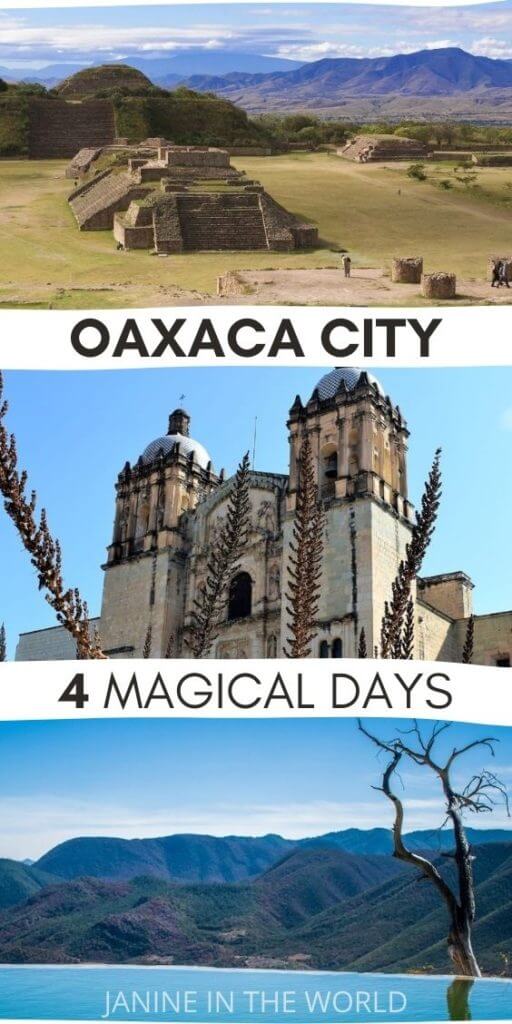
Janine is a full-time content writer and travel blogger. In 2017 she and her cat moved from Los Angeles to Mexico and never looked back. Now, she writes in-depth articles to help women travel Mexico safely and confidently. Connect with her on Instagram.
Similar Posts
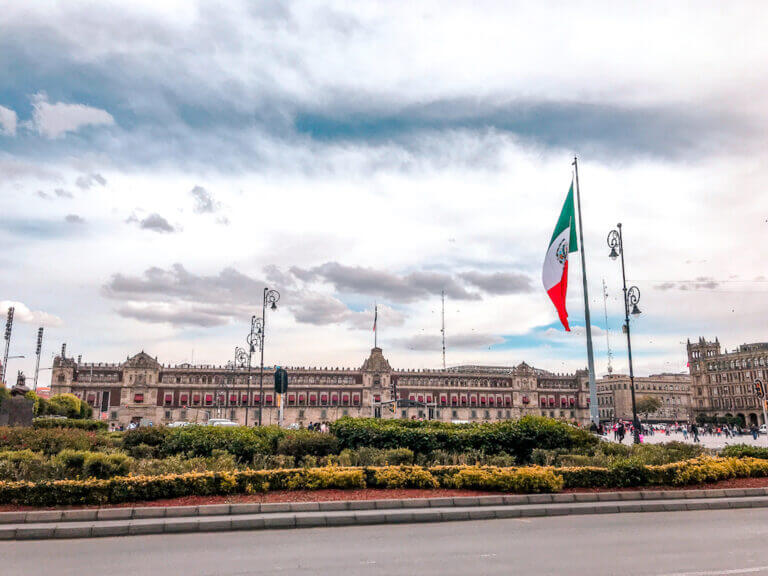
10 Fascinating Things to See in Mexico City’s Centro Historico
Mexico City’s centro histórico is a fascinating neighborhood in the heart of Mexico City. It is filled with historically significant sites and buildings. You could easily spend a week exploring there! Read on for some of my favorite spots to visit.
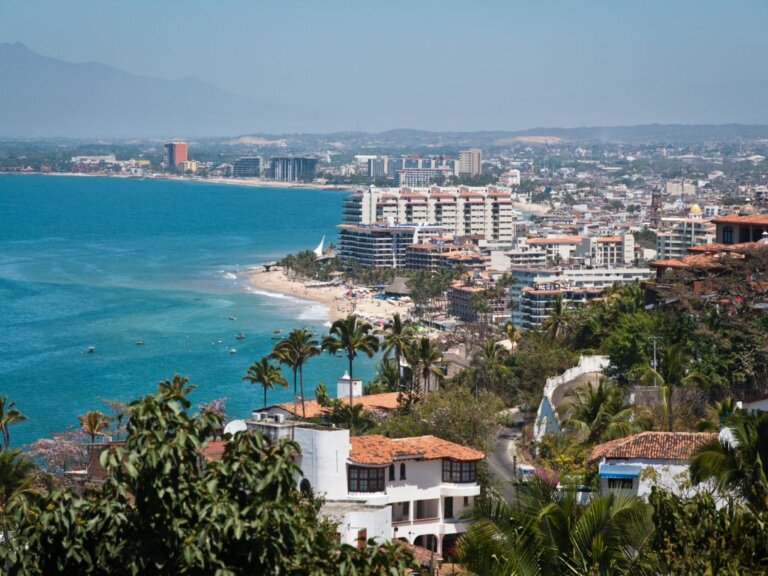
Is there Uber in Puerto Vallarta (and is it Safe?)
Are you planning a trip to sunny Puerto Vallarta and wondering about your transportation options? You’ll be pleased to learn that Uber is indeed available in Puerto Vallarta. Whether you’re a solo adventurer or exploring with friends, Uber offers a convenient and reliable way to navigate the city. For those who may not know Spanish,…
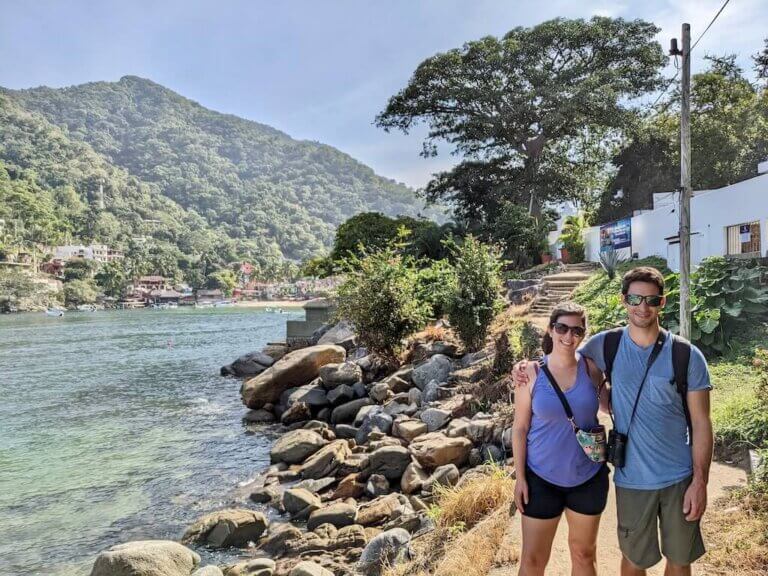
Easy Carry-On Packing List for Puerto Vallarta in 2024
Wondering what to wear in Puerto Vallarta, Mexico? This Puerto Vallarta packing list breaks down everything you need to bring for a great trip! If you’re trying to figure out what to pack for Puerto Vallarta, Mexico, I’ve got you covered! I know how confusing it can be to pack for a new destination, so…
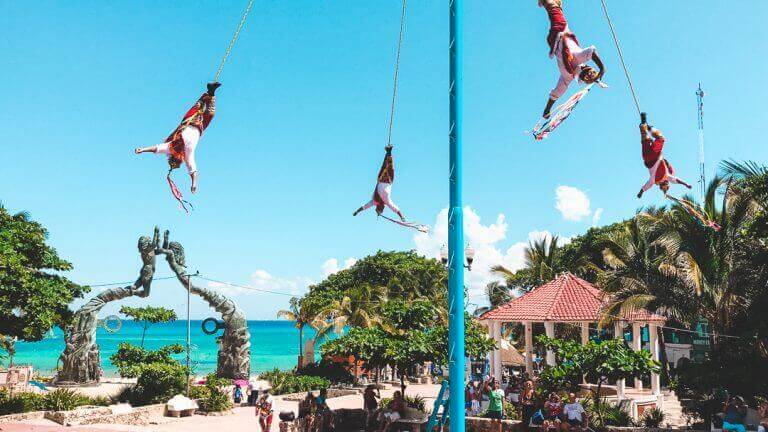
The Perfect 5 Day Playa del Carmen Itinerary for 2024 (+ MEGA Playa del Carmen Travel Guide)
Planning a trip to Playa del Carmen? This Playa del Carmen itinerary is packed with insider tips on how to make the most of 5 days in Playa del Carmen!
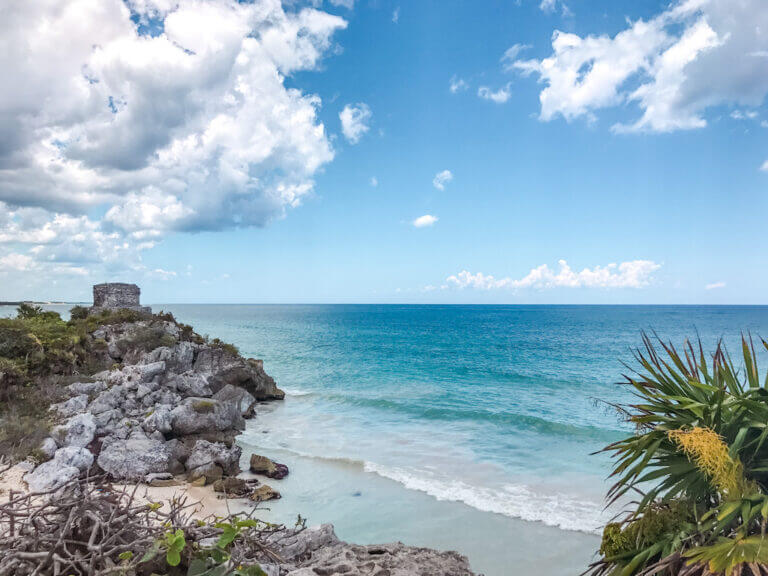
The 6 Best Things to Do in Tulum + Tulum Travel Guide
Dreaming of a trip to the Riviera Maya’s ultimate boho paradise? Check out all the best things to do in Tulum: immersive nature experiences, restaurants, cenotes, beaches, and more. Known for its dreamy boho aesthetic and idyllic beaches, Tulum is one of the most popular beach towns in Mexico. The scenery in Tulum is absolutely…

Experience Nature: 14 Exciting Outdoor Adventures in Mexico
Looking for some outdoor adventures in Mexico? This guide covers an awesome selection of activities that are perfect for an active vacation in Mexico.
What is the best time for weather on Oaxaca
It depends what types of weather patterns you want to avoid. The summer is the rainy season, so if you want to miss that, I would avoid visiting between May and August. Spring and Fall are probably the most comfortable in terms of temperature, but you can have a great visit at any time of the year. This page has more climate data to give you a more detailed look at patterns and fluctuations: https://www.climatestotravel.com/climate/mexico/oaxaca
What is the best form of transportation for visiting the small towns like San Martín Tilcajete and San San Bartolo Coyotepec?
Leave a Reply Cancel reply
Your email address will not be published. Required fields are marked *
Privacy Overview
Last updated on January 22, 2024 by Shannon
One of the most culturally rich places in Mexico, Oaxaca state is among my favorite places in the country. This region, and the city in particular, is widely known for it’s mezcal, chocolate, and mole; as well as the diverse indigenous groups still calling the Oaxaca Valley home after hundreds of years.
While I love traveling the Yucatán Peninsula for its intriguing Maya ruins and uniquely beautiful cenotes , Oaxaca provides a blend of food, culture, and history unique to this part of Mexico—what you can find here is impossible to enjoy the same way when visiting anywhere else.
And while tourists descend on Oaxaca (pronounced wa-HAH-kah) for the two most notable festivals, Guelaguetza and Day of the Dead, it’s vibrant and interesting year-round. The city has beautifully restored colonial buildings—many of which are now hotels, museums, and restaurants.
In the past decade, international travel magazines have featured Oaxacan chefs for their intriguing twists on classic dishes that have long shaped the history of Mexico’s food scene. Couple that with it being the birthplace of mezcal—a smoky, fiery liquor that has quickly risen as the drink of choice in hipster havens from San Francisco to London—and you will never lack for things to do when you visit Oaxaca .
Jump to the part of this travel guide, or start from the top and work your way through the information and recommendations for visiting Oaxaca, Mexico .
Table of Contents
Things to Know Before Traveling to Oaxaca, Mexico
During the pre-colonial period, Oaxaca was home to roughly 16 different cultures; each one had its own language, customs, and traditions. The Zapotecs and Mixtecas were the largest and most sophisticated of these, and this ratio holds true today as descendants are widely spread throughout the valley in small villages and farms.
Between 1500-500 B.C., San José Magote, a Zapotec city, was a significant settlement in Oaxaca, notable for its early use of pottery, a craft still evident in the region. Oaxaca, rich in cultural diversity, was home to about 16 different cultures, including the prominent Zapotecs and Mixtecs, whose descendants still populate the valley.
In the 15th century, the Aztecs conquered Oaxaca, but their control was brief. Hernán Cortés arrived in 1519, marking the beginning of Spanish influence. The Spanish colonization reshaped Oaxaca, evident in its colonial architecture and the haciendas that now dot the valley, many turned into mezcal plantations.
Oaxaca’s layout, with its central zócalo, reflects its colonial past. Despite Spanish rule, which lasted 300 years, the region saw significant changes, including the battle of Huajuapan in 1811, where Valerio Trujano’s forces claimed Oaxaca for the revolutionaries. Later, during the Mexican Revolution, Emiliano Zapata’s ideology that land belonged to the workers gained traction here.
Today, Oaxaca, with its blend of indigenous and colonial history, remains a culturally rich but economically challenged region. The city and state of Oaxaca continue to be a tapestry of historical layers, each adding to its unique character.
Fast Facts About Oaxaca, Mexico Travel
Mexican peso (MXN) ( current exchange rate )
Electricity
127V/60Hz (American plug)
Can you drink the water in Oaxaca?
No, the water is not safe to drink in Oaxaca. Expats and travelers should drink bottled, or consider the merits of a SteriPen or LifeStraw for your trip.
I used the tap water to brush my teeth, but other expats do not. If you’re a new traveler, or you have a sensitive stomach, use bottled water even for teeth brushing.
Local SIM Cards
This is a cinch and highly recommended for GPS and navigating. Telcel is likely your best option, although Movistar is popular in this region of Mexico (but not other regions).
For most travelers to Oaxaca, and especially those traveling to other areas of Mexico, opt for Telcel. If you have a U.S. T-Mobile account, it will do the trick, too.
There’s a full SIM guide here —note that you must show your passport to buy one at some locations (it’s hit or miss which places will ask to see it before selling you a SIM).
Festivals of Note
- Day of the Dead is the signature festival in this region of Mexico and Oaxaca is an ideal place to celebrate. Day of the Dead occurs around Halloween, specifically in the first days of November.
- Guelaguetza is huge and celebrates the 16 indigenous cultures of the Oaxaca Valley (July).
- On an offbeat note, The Fiesta de Rábanos , the Festival of the Radishes is lively and takes place in the zócalo around the Christmas holidays with fireworks and crafts (23 December).
Oaxaca’s Primary Airports
- Xoxocotlán in Oaxaca City (OAX)
- Bahías de Huatulco in Huatulco (HUX)
How’s the wifi in Oaxaca?
Wifi is rampant and available at guesthouses and cafes. The data plans are also solid inside of cities and tourist areas so you can tether to your phone if you buy a data plan.
Possible Issues
Not many. If you’re prone to nosebleeds, then the extremely dry winters might exacerbate the issue (it did for me).
And since Oaxaca is at altitude, those coming from sea-level may experience a few days of headaches and tiredness that can come from altitude sickness if you’re not acclimated. Stay well hydrated and get a good night’s sleep.
What’s the weather like in Oaxaca?
The winters in Oaxaca are mild, cool, and exceedingly dry. You won’t see snow in the city, but night-time temperatures can drop drastically, even on what was a seemingly mild winter day.
By mid summer, it’s scorching hot and unrelentingly sunny—bring a hat and sunscreen. Stay well-hydrated year round.
How much does it cost to travel Oaxaca?
Oaxaca is a favored destination for North American retirees because it’s so easy on the wallet. Extended-stay accommodation for the winter months books up early, but you can find affordable hostels and guesthouses year round.
A budget backpacker can get by with $30/day on the frugal side, and mid-range travelers will have plenty of tasty food and cute guesthouses to enjoy on a budget closer to $55/day per person.
Long-term, it costs well under $800 a month to live in Oaxaca City .
Accommodation
Accommodation is a cinch. I used the Moon Guide Oaxaca when moving around the state. If you’re basing yourself out of one of the major cities, consider using one of the booking engines.
While the city guides below go to my favorite hotel booking site, Booking.com , many great deals are also found on VRBO if you are member—vacation rentals can actually save you money since you often have a full kitchen, particularly if you’re a family or traveling with more than three people.
These websites have very established presences in this region of Mexico because of the number of North American snowbirds visiting each winter— vacation rentals are among the easiest ways to book nice spots in a good area of town. Backpackers can find dorms on Hostelworld , but most travelers, including budget travelers, can find great deals at Booking.com .
And if you buy a local SIM (which you should), you can easily call ahead and directly reserve spots en route. The months of December through February are very busy in Oaxaca City—if you plan any sort of extended stay, book ahead or you will not find affordable apartments and accommodations for rent.
If none of these will do, check out my detailed guide to finding good places to stay .
How to Get Around Oaxaca
The major roads are well maintained and connect most any place you’ll need to go, but this is a mountainous region of Mexico and there is no way to avoid the winding roads. If you are prone to motion sickness, the long bus rides will tax your ability to stay well.
For shorter rides, colectivos , shared taxis, are an easy way to visit any of the rural towns. These taxis congregate at Abastos market (also called “central” when you/drivers are returning to the city), and a few other spots around town.
The northeastern colectivo launching point that I reference in the recommended daytrips is pinpointed here —it’s easy to find because of the nearby McDonald’s. Go to this spot, then find a shared taxi with the name of your destination painted on the side. The colectivos usually cost 10-25 pesos max to any towns out in the Valley, and they add people to the car as you drive in the direction of your destination.
Of note, the local buses are considerably safer than colectivos , but less convenient. If you have Spanish and time on your side, these buses ply the main highways out of town. You will have to know your stop by sight or beg help from locals. You can catch a bus to the day-trip spots from the same spot where you catch a colectivo .
In Oaxaca City, the taxis are a flat fee; they are convenient if you find yourself out late and not prepared to navigate the cobbled streets on the way home. That said, most of Oaxaca City is walkable and you can explore everything in the city on foot.
Getting to or from Oaxaca
Use Bookaway to find the best route to or from Oaxaca, which includes public transport, flight prices, and the price of private or shared shuttle transfers. A lot of travelers arrive from Mexico City or Puebla , and those routes have quite a few options .
Note that the Ado bus network is extensive and ideal for those on a budget. These buses are large, comfortable, and affordable. Rental cars are easy to come by, although expensive to rent—they tack on huge fees and taxes to the offered price (read this thorough piece on navigating rental insurance in Mexico ).
Food & Drink Considerations
Food standards are good in this region of Mexico, and Oaxaca is famous for its culinary traditions and history. This is the “Land of the Seven Moles,” and they take their food (and pork in particular) seriously.
The water is not safe to drink, but bottled water is easy to find. Street food is scattered around, but the markets hold most of the street eats, so check the guides below to known where you can find the affordable and tasty street eats.
Outside of the markets, you can most often find steamed corn ( elotes and esquites ), burgers, and sometimes a taco stand. If you decide to stick to budget and street food options, follow these food safety principles .
If you’re vegetarian, Oaxaca is a hard place to eat. Because of that, I wrote a dedicated post outlining how to eat vegetarian in Oaxaca, Mexico , specifically.
Mezcal is the drink of choice in Oaxaca and you don’t have to go far to try it. It’s a very strong and smoky liquor, like tequila with a very distinct flavor. I don’t care for mezcal in any fashion (and there are many types and flavors to try), but I was in the minority, by far. In my group of friends, I alone didn’t enjoy the drink.
That said, I did enjoy learning about the history of the drink and understanding the importance of the agave plants to the local populations. I recommend mezcal tours in the city guides below; I highly recommended that you sign up for one.
Is Oaxaca safe to visit?
Although a few regions of Mexico have cartel violence and safety concerns, Oaxaca State is mostly free from these threats.
You may, however, encounter issues with the local protests—Oaxaca is famous for the amount of protests and these protesters are usually nonviolent, but they do close down the roads for entire days. The protests ramp up every year around May. Many times, these take place outside of the tourist areas, but occasionally the protest focuses on the city-center’s zòcolo.
By and large, tourists shouldn’t fear the protesting activity as it is most often teachers protesting wages, villages protesting new laws, and things of that sort. Again, it’s not targeted toward tourists and the tour companies and people of Oaxaca will be grateful to see you no matter what types of local protests are occurring at the time. But, you should double-check local information before traveling there in spring/summer.
In terms of personal safety walking around town, you should have no issues walking the city center after dark, it’s lively and active until midnight; and later on the weekends. Cabs are always nearby too, if you need a quick lift home.
No matter what time of day, be cautious of petty theft and opportunistic crimes like bag and phone snatching by a motorbike zooming past—it’s not common, but nor is it unheard of. There have been problems with muggings for solitary hikers near the Cerro del Fortin auditorium.
Check the U.S. government’s travel warnings to keep abreast of that situation, but mostly don’t be up there after sunset, or alone with expensive gear.
Don’t forget to book travel insurance for your trip —a great policy provides coverage in case of medical emergencies, lost or stolen gear, adventure sports riders, and more. I’ve used IMG Global for more than a decade highly recommend it !
Pre-Trip Reading Inspiration: Books About Mexico

Fiction & Nonfiction Books About Mexico
- La Casa de los Secretos : Only available in Spanish, it’s also the only novel I could find set in Oaxaca and sharing the culture and history unique to this area. You should definitely read it before visiting if you can read Spanish.
- Mexico: Biography of Power : For the history buff, it doesn’t get much better than this comprehensive look at how the centralization of power throughout Mexico’s history has shaped not only the country, but all of Latin America.
- The Death Of Artemio Cruz : Hailed as a masterpiece and a “haunting voyage into the soul of modern Mexico,” this novel uses the narrator’s flashbacks to process how the country’s past continues to affect the present.
- Sliced Iguana: Travels in Mexico : On my list for a while now and recommended by readers as an easy read that gives a light touch to all the history and culture she talks about while retelling her journey.
- The People’s Guide to Mexico : Even veteran Mexico travelers will enjoy this book. It’s like a guidebook, but even more. It’s hands-down the best guidebook you should use to understand the various regions, the cultural quirks, and all the reasons Mexico is a fantastic place to travel and live. Unlike the Lonely Planet recommended above, this one is a cultural guide to the country. It comes highly recommended by me, and by heaps of Amazon reviewers too.
- Frida at Home : A beautiful and well-researched book on Frida Kahlo, one of Mexico’s well known artists and a national icon. From her early life to her painting and marriage to Diego Rivera, give one a peek into how Mexican culture and landscapes shaped this magnificent woman.
Podcasts and Online Reads About Mexico
- The Rise of Mezcal: Great for Cocktails, Better for Oaxaca : Mezcal is the favored drink in Oaxaca State, and it’s making waves all over the world too. This is a great read on the history of mezcal and a necessary reading before signing up for your own mezcal tour to a nearby palenque .
- Mexico: History and Resistance : A solid podcast that makes listening to the country’s history easy. Download this and prep for your Mexico trip by taking a trip through time.
- Mexico with kids : Good niche read with a lot of facts and information you might be wondering about family specific travel.
Read all my Mexico travel stories and find more regional fiction and nonfiction books and long-reads .
Recommended Guidebook
The Moon Guide Oaxaca is your best option. I always carry a paper guidebook so that I can easily read the history of each site while I am there. I also have a travel guide to the Yucatan Peninsula and Guatemala for those heading that way.
Socially Responsible Travel in Oaxaca, Mexico
Socially responsible travel in Mexico is easier than in some parts of the world. The dark side of animal tourism haunts many travelers in Southeast Asia . But in Mexico, responsible tourism focuses more on people than animals (excluding the diving done along the coast!).
Oaxaca is the heart of indigenous Mexico and Oaxaca State has a large concentration of the indigenous cultures—16 different groups with unique customs and languages date back hundreds of years. There are general tactics for responsible travel anywhere in the world, and those linked tips allow you to lessen your impact on the places you visit.
For Oaxaca specifically, let’s look at the regional activities and treks, as well as how to find responsible volunteering opportunities.
Pick out accommodation on Booking.com.
This is the only booking platform I use because it rewards you for loyalty, and I regularly score free breakfasts and 15% off my hotel.
Trekking & Cabañas
Oaxaca State is a mountainous region encompassed within the Sierra Madre de Oaxaca. This unique location makes it the ideal place to plan nature hikes and remote homestays within the indigenous communities.
In fact, community-based tourism (CBT) is the number one way to responsibly visit the mountains outside of Oaxaca, as well as the local indigenous cultures. Many of the cabañas are well-appointed too. Some are rustic, but others offer many creature comforts you wouldn’t expect to find in such rural areas.
These communities have invested a lot of money and resources in making their cabañas and towns hospitable to tourism. That said, there is painfully little advice on how to arrange a trek or a weekend at one of the cabañas.
For formal trekking tours, where you go on a proper adventure with guides, Expediciones Sierra Norte is the best company. Not only are their tours great, but they have sound responsible tourism practices. They have offices in Oaxaca Centro if you want a face-to-face before booking something.
For indie travelers with a bit of Spanish and a sense of adventure, you can book directly with the cabañas located in towns all over the region. Oaxaca Mio offers the best information on each site, what they offer, and contact information. That fantastic yellow map is from its website, and it’s the only one like it that I’ve ever found.
Oaxaca Mio provides information on programs in all the tiny towns, like San Miguel del Valle , which is an uber traditional town where I spent many of my volunteers hours . You can also find information on the nearby Pueblos Magicos , which are cultural heritage towns singled out by the government as special. The green area on the map, Pueblos Mancomunados , is particularly popular with birders and nature lovers.
Volunteering in Oaxaca
Oaxaca has a range of opportunities for travelers keen to volunteer in the region. Most of the volunteer opportunities require at least a few weeks commitment from volunteers to ensure greatest impact. That said, there are opportunities for short-term projects if you have specialized skills such as any sort of medical or healthcare background, or a background in construction and building-type work.
The indigenous communities outside of Oaxaca often lack access to strong healthcare. For that reason, doctors in any field (medical, dental, ophthalmology, physical therapy, etc) are particularly useful, even in short clinics. If you’re a medical volunteer heading to Oaxaca, you can certainly find an outlet for your skills and knowledge.
There are many large NGOs offering paid programs, but you can easily find indie opportunities that only require you to cover your own room and board for this type of travel. Consider this list of vetted independent volunteer opportunities in Mexico —there are extensive options in Oaxaca State.
Supporting Responsible Businesses
Consider using and visiting these Mexican social enterprises on your trip . Supporting social enterprises is one of the easiest ways to create a trip with positive impact. This means picking businesses that are using funds to support local communities and to offer training, support, or to protect natural resources.
You can do everything from shop for souvenirs to learning how to make pure chocolate to picking a trekking guide to finding a homestay—all with companies committed to social impact and respect.
World Travel Planning Resources
From the best travel gear to how to pick travel insurance—a detailed list of resources, tips, and advice to help you plan an amazing trip.
Best Things to Do in Oaxaca, Mexico
Oaxaca State is a popular tourist region in Mexico. My list of the Best Things to Do in Oaxaca has the detailed transportation information you’d need to actually visit these places, and covers everything to do in Oaxaca City, and as day or weekend trips into the surrounding mountains and ecotourism hotspots.
If you head to the coast, use this thorough Travel Guide to Puerto Escondido .
My Favorite Oaxaca Travel Experiences:
- Volunteering with En Vía and learning more about the region’s indigenous cultures and how microfinance is helping them better their lives.
- Visiting the Zapotec cities and villages east of Oaxaca, like Teotitlán and others.
- Hanging out with friends in Oaxaca City’s zócalo in the evenings and soaking in the music, laughter, and happiness.
- Visiting the stunning frozen waterfalls at Hierve el Agua outside of Oaxaca.
- Taking photo walks during the golden hour before sunset to capture the gorgeous churches and lively street scenes and colorful graffiti around the city.
Things to Do in Oaxaca City Center
In the heart of Mexico, Oaxaca stands as a beacon of cultural richness and diversity, offering a myriad of experiences that blend history, art, and nature into a tapestry of unforgettable moments.
In addition to the traditional things to do, use Que Pasa Oaxaca ‘s event’s guide to see the upcoming shows, lectures, arts performances, and more.
Here’s a curated list of the best things to do :
Museo de las Culturas de Oaxaca
Housed in the beautiful Santo Domingo complex, this museum is a treasure trove of Oaxacan history and culture. Explore exhibits that tell the story of the region from pre-Hispanic times to the present.
Then go book a chocolate workshop run by CACAO Cooperative is a very small social enterprise still growing its business. It’s a hands-on way to learn every step of the process from a wonderful business.
Templo de Santo Domingo
A marvel of Baroque architecture, the Santo Domingo Temple dazzles with its intricate gold-leaf interior. It’s a testament to the artistic and religious fervor that has shaped Oaxaca.
Jardín Etnobotánico de Oaxaca
Adjacent to Santo Domingo, this ethnobotanical garden is a living encyclopedia of Oaxaca’s diverse plant life. It’s a serene escape that highlights the importance of flora in Oaxacan culture.
Mercado Benito Juárez & Mercado 20 de Noviembre
Dive into the heart of Oaxacan life at these bustling markets. They’re a sensory feast of colors, smells, and sounds, offering everything from handicrafts to local delicacies.
Mezcal Tasting
Immerse yourself in the world of mezcal, Oaxaca’s iconic spirit. Visit local distilleries to learn about its production and savor the smoky flavor that captures the essence of the region.
Learning Spanish
Embrace the local language to deepen your connection with Oaxaca. Engaging in Spanish lessons enhances your ability to interact with locals, understand the culture, and navigate the city with greater ease.
Consider ICO or Oaxaca International . This page also provides a full list of Spanish schools in the city .
Hanging Out in the Zócalo
The Zócalo, Oaxaca’s main square, is the city’s beating heart. Spend time here to soak in the lively atmosphere, observe the daily life of Oaxacans, and perhaps catch impromptu musical performances or local gatherings.
Taking an En Vía Tour
Participate in an En Vía tour to experience responsible tourism. These social enterprise tours offer insights into local communities, supporting women’s empowerment and sustainable development through microfinance across the Oaxaca Valley . These tours are the single best way to learn about the indigenous cultures in this region of Mexico.
Book a day tour to maximize your time.
GetYourGuide has a phenomenal range of tours, and they’re affordable too. Maximize your time by booking your must-dos as a tour, and then slot in the rest as time permits.
Doing a Mezcal Tour in the Valley
Embark on a mezcal tour in the surrounding valleys. These tours not only allow you to taste various mezcals but also provide a behind-the-scenes look at the traditional methods of mezcal production, deeply rooted in Oaxacan culture.
If you can get a spot, opt for a tour with Omar Alonso , a local Oaxacan running food and mezcal tours in the city .
Shopping for Local Handmade Goods
Oaxaca is a haven for handcrafted goods, especially tapetes (handwoven rugs). Visiting local markets and workshops gives you the chance to purchase these unique items directly from the artisans, supporting their craft and taking home a piece of Oaxacan heritage.
Taking a Cooking Class
Engage in a cooking class to delve into Oaxaca’s renowned culinary scene. Learn to prepare traditional dishes using local ingredients, an experience that offers both a taste of the region’s flavors and an understanding of its culinary traditions.
El Sabor Zapotec is a cooking class run by Reyna Mendoza, one of the women in the En Vía microfinance program, and it’s well done.
Best Day Trips from Oaxaca
Venturing beyond the colorful streets of Oaxaca City reveals a landscape rich with natural wonders and ancient sites, each offering a unique glimpse into the region’s soul.
Use my detailed list of things to do for transportation information on any of the day trips mentioned or highlighted in this Oaxaca Travel Guide. These day trips will enrich your journey with unforgettable experiences—I loved each one of these for its ability to lead me through the tapestry of Oaxaca’s diverse cultures and topography.
Hierve el Agua
Venture to these natural rock formations resembling cascades of water. The mineral-rich springs here create a surreal landscape, perfect for a refreshing dip and awe-inspiring photos.
Explore this archaeological site known for its intricate geometric mosaics. Mitla was a religious center for the Zapotecs and later the Mixtecs, and its unique artistry is a marvel.
Witness the grandeur of the ancient Tule Tree, one of the world’s largest living beings. Its immense girth and age make it a natural wonder and a symbol of endurance.
Teotitlán del Valle
This village is famed for its handwoven textiles. Meet artisans who use traditional techniques to create vibrant rugs and tapestries, each a piece of living heritage.
San Bartolo Coyotepec
Known for its black pottery, this village offers a glimpse into an ancient craft. Discover the skill and artistry behind each piece, shaped and fired using age-old methods.
Monte Albán
Perched atop a mountain, Monte Albán’s ancient ruins offer a window into the lives of the Zapotecs. Wander among the pyramids and tombs, feeling the echoes of a civilization that thrived centuries ago.
Where to Stay in Oaxaca
Midrange : La Betulia , a charming B&B connected to the En Vía social enterprise , offers a beautifully renovated space in a central location, while El Diablo y La Sandía stands out for its unique touches and warm, family-run hospitality.
Budget : Casa Angel Hostel is the top choice for budget travelers, boasting clean, spacious, and modern private rooms, a communal kitchen, free Wi-Fi, and a lively backpacker atmosphere.
Upscale : For a luxurious stay, consider Hotel La Casona de Tita , known for its tranquil ambiance and homemade breakfasts, or Casa de las Bugambilias , acclaimed for its small charms and exquisite bedrooms.
Where to Eat and Drink
I recommend Los Danzantes or Catedral as the most vegetarian-friendly upscale restaurants. Casa Oaxaca is not a good bet for vegetarians, but is great for others. And I did not eat at Pitiona, another top fusion restaurant in town so I can’t weigh in there but it should be on your radar.
Grab coffee . For a quick coffee, stop at a Café Brújulas—I miss those the berry muffins. My favorite tiny spot is Alma de Cafe ( Margarita Maza de Juárez 211-A )—it also offers salads, fresh-baked muffins, and cookies.
Drink Mezcal . Mezcalarita is one good option ( Macedonio Alcalá 706 ). Mezcalogía is perennially popular ( García Vigil 509 ). And if you’re really into the drink, this list is better than many I’ve seen online.
Onward travel
Having spent a number of months backpacking Central America and Mexico across multiple trips, plan your time in the following locations.
Mexico » Yucatan Peninsula | Yucatan with Kids | Oaxaca City | San Pancho | Guanajuato | Chichen Itza | Secret Mud Beach | Cultural Immersion | Taco History | Colonial Mexico
Guatemala » Antigua | Tikal | Rio Dulce | Xela | Chichicastenango | Learning Spanish | Semana Santa | Easter Traditions
Belize » Chetumal Border | Culture
Honduras » Copan Ruinas | Utila | Culture
Essential Travel Planning Resources
❗ Yes, you need travel insurance . IMG Global is the travel insurance I’ve used for well over a decade of traveling solo, and with kids. Here’s why .
🧳 Smart packing can save your trip. Shop my favorite travel gear , including all of the packing essentials for world travel , gear to keep you safe on the road, my favorite travel books , and more.
🛏️ Find great accommodation . Booking.com is essentially the only hotel booking site that I use. It has a wide and affordable selection of traditional hotels, but also hostels and vacation rentals, too. Use these pro tips to find the best travel accommodation .
📍 Navigate more effectively. Rome2Rio is super handy to assess the full range of transport options between two cities—shows everything from flights to trains, buses, minibuses, and more. If you’re booking a rental car, I’ve always found the best deals on RentalCars.com .
✈️ Book affordable flights. Expedia is one of the first places I look for low-cost flights .
☕ Peruse all of my tips for round the world travel , or learn how to move and live abroad .
We've detected unusual activity from your computer network
To continue, please click the box below to let us know you're not a robot.
Why did this happen?
Please make sure your browser supports JavaScript and cookies and that you are not blocking them from loading. For more information you can review our Terms of Service and Cookie Policy .
For inquiries related to this message please contact our support team and provide the reference ID below.

IMAGES
VIDEO
COMMENTS
Oaxaca tourist activity peaks in three seasons: Holy Week, summer (especially during Guelaguetza), and New Year. ... and a district attorney's office. Now it serves as the Municipal Palace. The building conserves a number of valuable items such as paintings, sculptures religious vestments, and a pipe organ dated 1686. Former Monastery of Del ...
Award-winning travel Guide for the State and City of Oaxaca: 1000+ photographs and 400+ pages of text describing all Natural and Cultural Attractions of Oaxaca, including Huatulco, Puerto Escondido, the Guelaguetza, Mitla, Monte Albán, and many more. Also contains travel tips for Oaxaca, local events and activities, up-to-date weather forecast ...
Here are 10 things you should know when planning your trip to Oaxaca City. 1. Book ahead for Día de Muertos and Guelaguetza. Reserve accommodations months in advance if you plan on visiting in November for Día de Muertos (Day of the Dead) or in July for the Guelaguetza Festival (a renowned cultural event showcasing Oaxaca's folkloric dance ...
The indomitable spirit of our state is an incomparable part of its magic towns and the tourist wonders that make them unique, as well as the hospitality of their inhabitants and the quality of their services, await your visit to help conserve, share the magic and light of Oaxaca. Mitla. Magic Town.
Welcome to Oaxaca! It has peaks almost 10,000 feet (more than 3,000 metres) high, caverns among the deepest in the world, virgin beaches, hidden jungles, and luminous valleys that house populations where, as a crucible, cultures of all people who once lived in its midst come together. ... This Award-winning comprehensive Tourist Guide contains ...
The state of Oaxaca is home to over 300 miles of coastline, so there are plenty of beaches to explore on a weekend getaway. Puerto Escondido, for example, is amassing a lot of tourist attention ...
Address: Av Independencia S/N, Centro, 68000 Oaxaca, OAX. 2. Squares and Markets: Zócalo and Mercado Benito Juárez. Many of the most important of Oaxaca's best places to visit are to be found in the city's historic downtown core, an area centered around its central square, or Zócalo: the Plaza de Armas.
Guelaguetza (last two Mon in July). In Oaxaca, a mixture of traditional dancing and rites on the Cerro del Fortín. Highly popular; tickets for the good seats are sold at the tourist office. Fiestas (Aug 13-16). Spectacular festivities in Juchitán (Vela de Agosto) and Tehuantepec (Fiesta del Barrio de Santa María Relatoca).
Planning Your Trip. Best Time to Visit: The best time to visit Oaxaca is in the late fall or the spring, although any time of year is pleasant. Language: The primary language spoken is Spanish. About 35 percent of the population also speaks an indigenous language. Zapotec and Mixtec are the most spoken indigenous languages, but there are 16 spoken.
In the city of Oaxaca you will walk streets full of color and tradition, you will discover in every corner its history, its wonderful crafts, its exquisite cuisine and its good mezcal. If you visit Huatulco you will relax on its 36 beaches, explore its wonderful landscapes, or feel the adrenaline in its rapids, practice sport fishing, and be in ...
Oaxaca City. Oaxaca is the most diverse state in Mexico. It has peaks that reach more than 3,000 meters high, caverns that are among the deepest in the world, virgin beaches, secluded forests, and sunlit valleys. Oaxaca is rich in traditions and customs and has the largest ethnic population found in Mexico.
Alameda de Leon. Centro, 68000 Oaxaca. Alameda de Leon is a central square in Oaxaca City, named after the Oaxacan-born President Benito Juárez (born Benito Juárez León). This leafy plaza is a popular gathering spot for locals and visitors alike, offering a peaceful respite amidst the city's hustle and bustle.
The Oaxaca tourism office I usually visit is located downtown at 102 Calle Mariano Matamoros, and of course, there are other offices scattered around the city. They are usually open between 9:00 am and 6:00 pm. 2. Take a City Tour or a Free Walking Tour.
Addresses, phone numbers and contact information for visitor centers and other organizations that provide tourism information in the Oaxaca City area are listed below. Feel free to call any of them during normal business hours with your questions. Oaxaca City Tourism Resources
Its main industry is tourism. Oaxaca's official currency is the peso: 1 peso is equal to roughly 5 cents. Since the Mexican peso to U.S. dollar exchange rate fluctuates, ...
Oaxaca City is located in the highlands of Oaxaca at an elevation of over 5,000 ft (1,500 m). The rainy season starts in April and ends in October. The coolest month is December, with an average high of 80.8 F (27.1 C) and low of 49.3 F (9.6 C). We were there the entire month of October and the first week of November.
Txalaparta for Dancing. Dance well into the wee morning hours at this energetic nightclub in Oaxaca city. Txalaparta is one of my favorite places to go dancing in Oaxaca. 📍 Google Maps | Phone: +522025551212 | Hours: 1 pm-3 am Monday-Saturday, 1 pm-2:30 am Sundays | Entrance: Free | 👉 Browse Tours on Viator.
Oaxaca state is the 10th largest in Mexico, with a population of almost 4 million. It's in the southwest of the country. While the state's mountainous and rugged terrain does make journeys through Oaxaca a little longer and more challenging, it's also been a contributing factor to the survival of many indigenous peoples and cultures (although of course the picture's not all rosy).
5. Try a street-stall hamberguesa. The hamberguesa is a delicious but unhealthy must-eat meal. It's a burger topped with a hot dog, sliced cheese, Oaxaca cheese, ham, pineapple, lettuce, tomato, and jalapeño. It's all the unhealthy foods you could ever want for just 50 MXN. Cangreburguer sells one of the best.
16 | Hierve el Agua. Mitla is also the gateway village to one of the best places to visit in Oaxaca, Hierve el Agua. The petrified waterfall, which names literally translates to "boiling water," is located near the small communities of San Lorenzo Albarradas and San Isidro Roaguia.
Oaxaca City. The State Tourism Office is in a state of flux. No longer located on the Alameda de León, it's in a temporary office on Calle Murguía, around the corner from the Camino Real. ... State Tourism Office (Calle Murguía 204, at Calle 5 de Mayo, Centro Histórico, Oaxaca City, Oaxaca, Mexico. PHONE: 951/514-2155, www.oaxaca.gob.mx ...
Day 1: Centro Historico: Mercados, Zocalo, Templo de Santo Domingo, Botanical Garden. The first day of this Oaxaca City itinerary is all about getting to know the city itself. The entire downtown is a UNESCO World Heritage Site, and there's no shortage of attractions to hold your attention.
Last updated on January 22, 2024 by Shannon. One of the most culturally rich places in Mexico, Oaxaca state is among my favorite places in the country. This region, and the city in particular, is widely known for it's mezcal, chocolate, and mole; as well as the diverse indigenous groups still calling the Oaxaca Valley home after hundreds of ...
A tourist walks under a themed decoration in Oaxaca, Mexico, on Saturday, Jan. 27, 2024. ... Today on CityLab: Amid Tourism Surge, Oaxaca Residents Resist 'Disneylandization ...